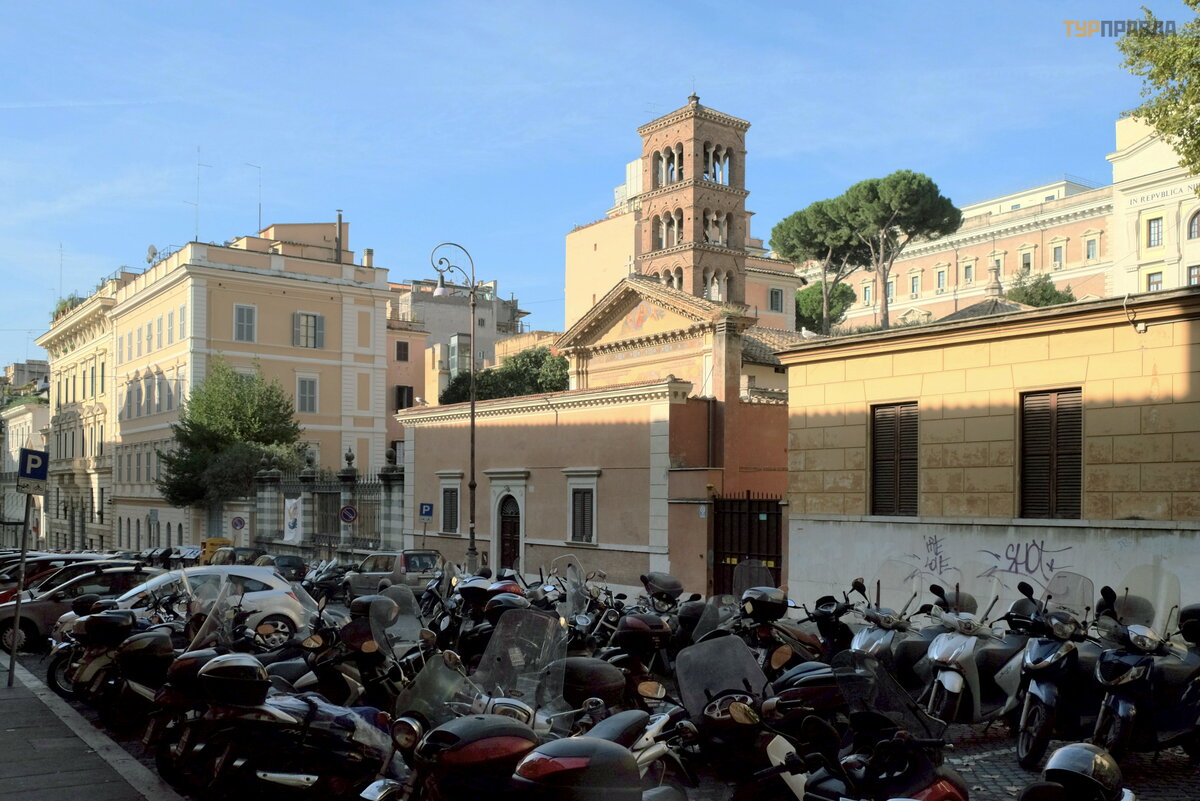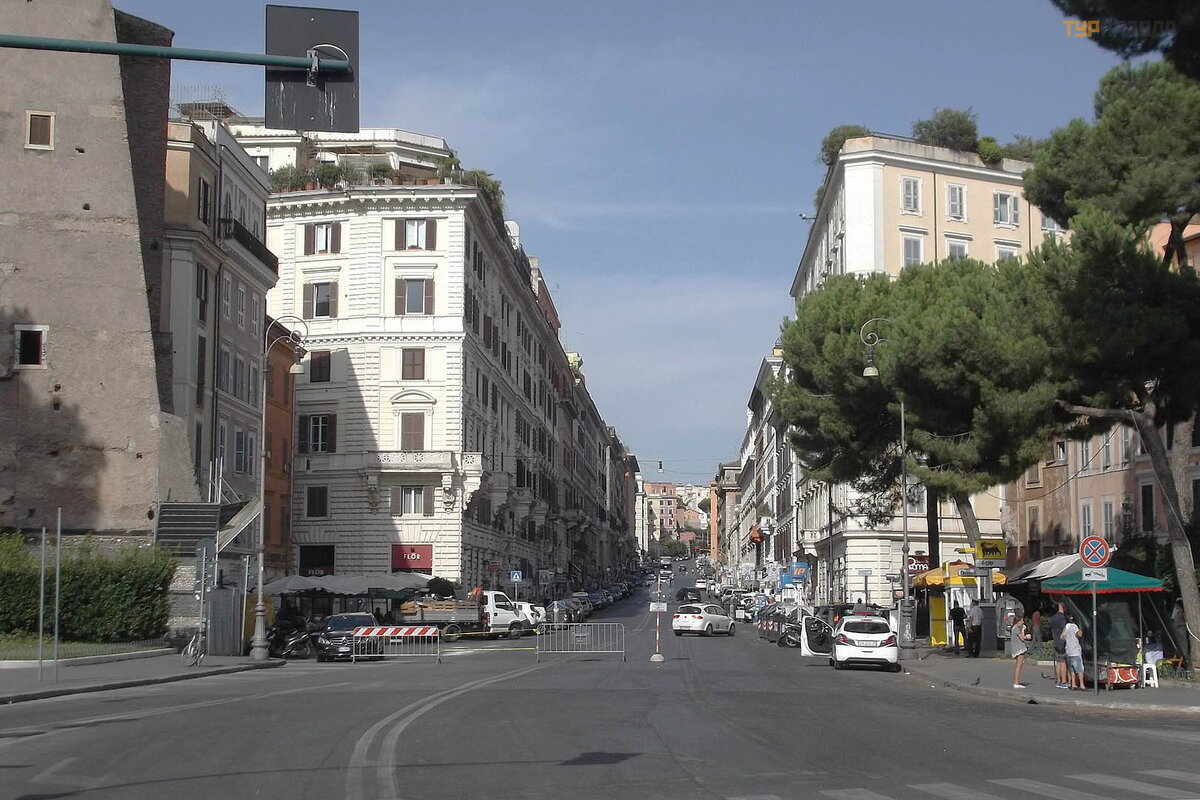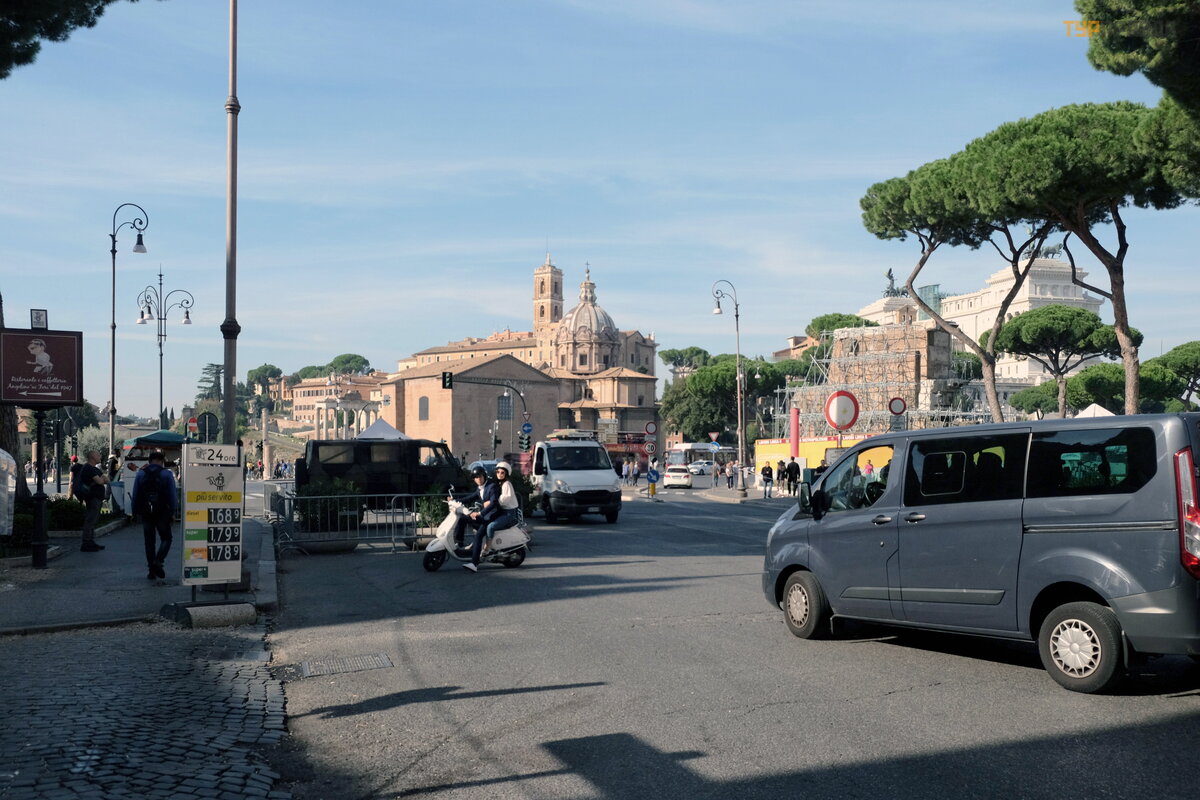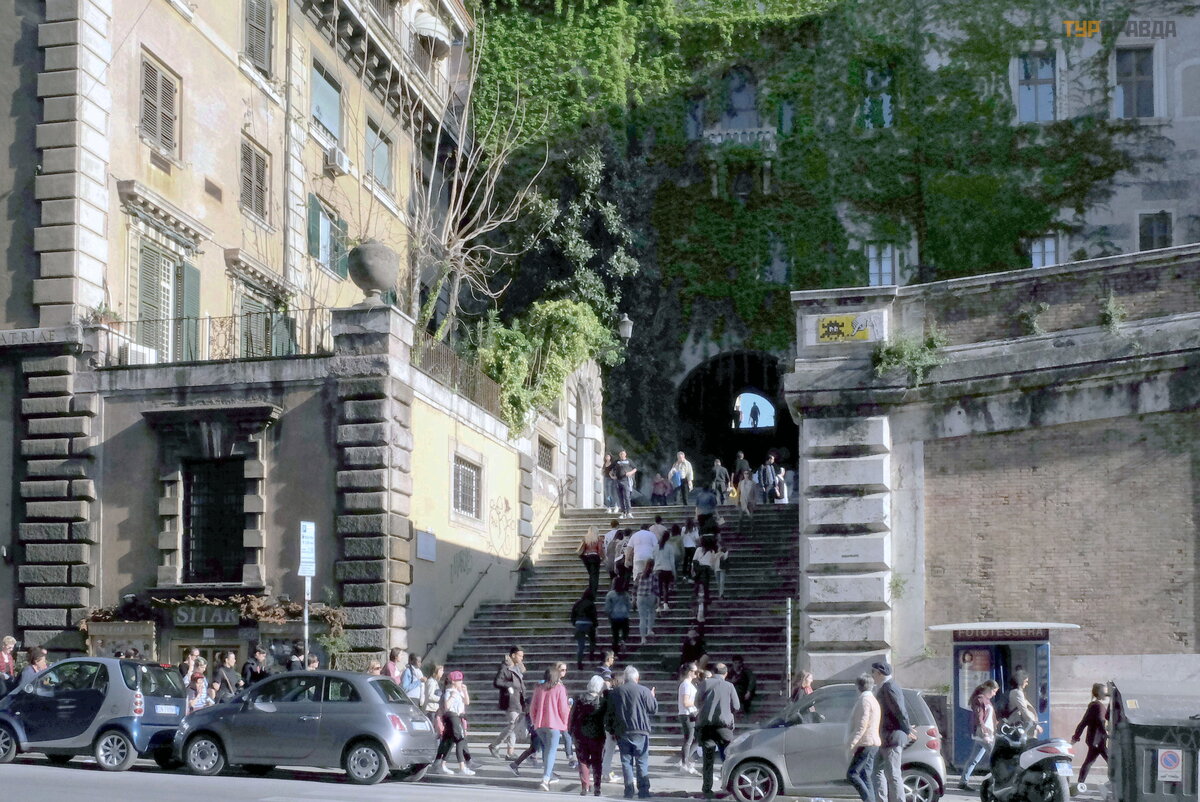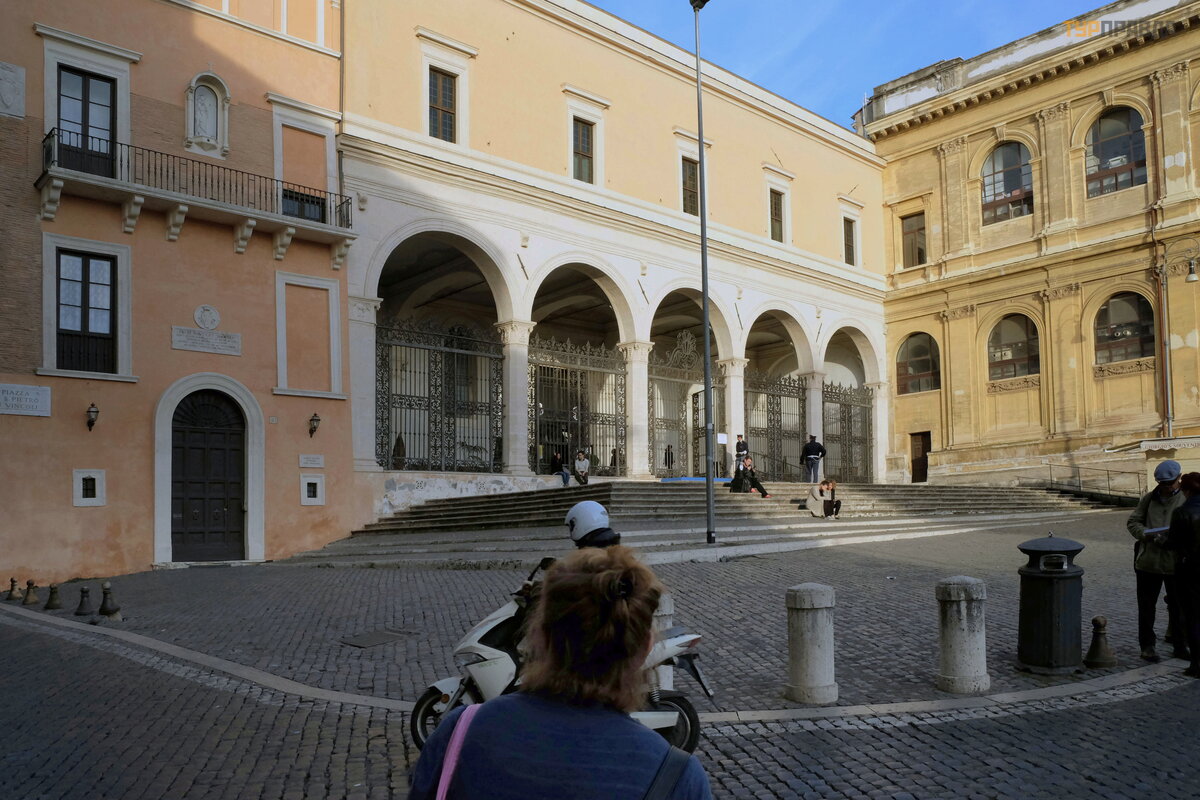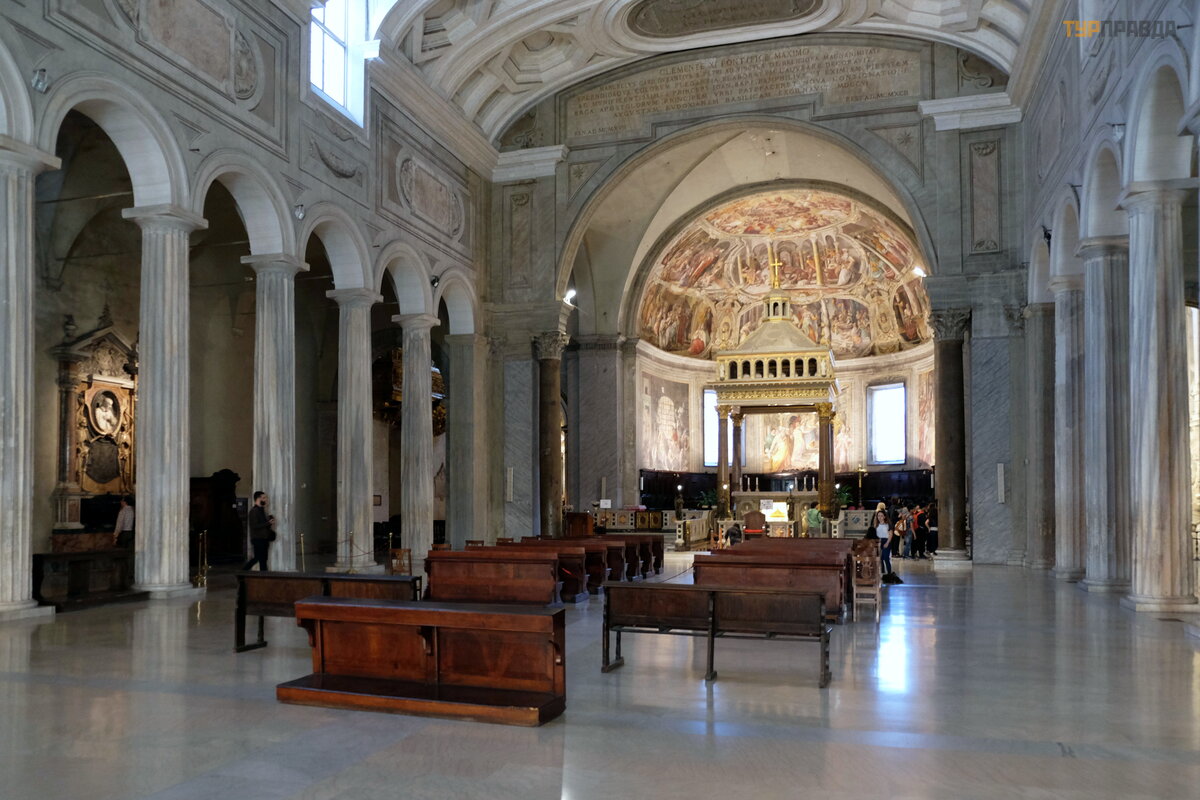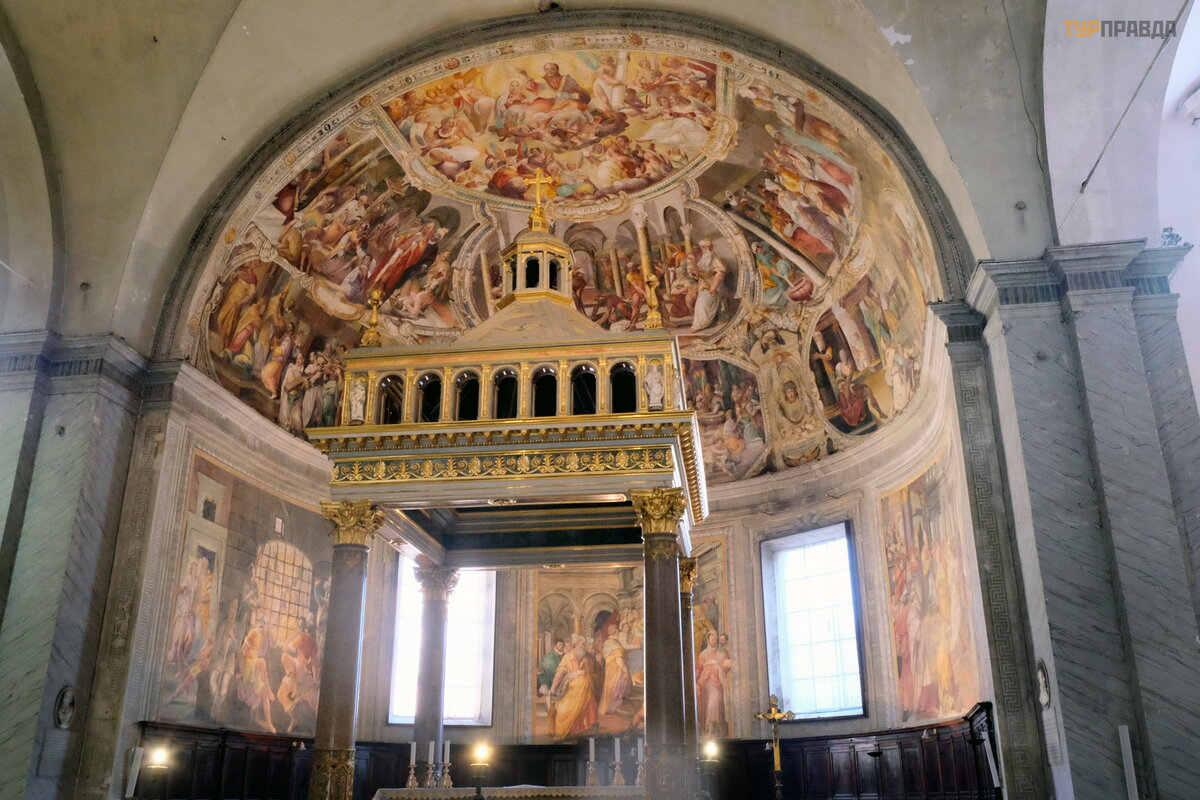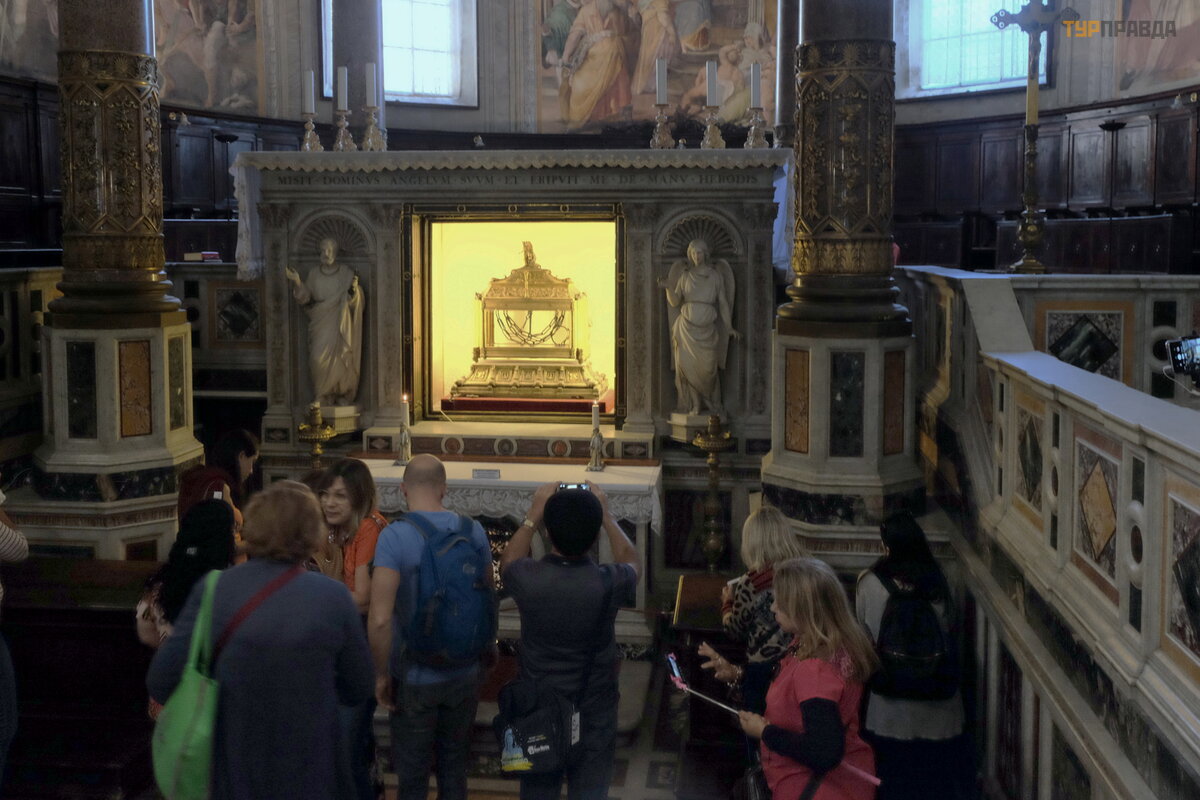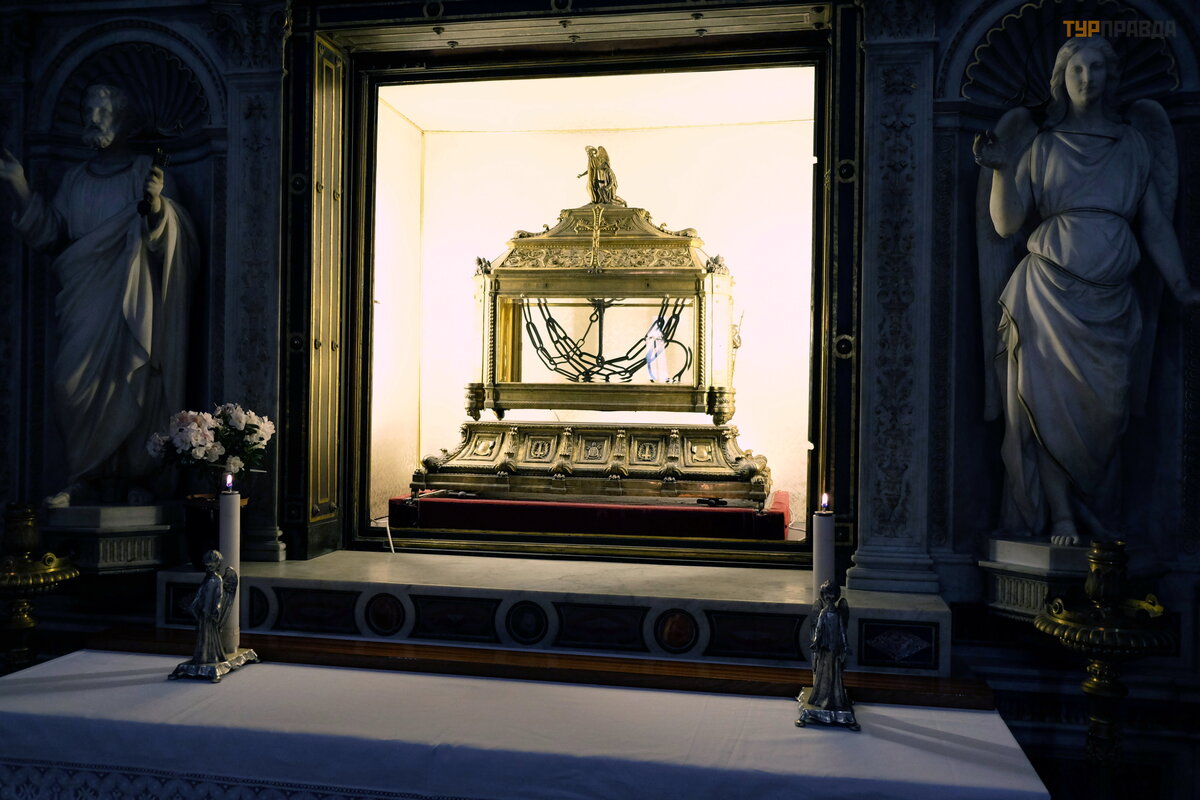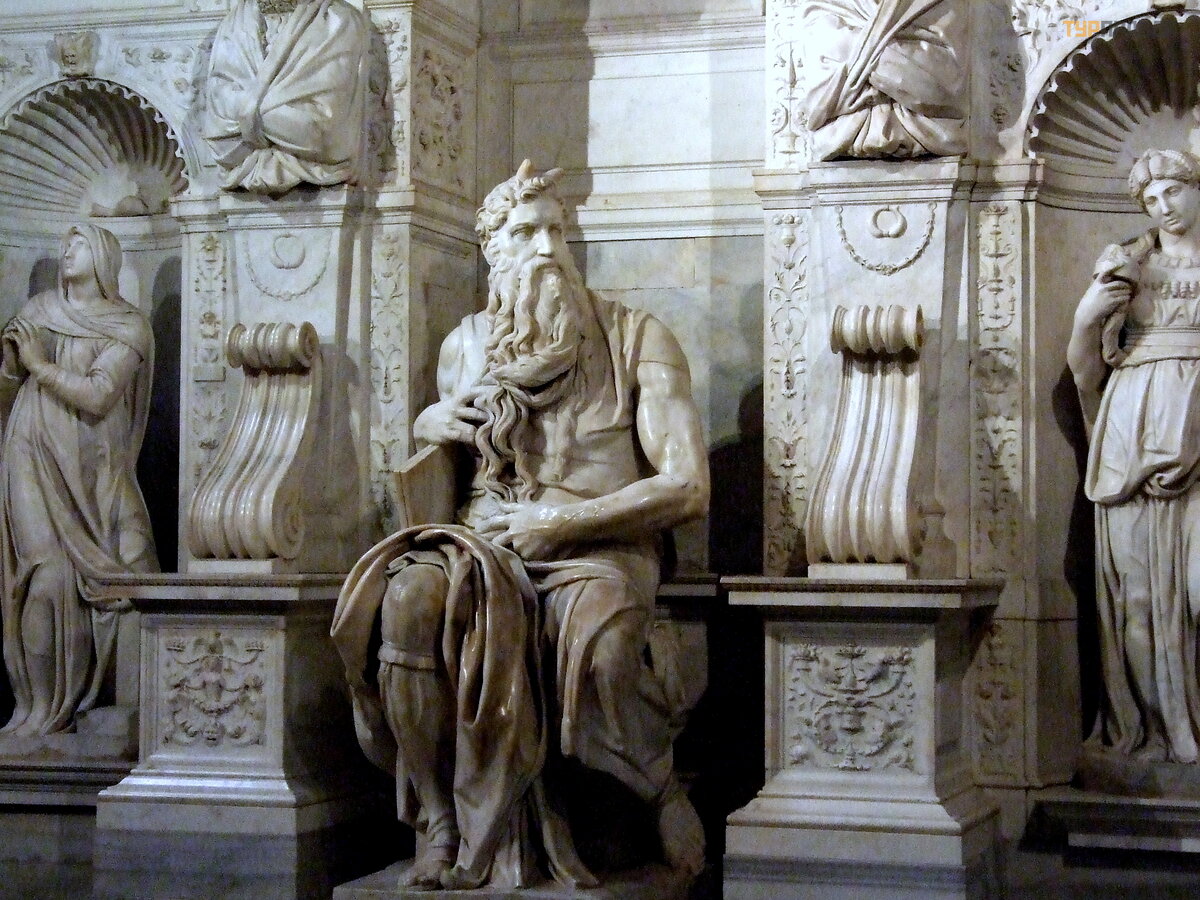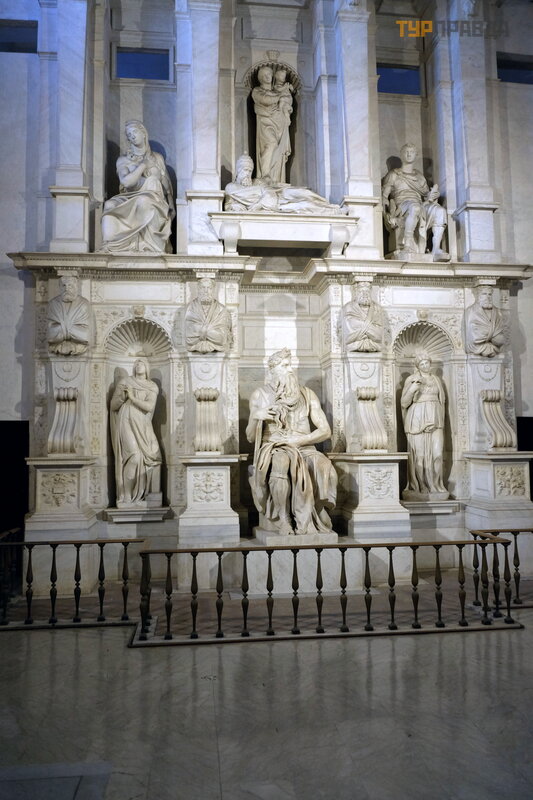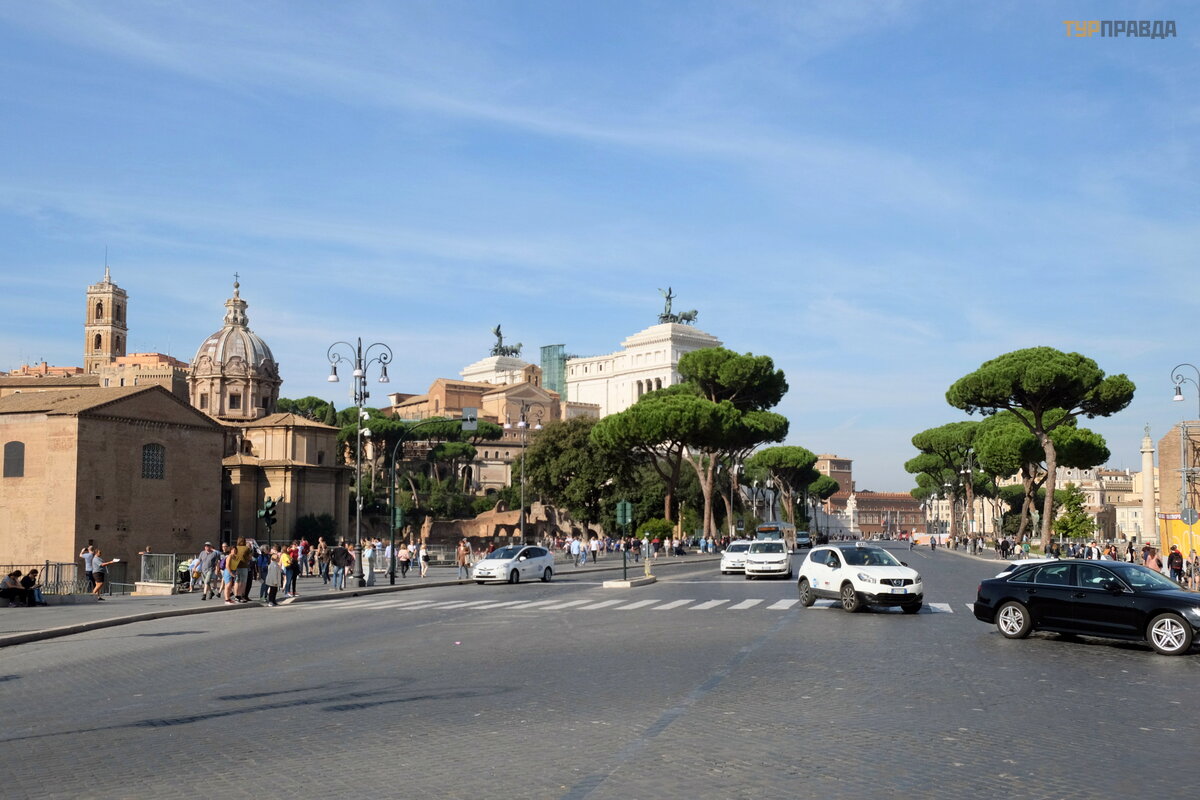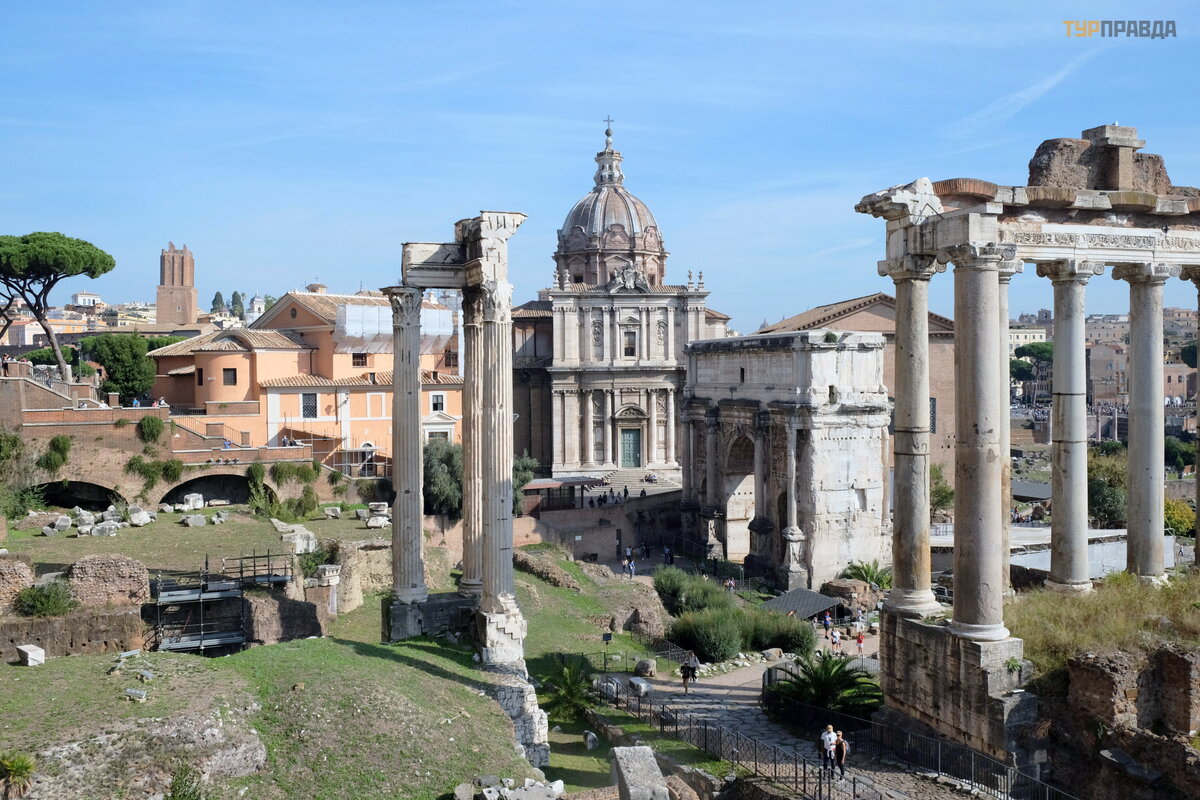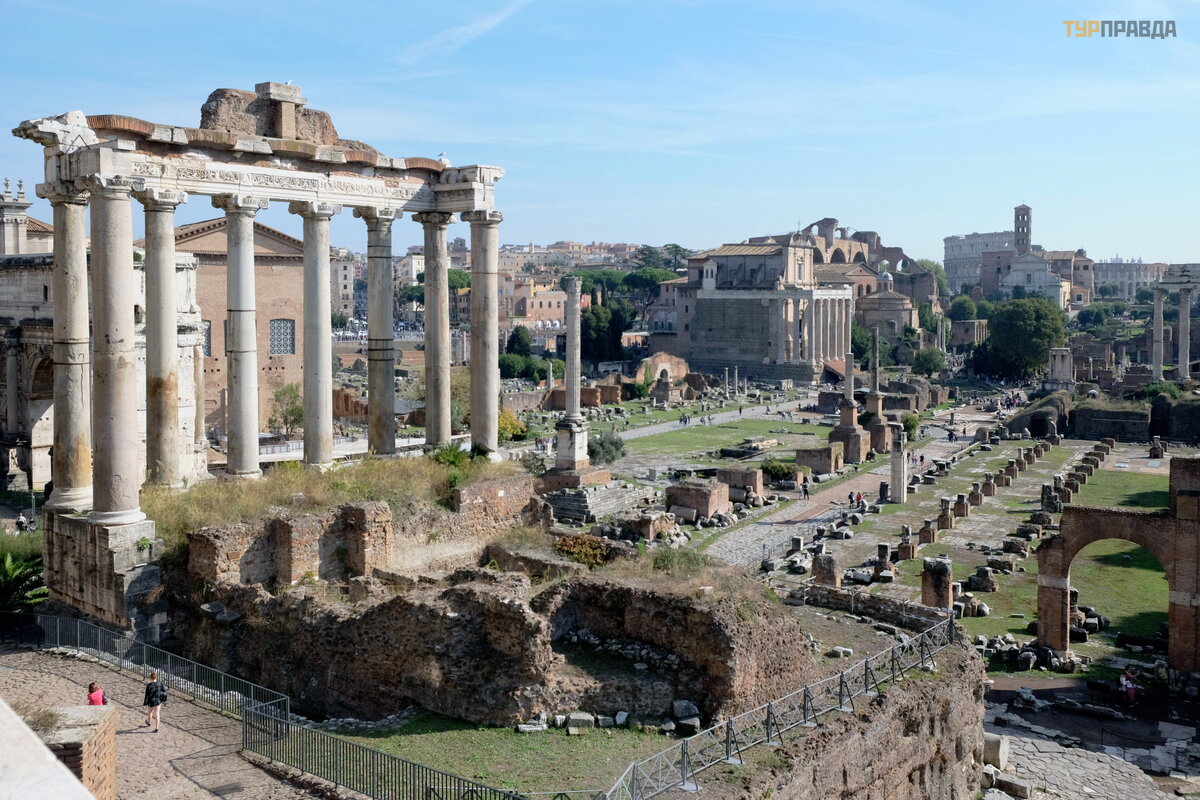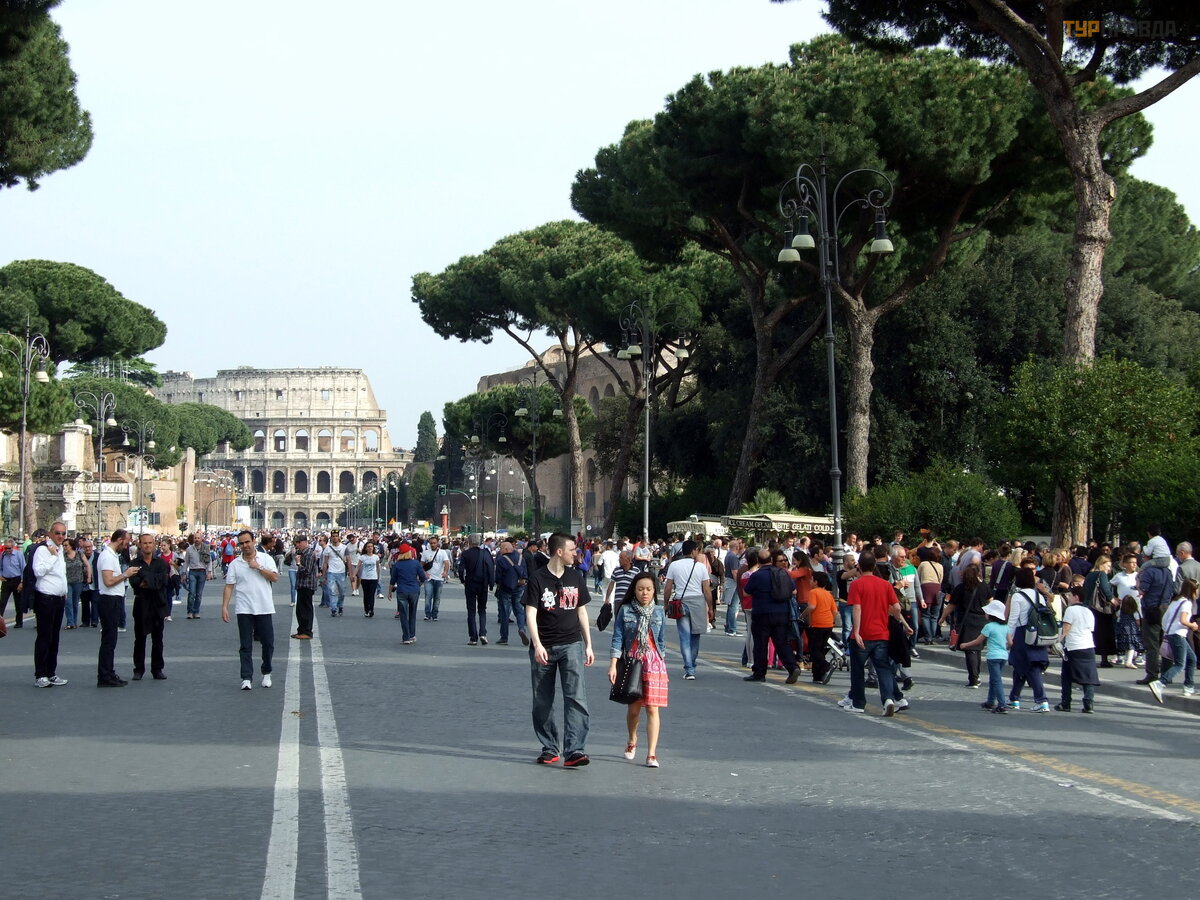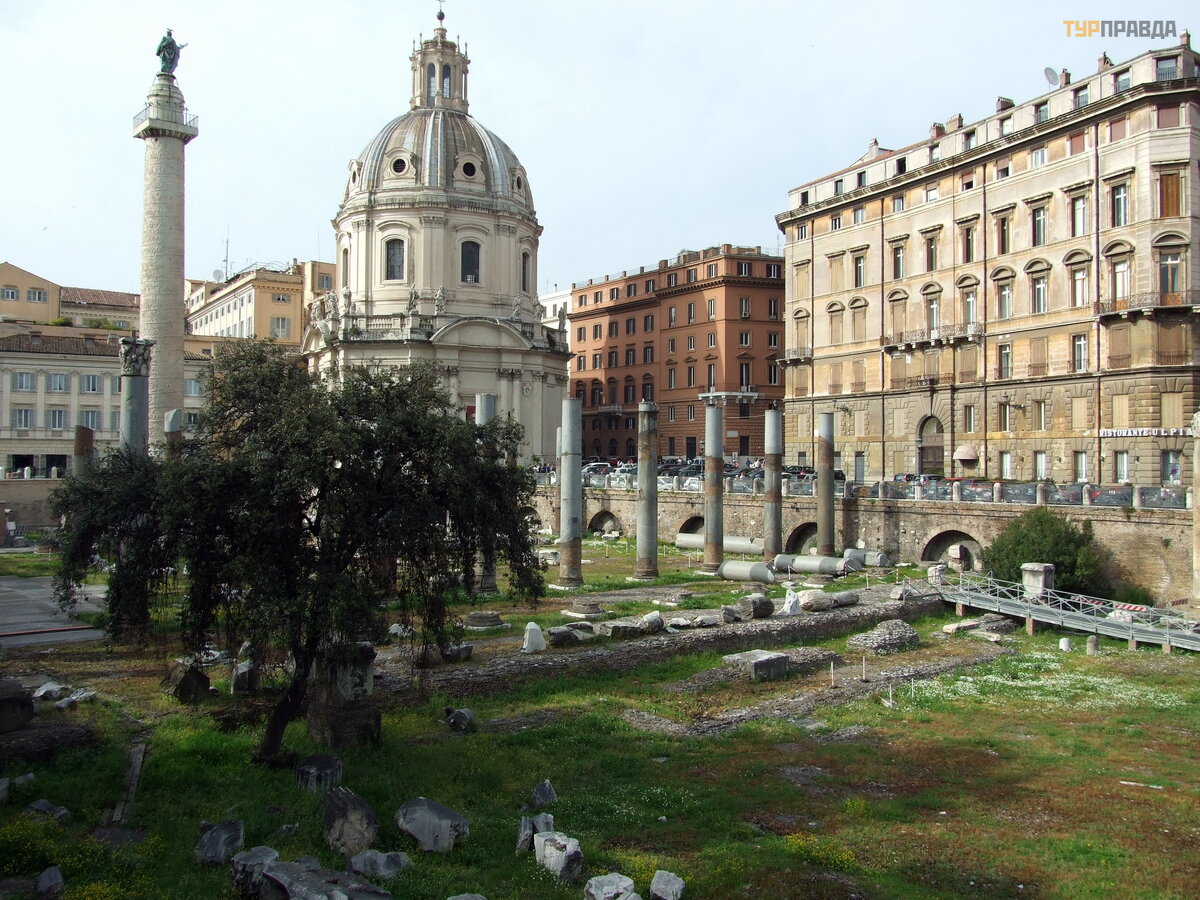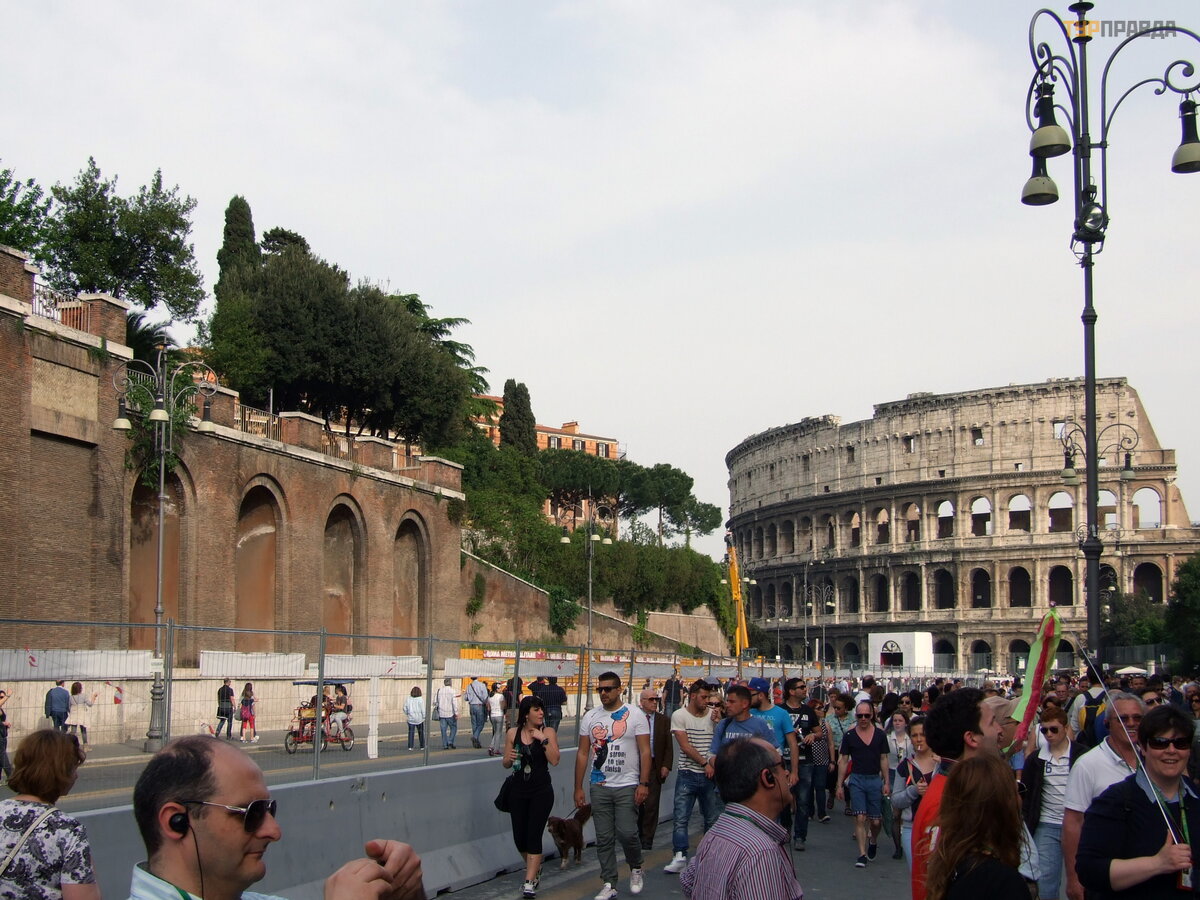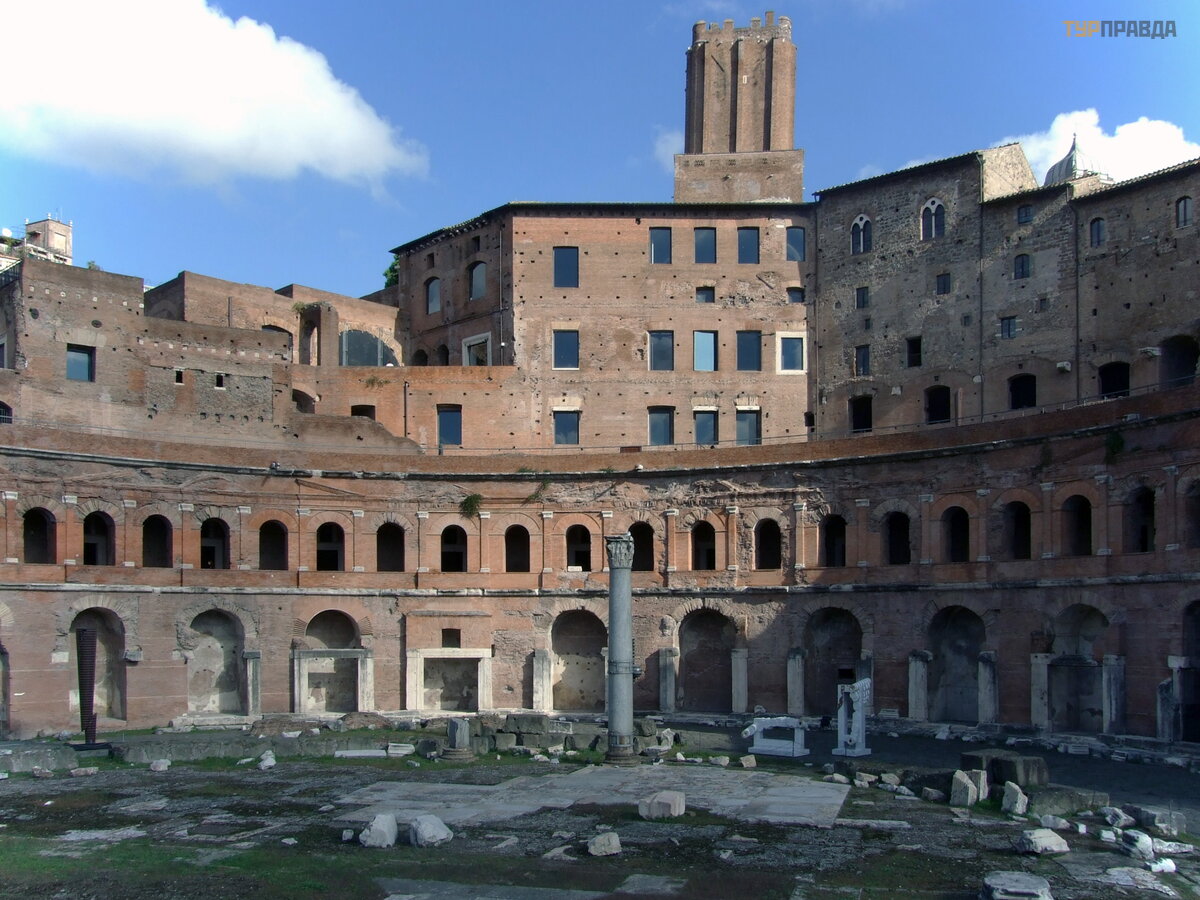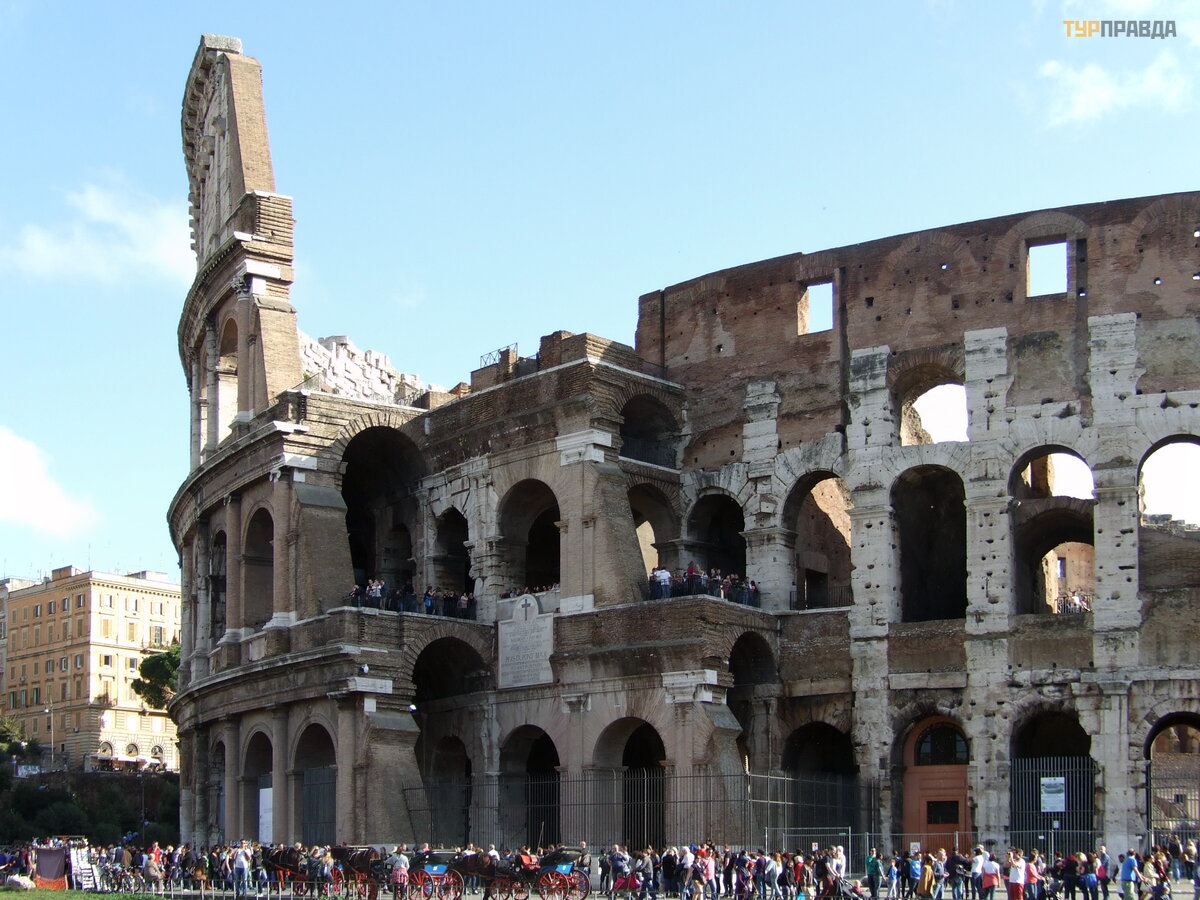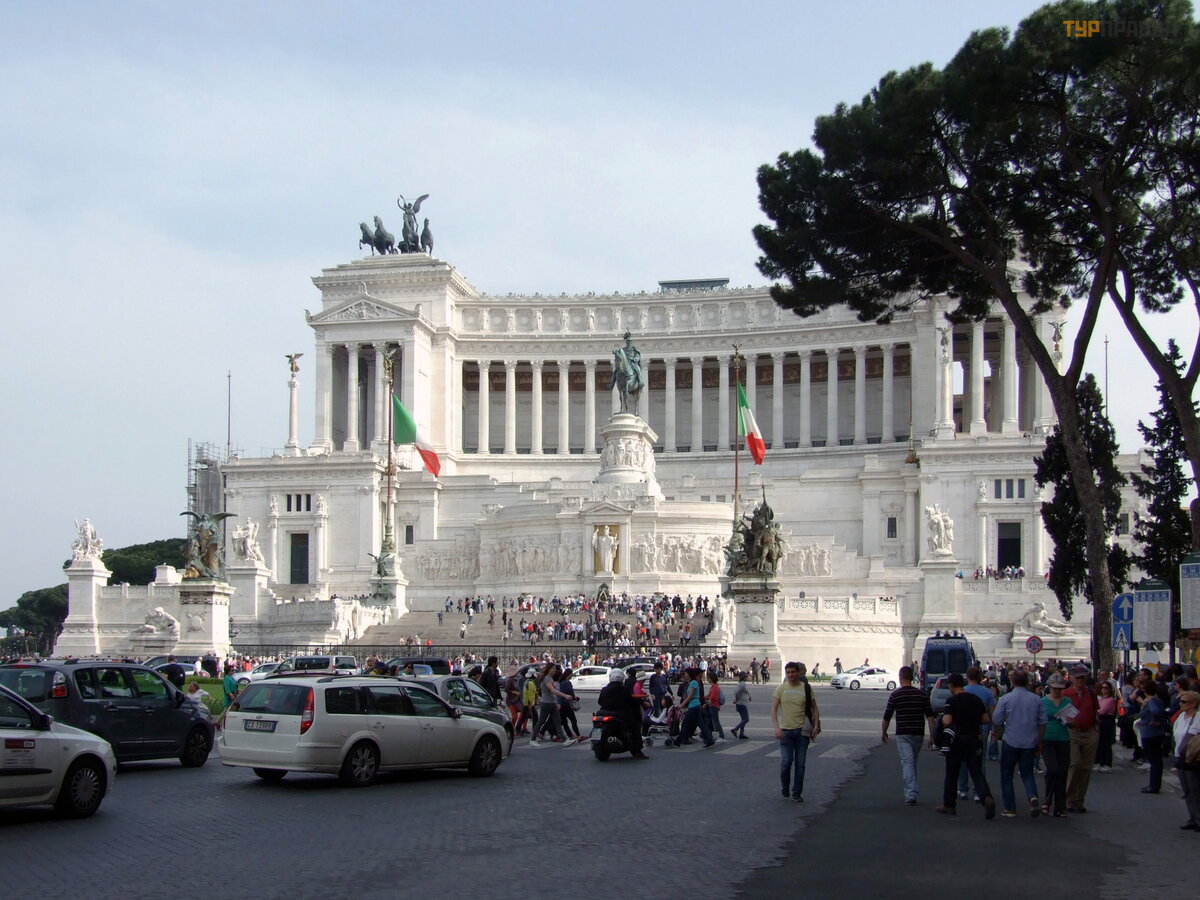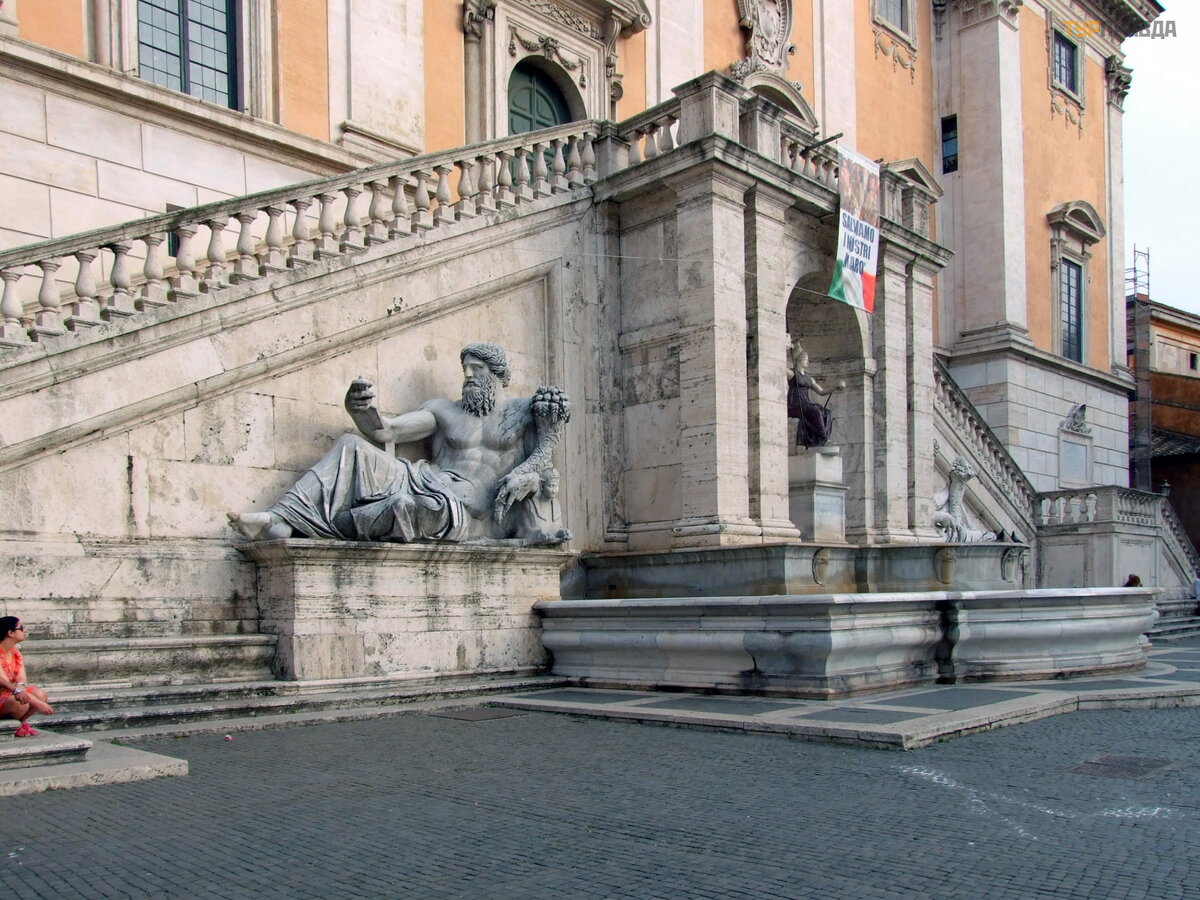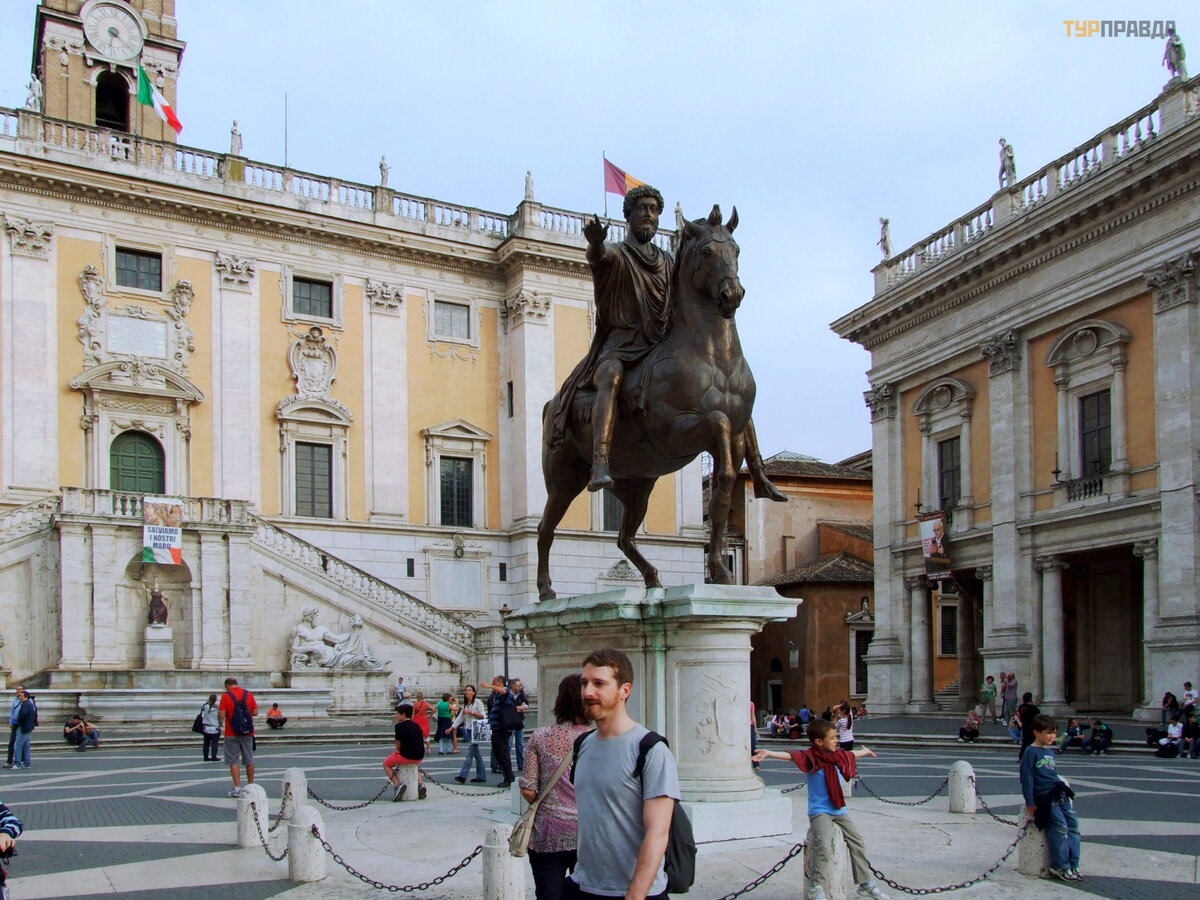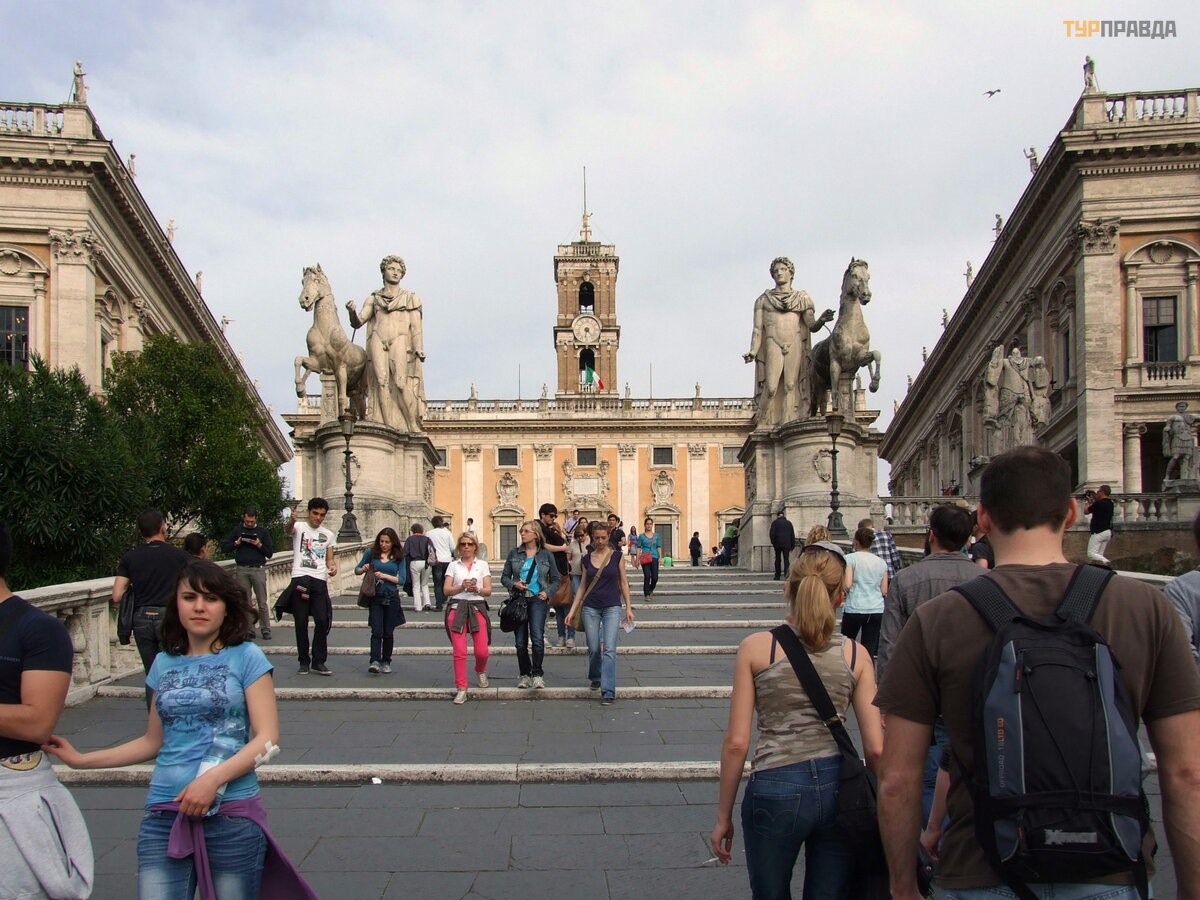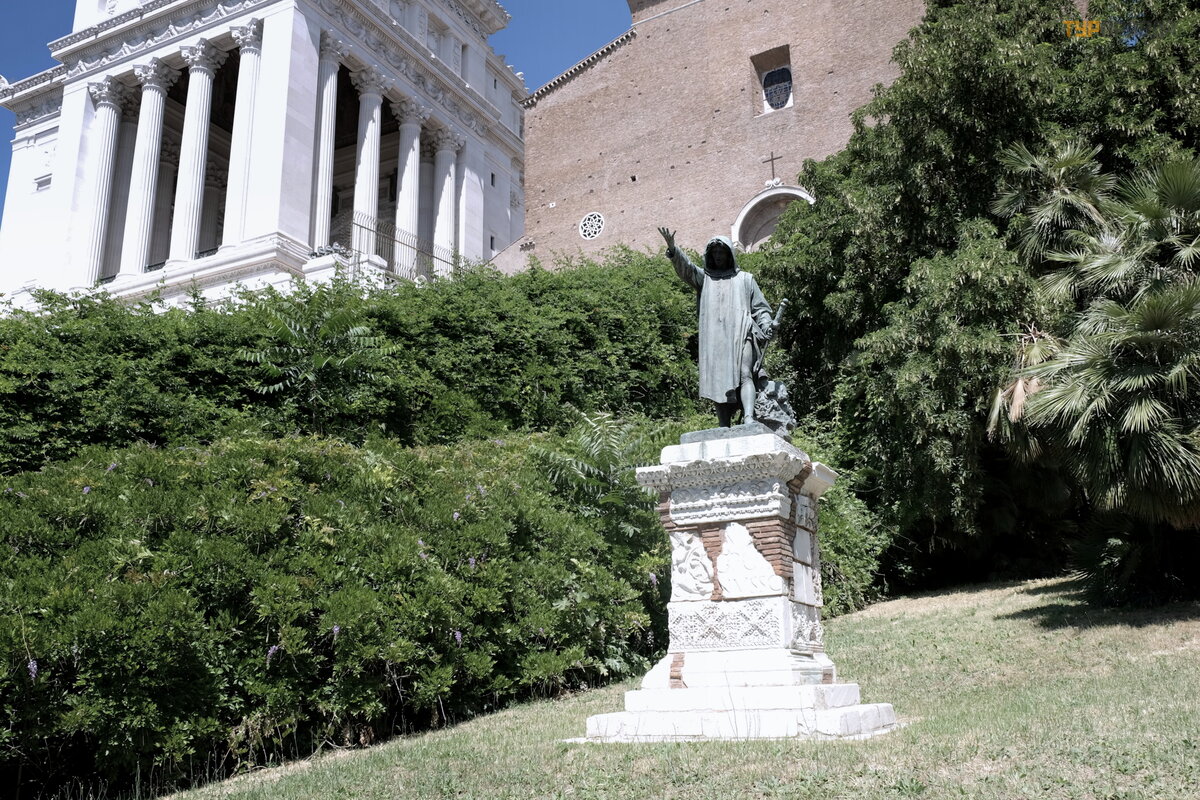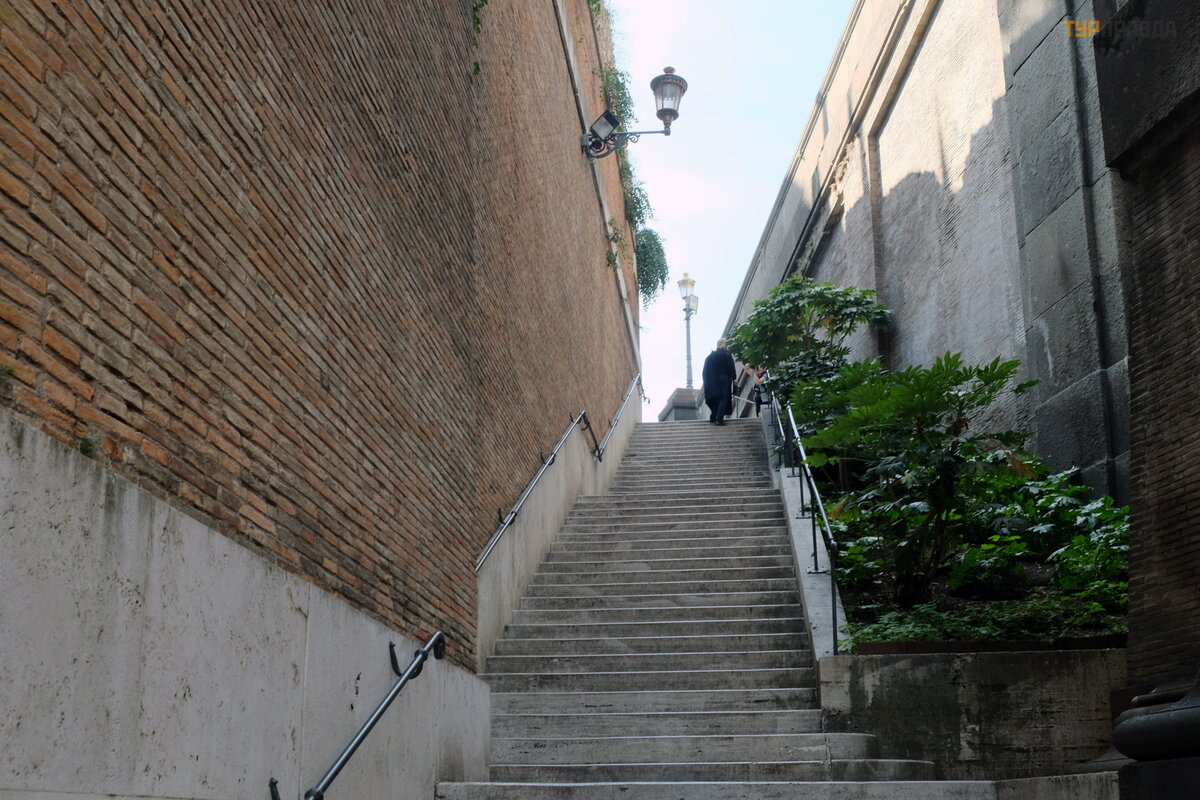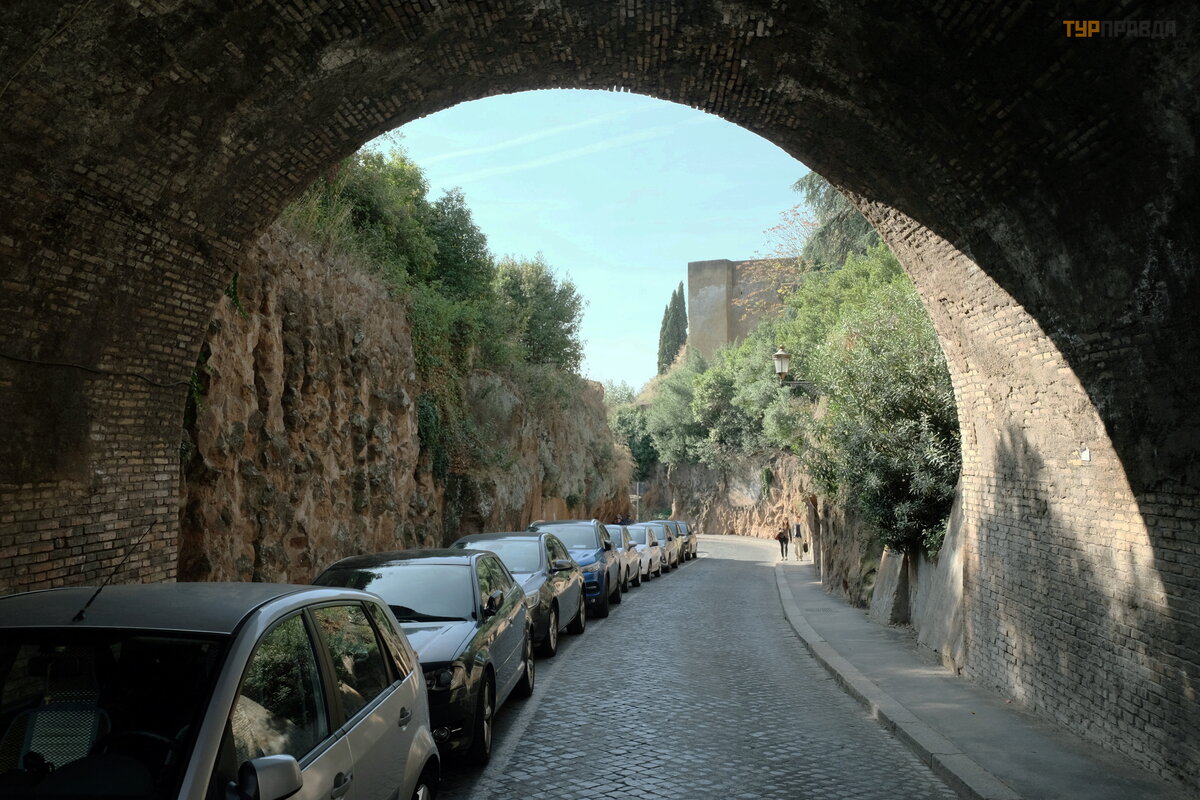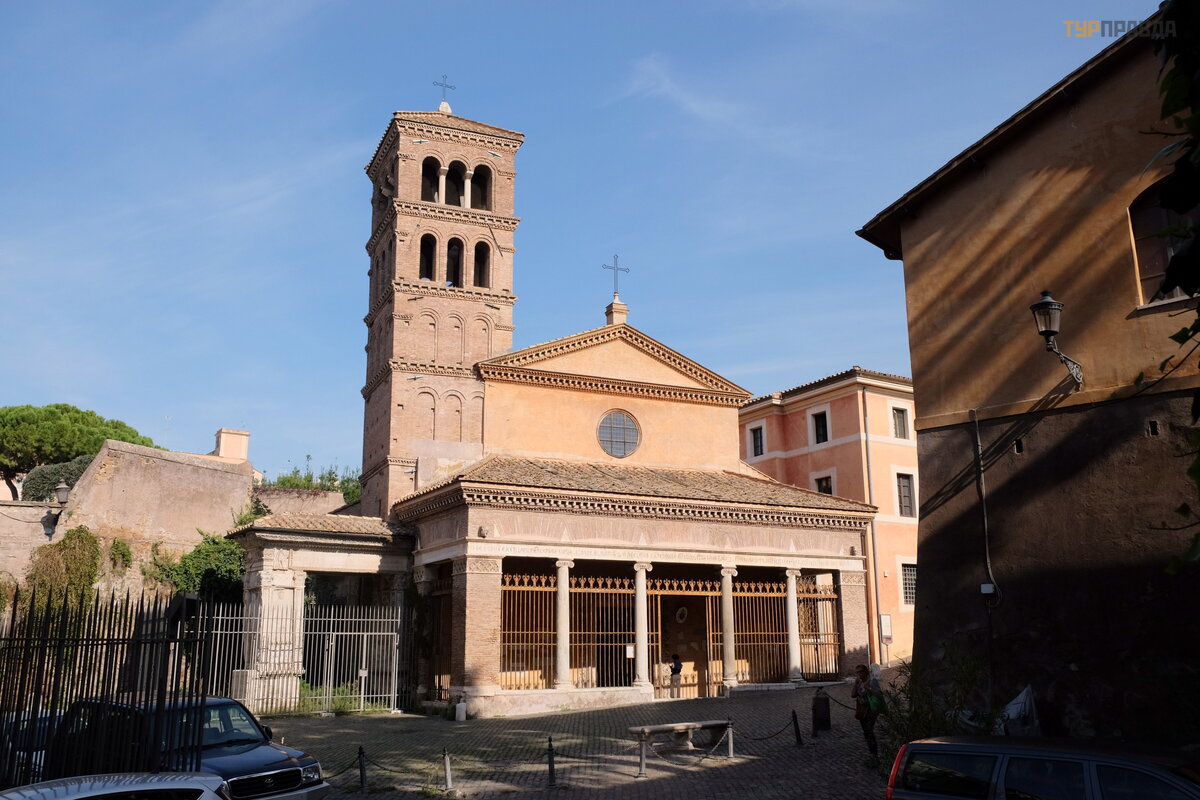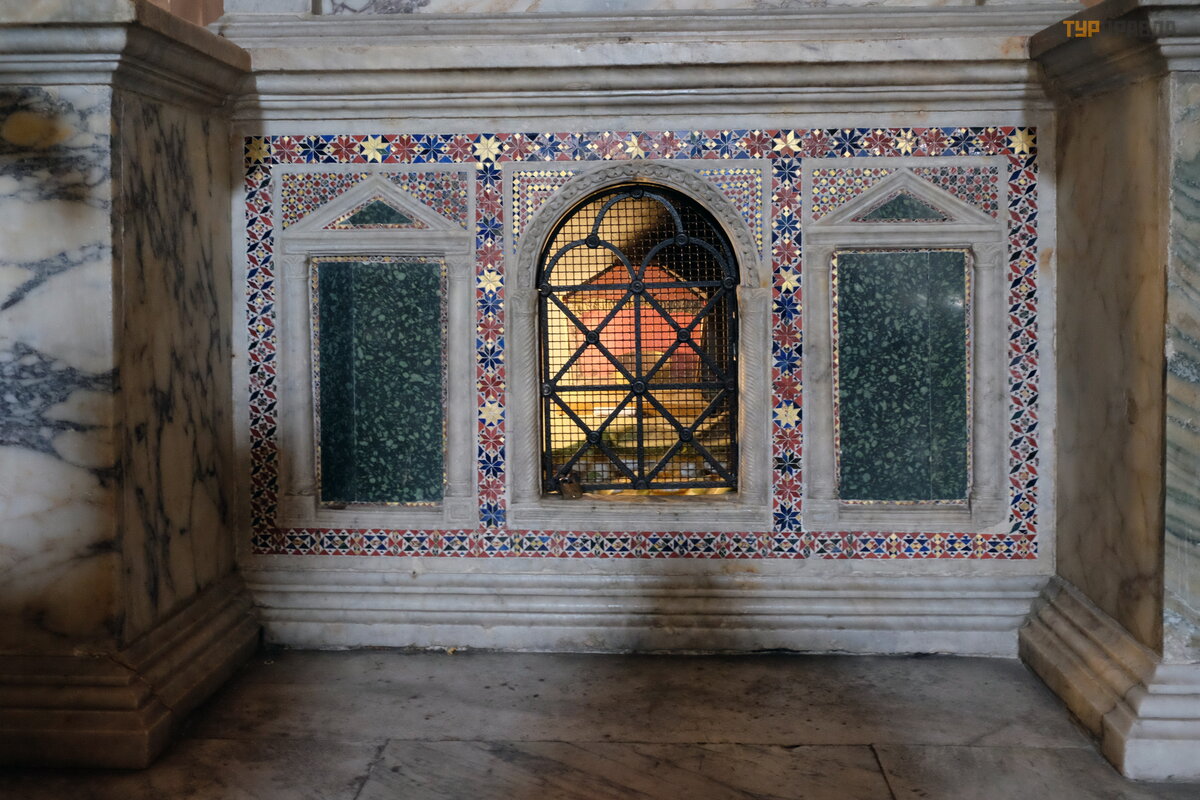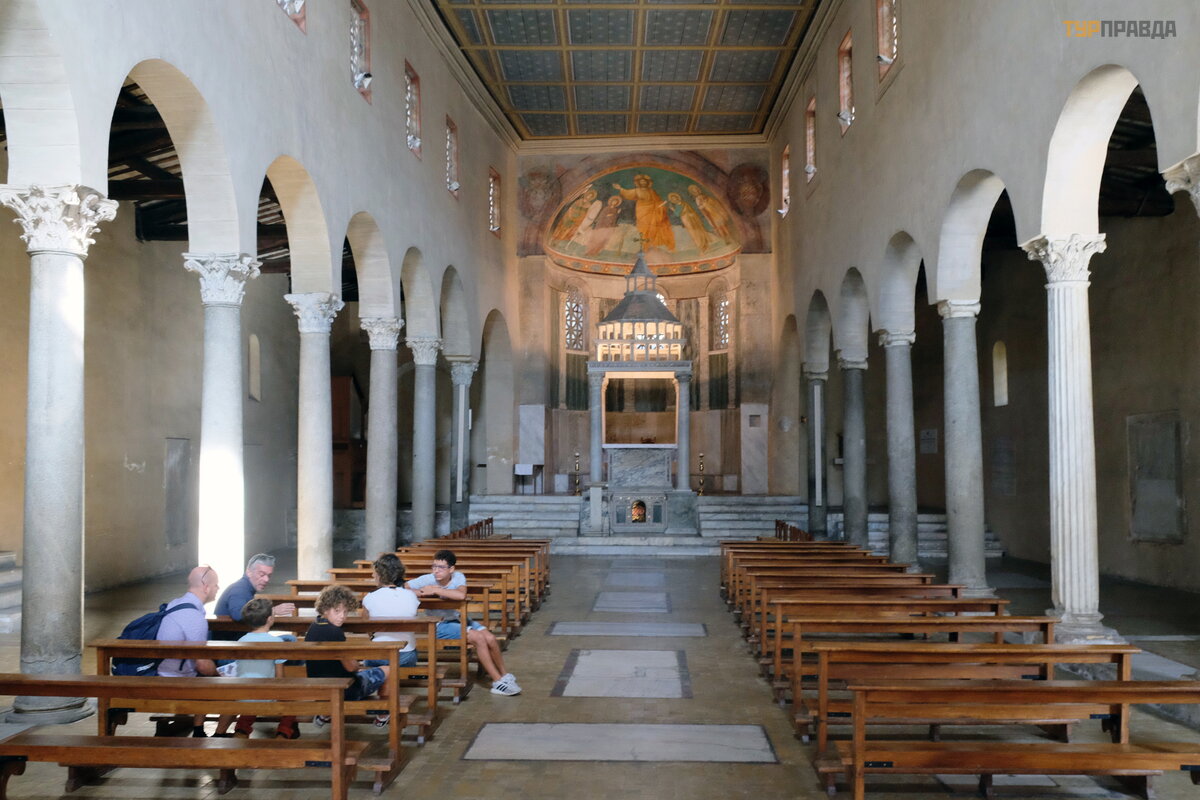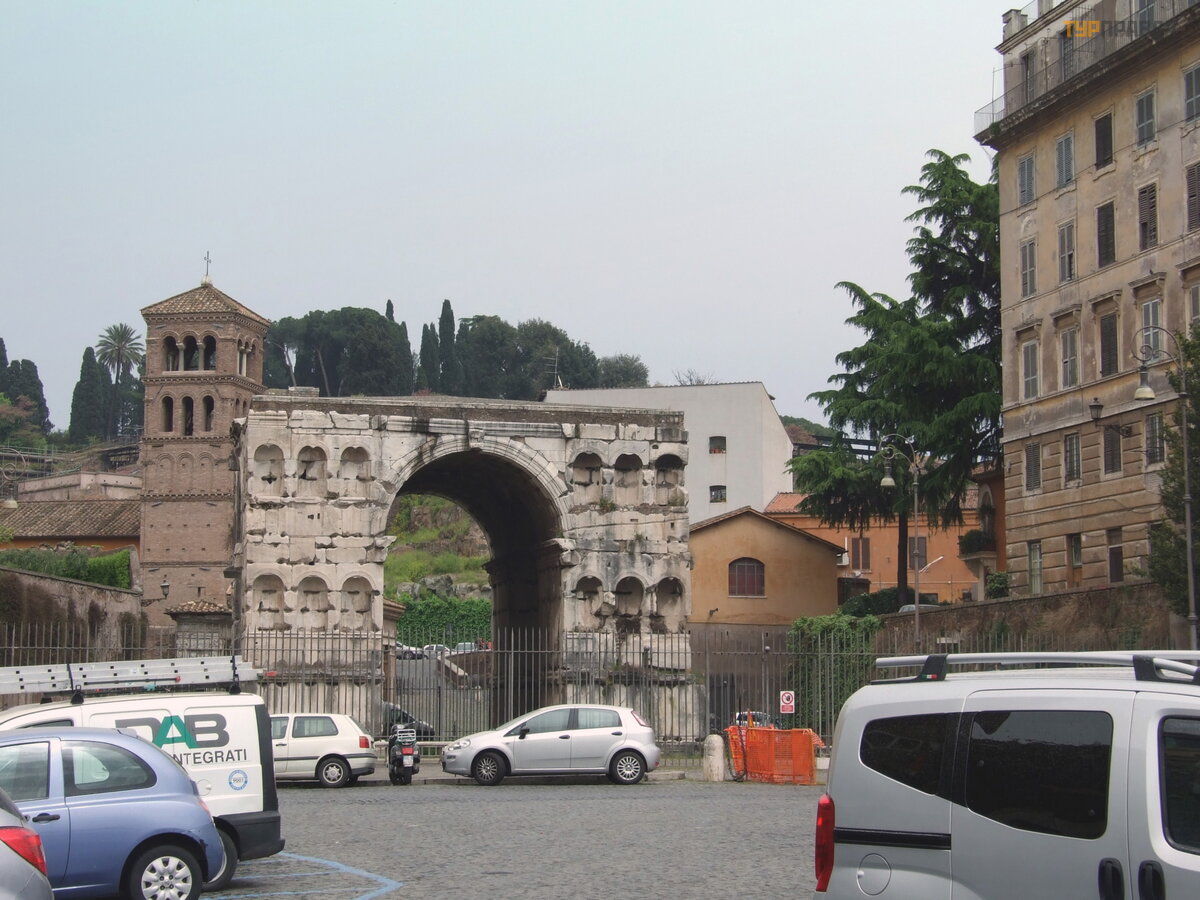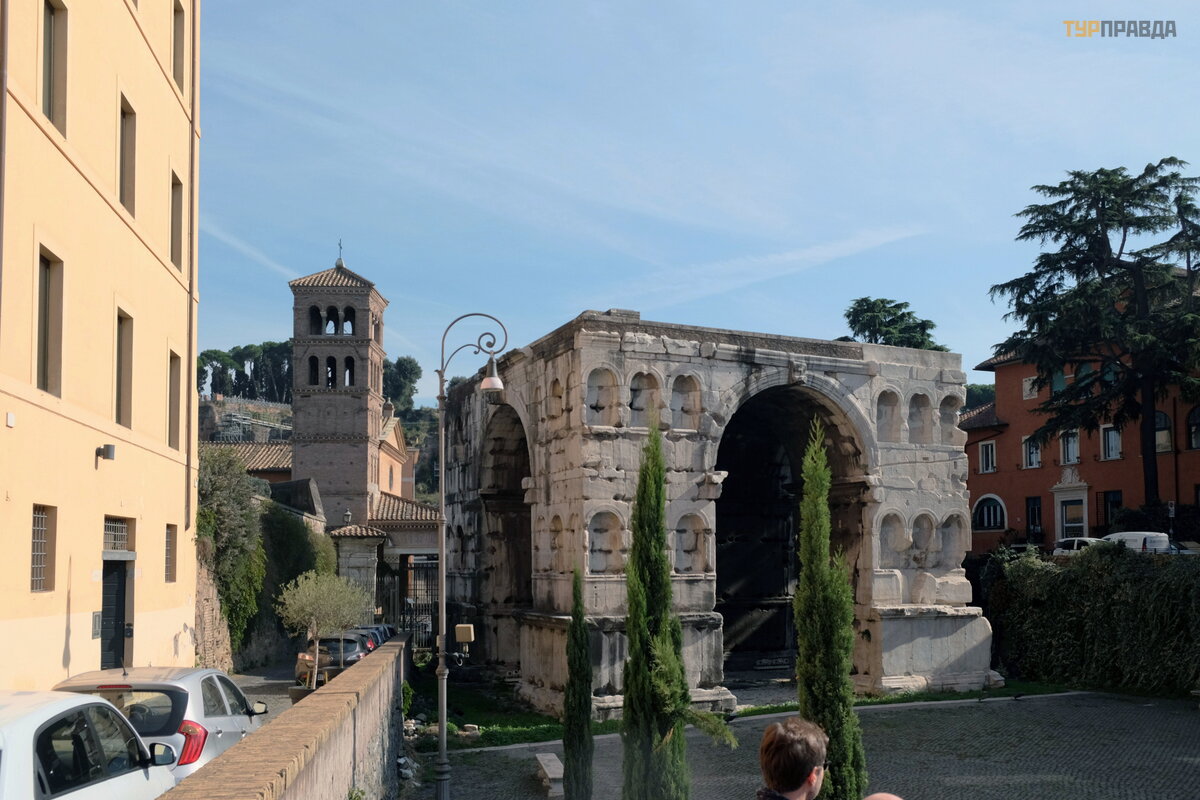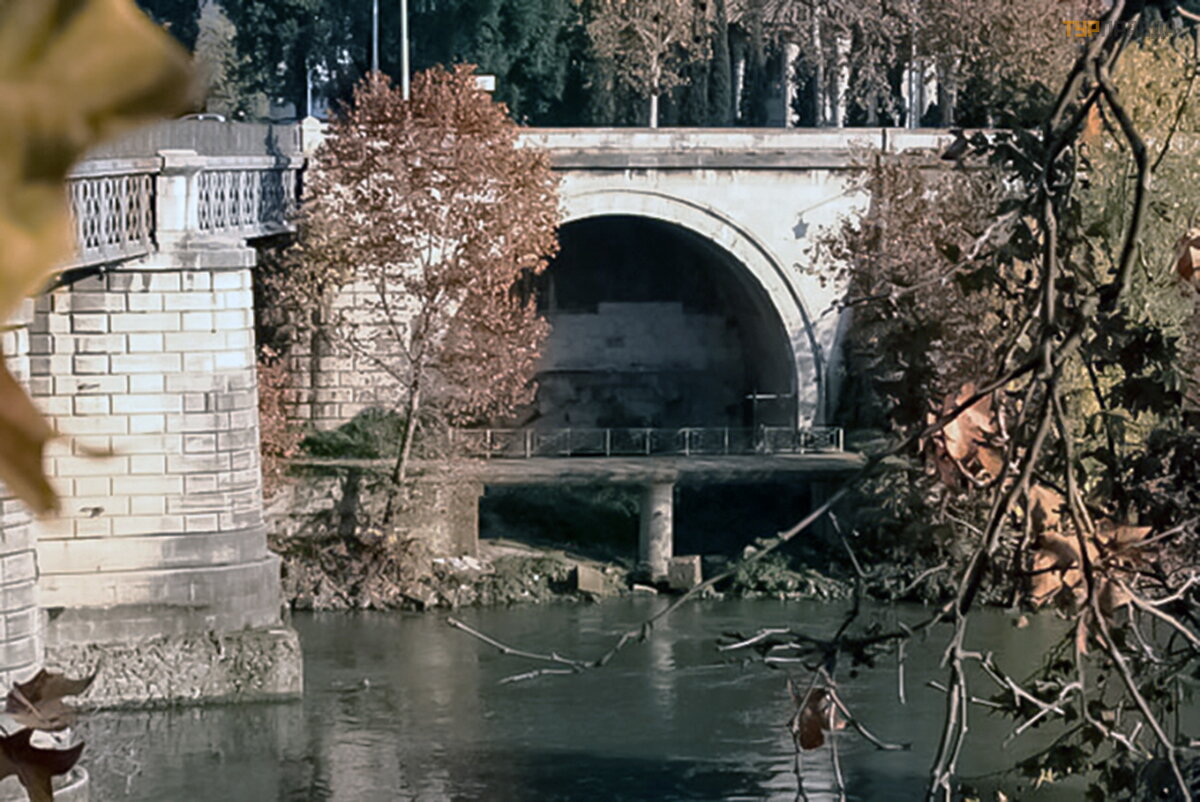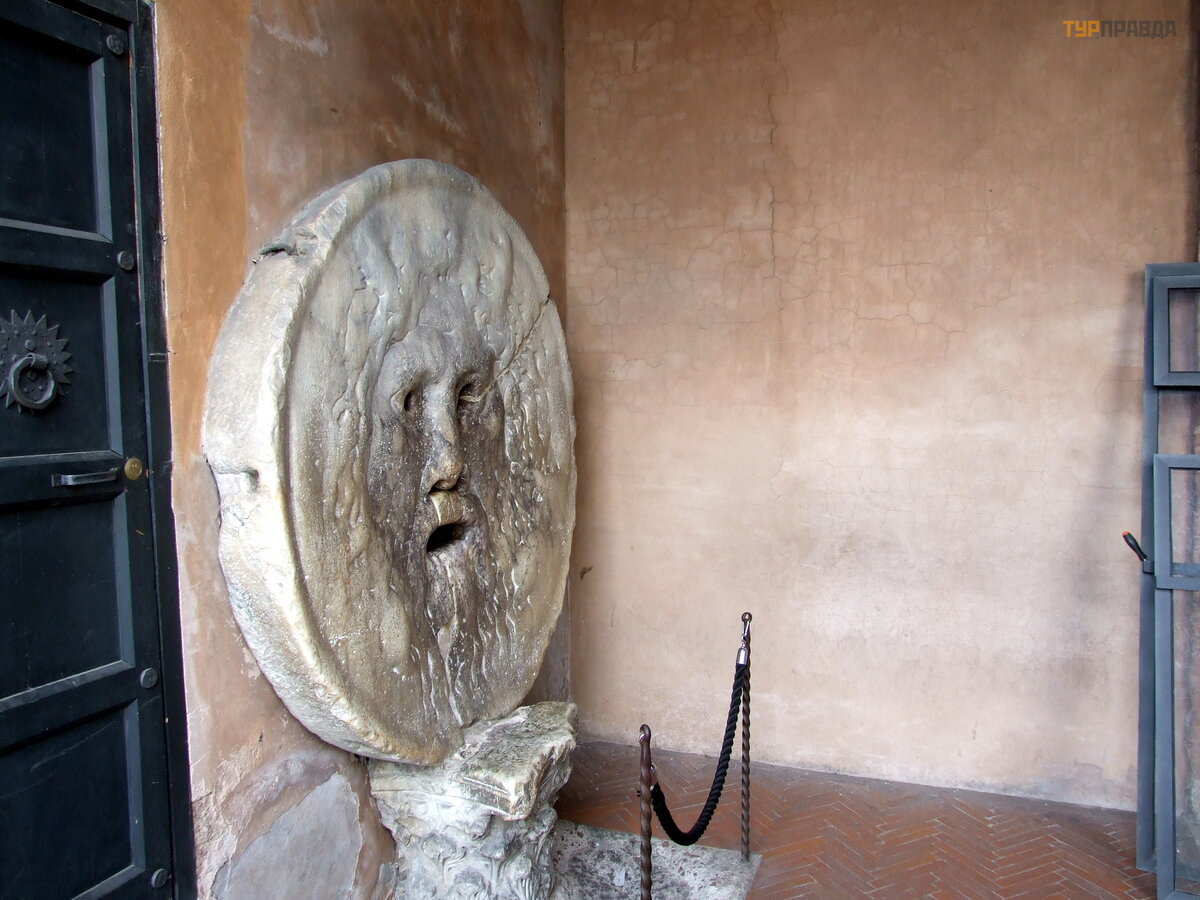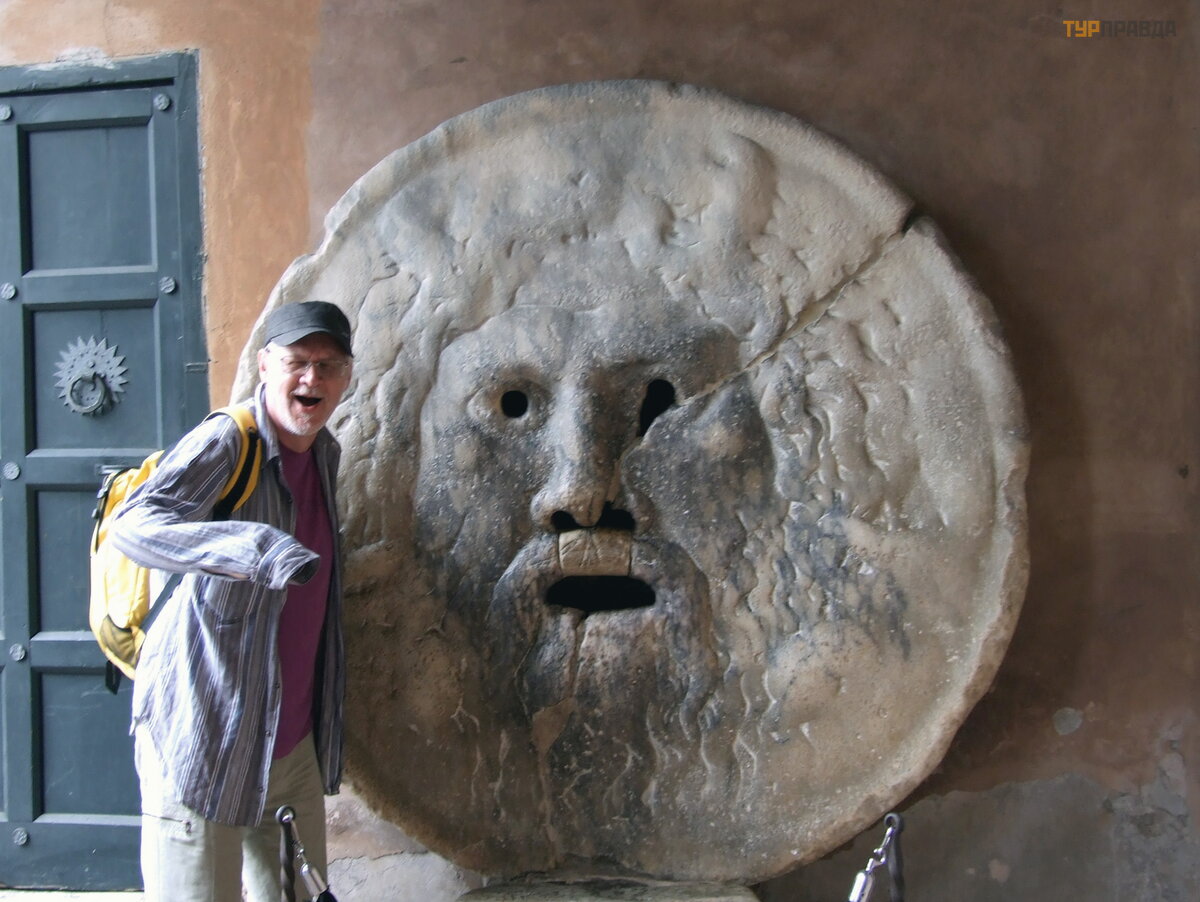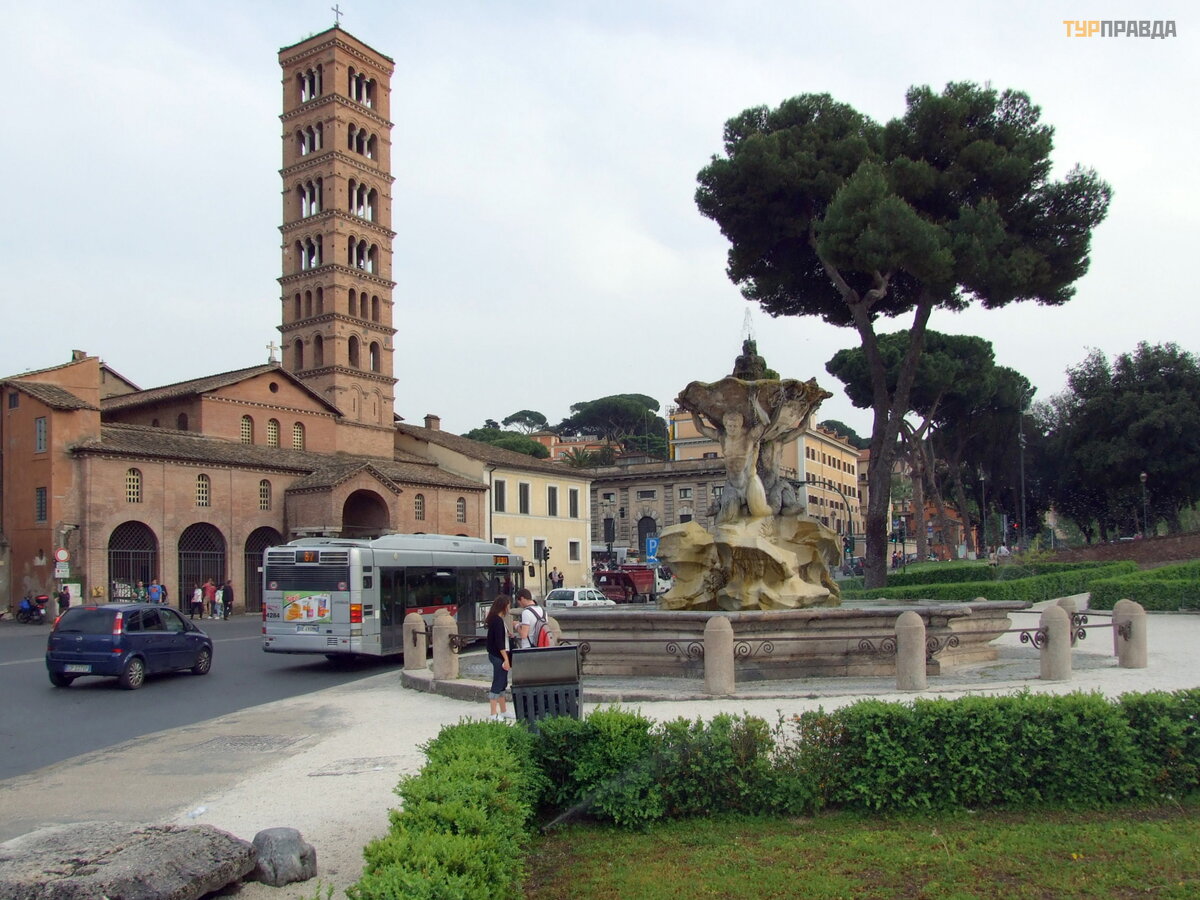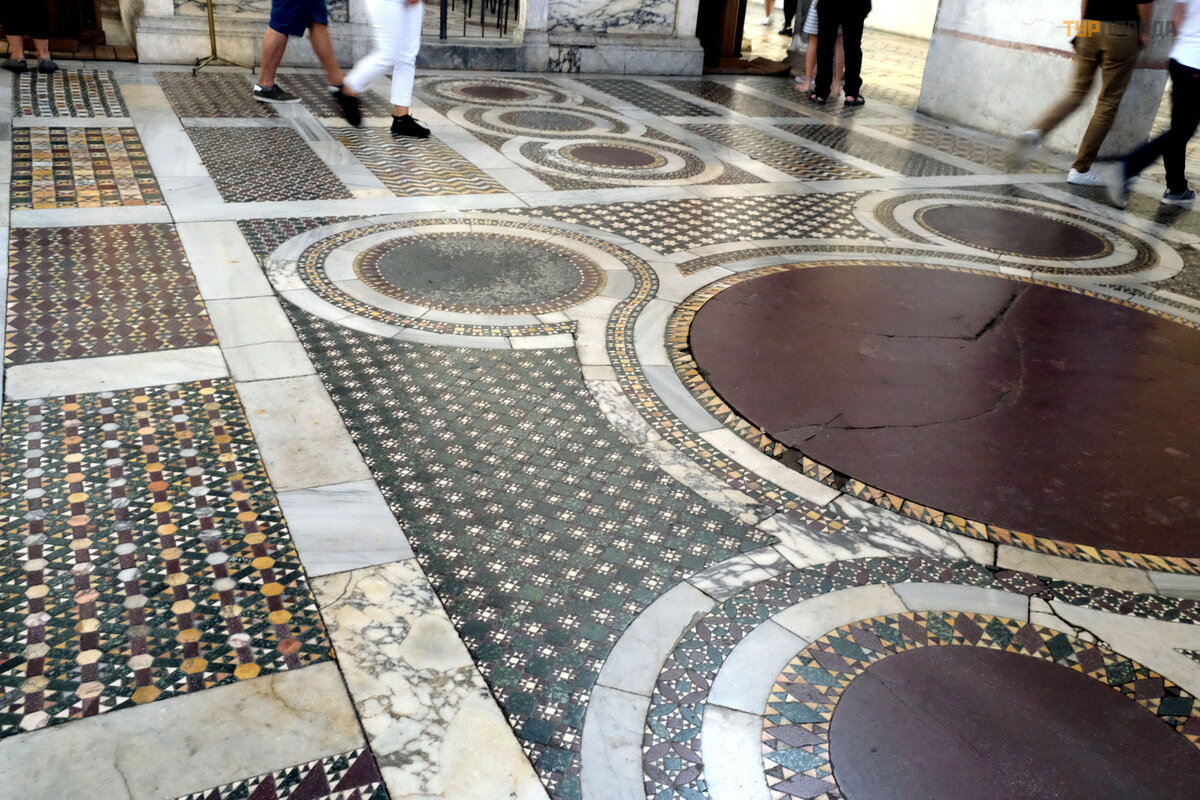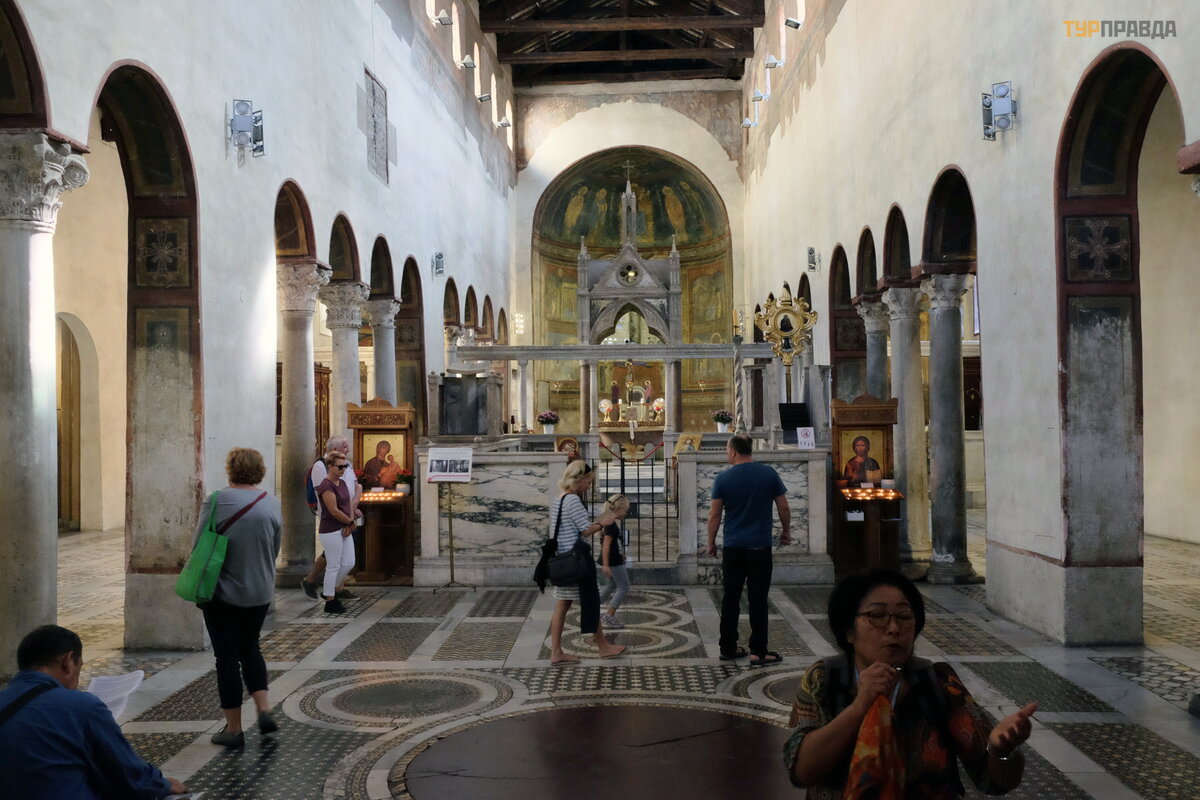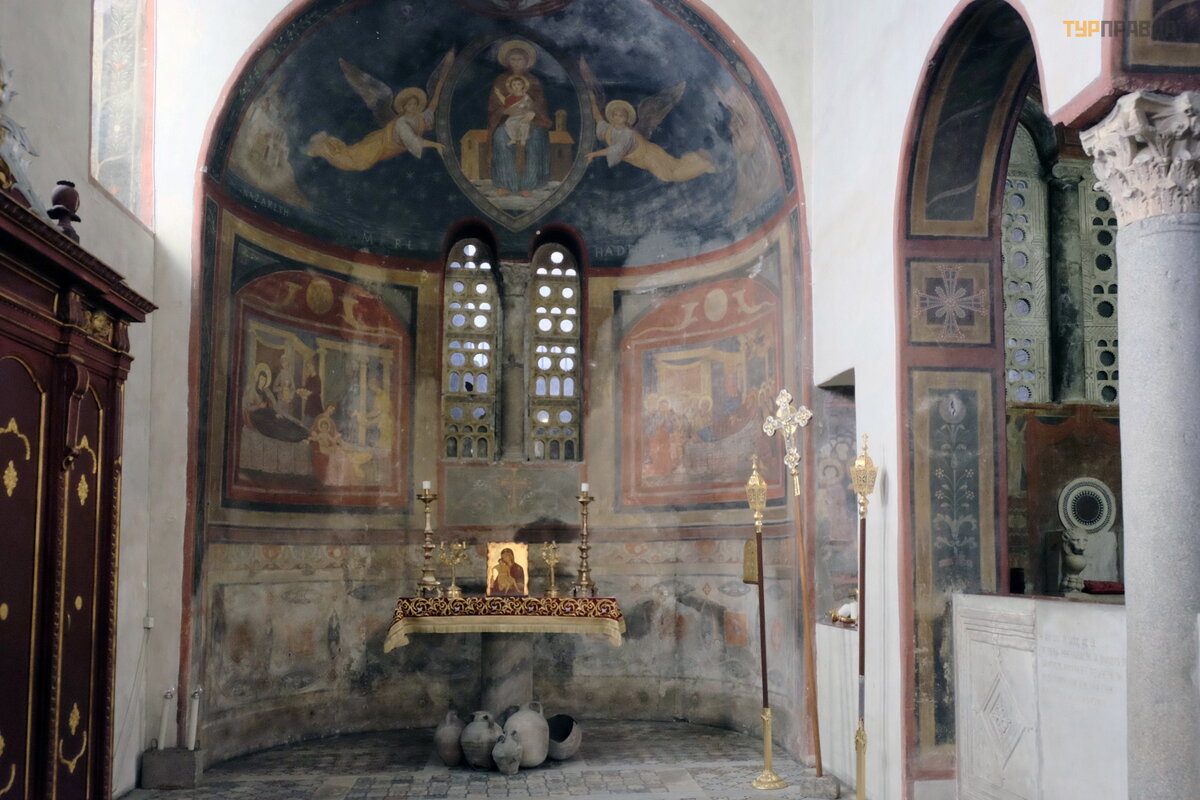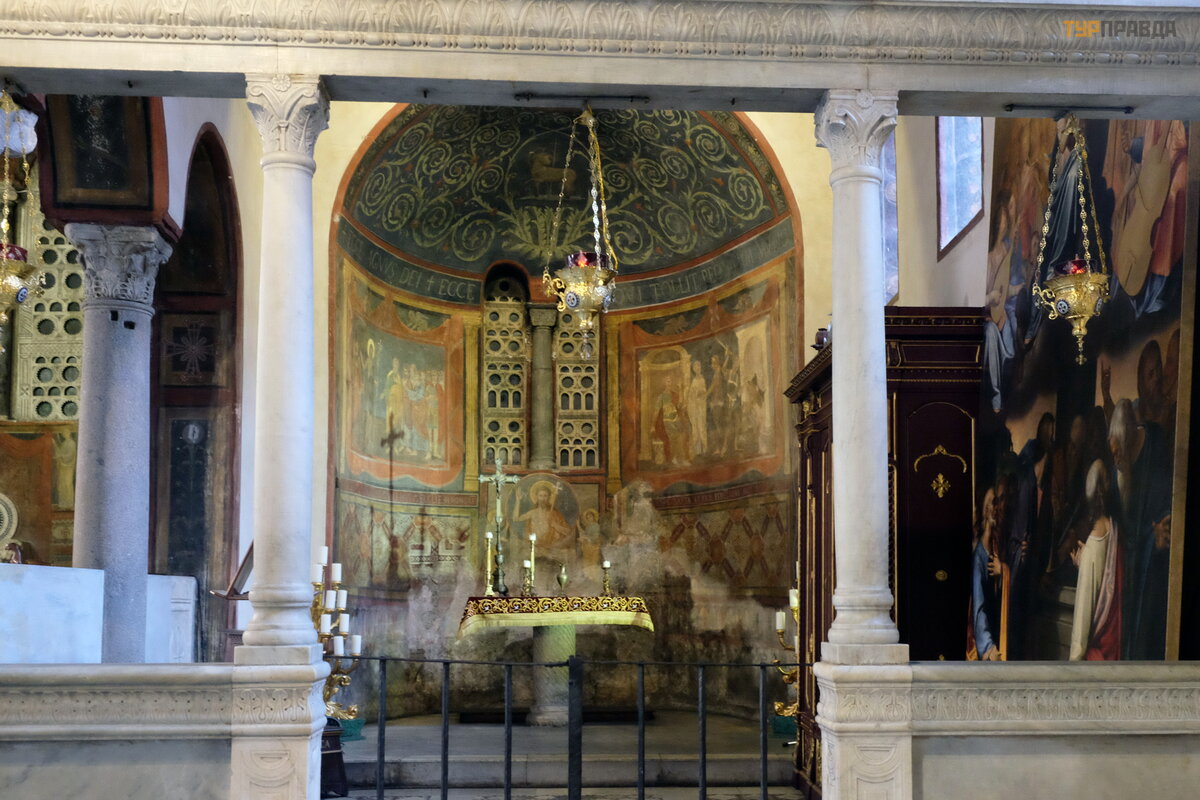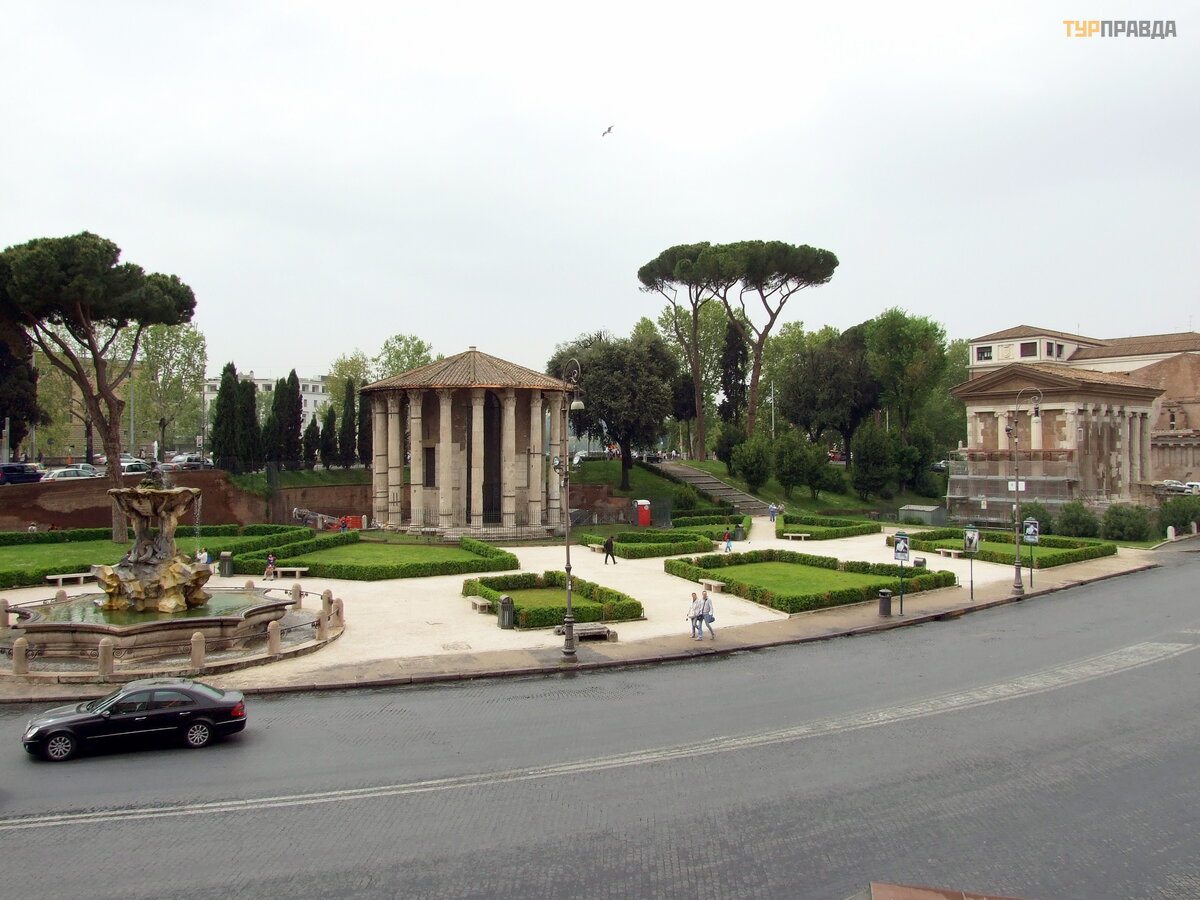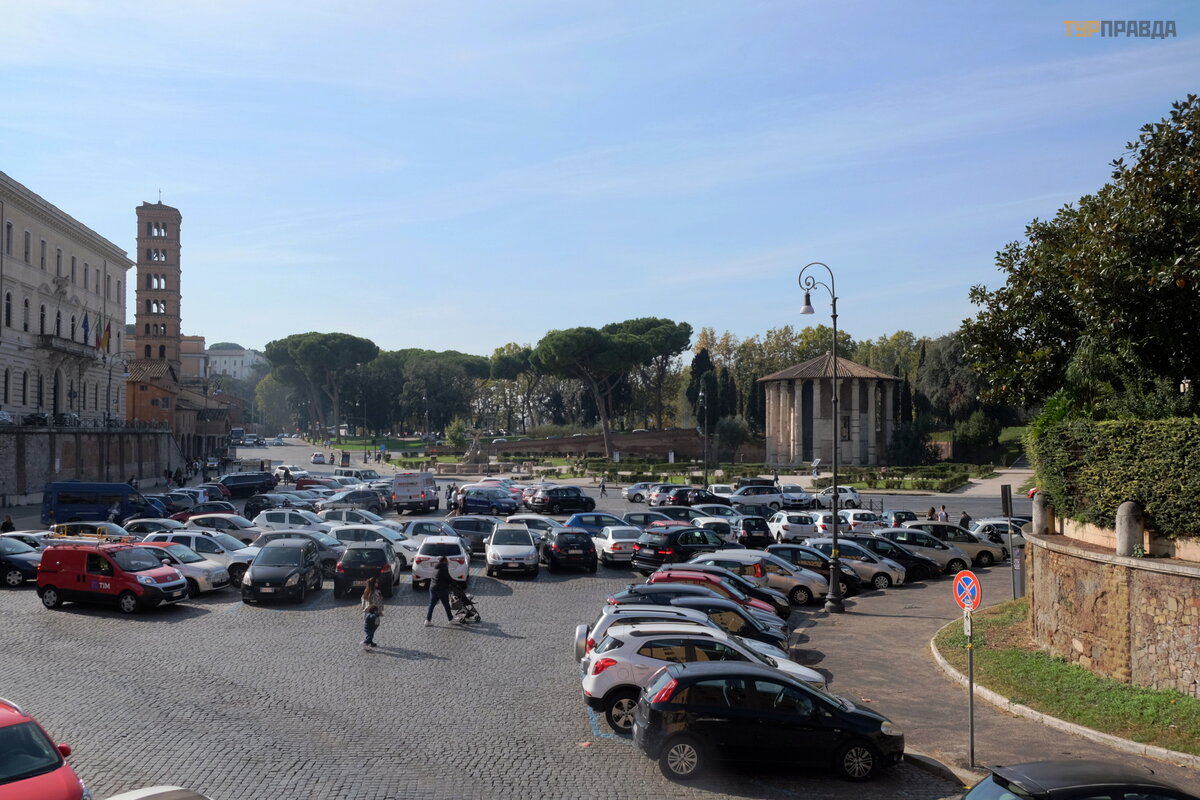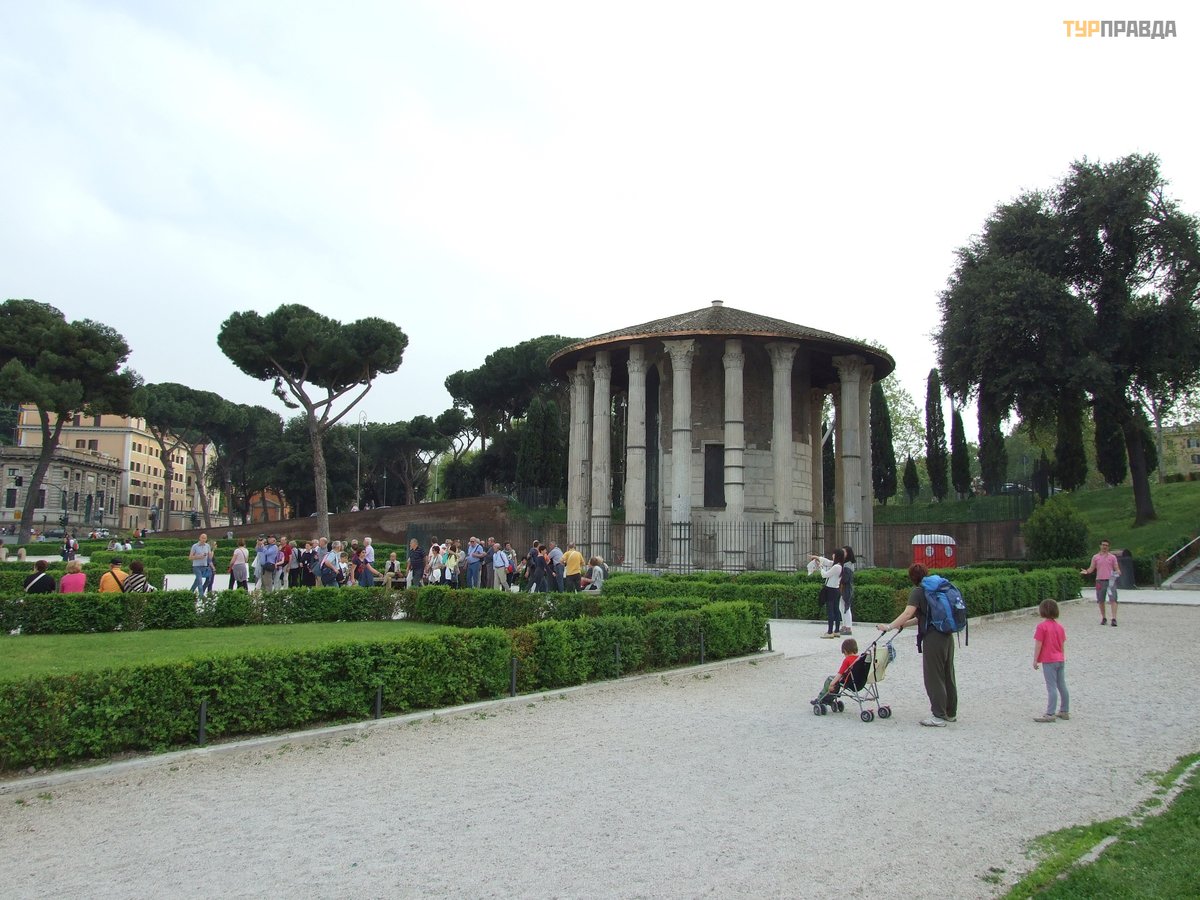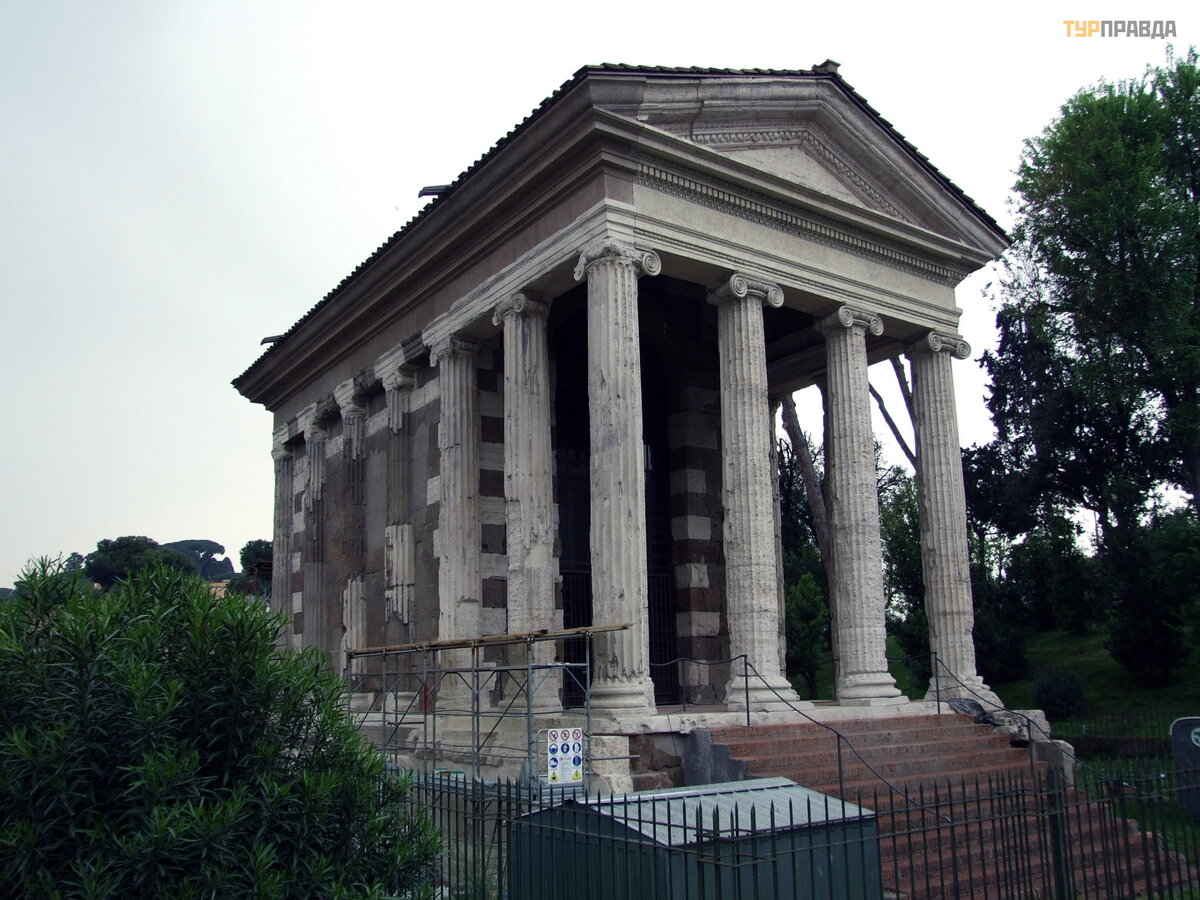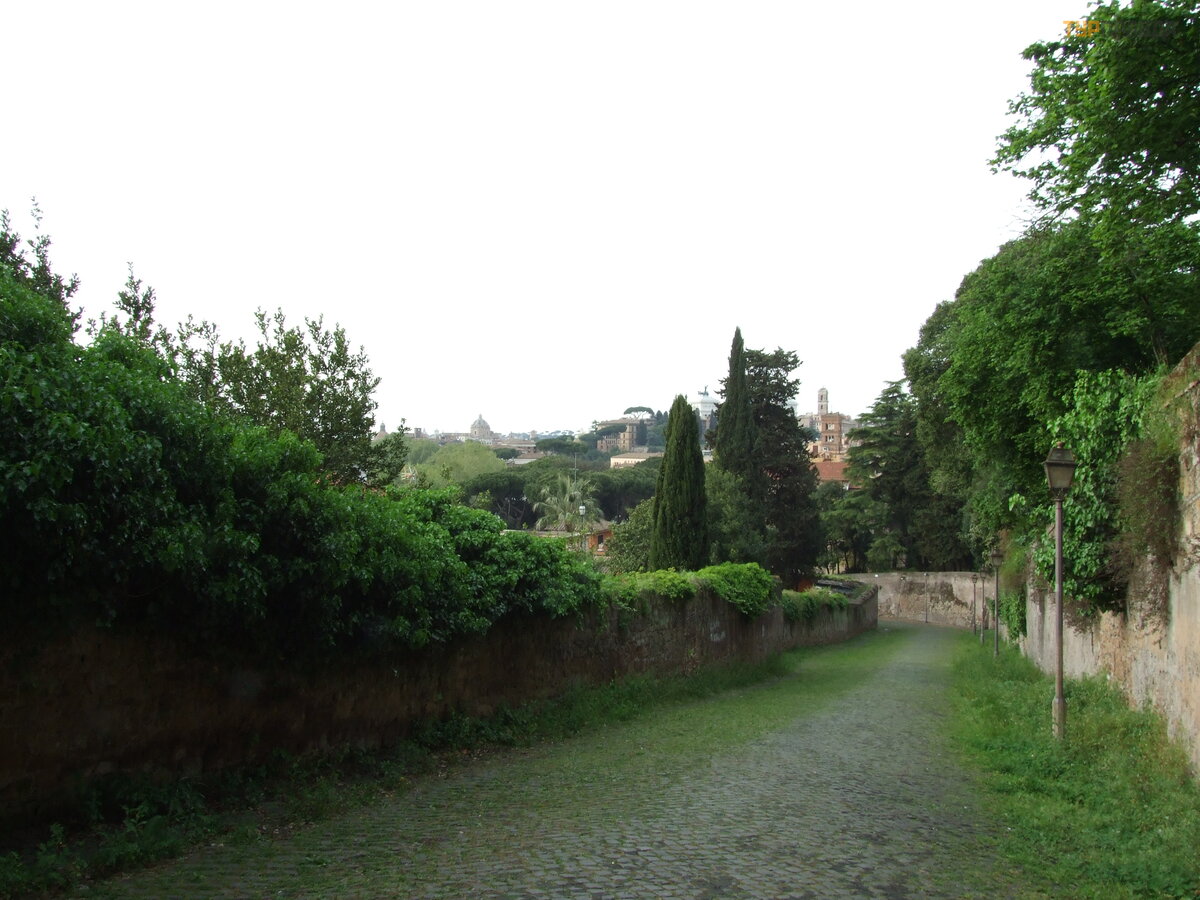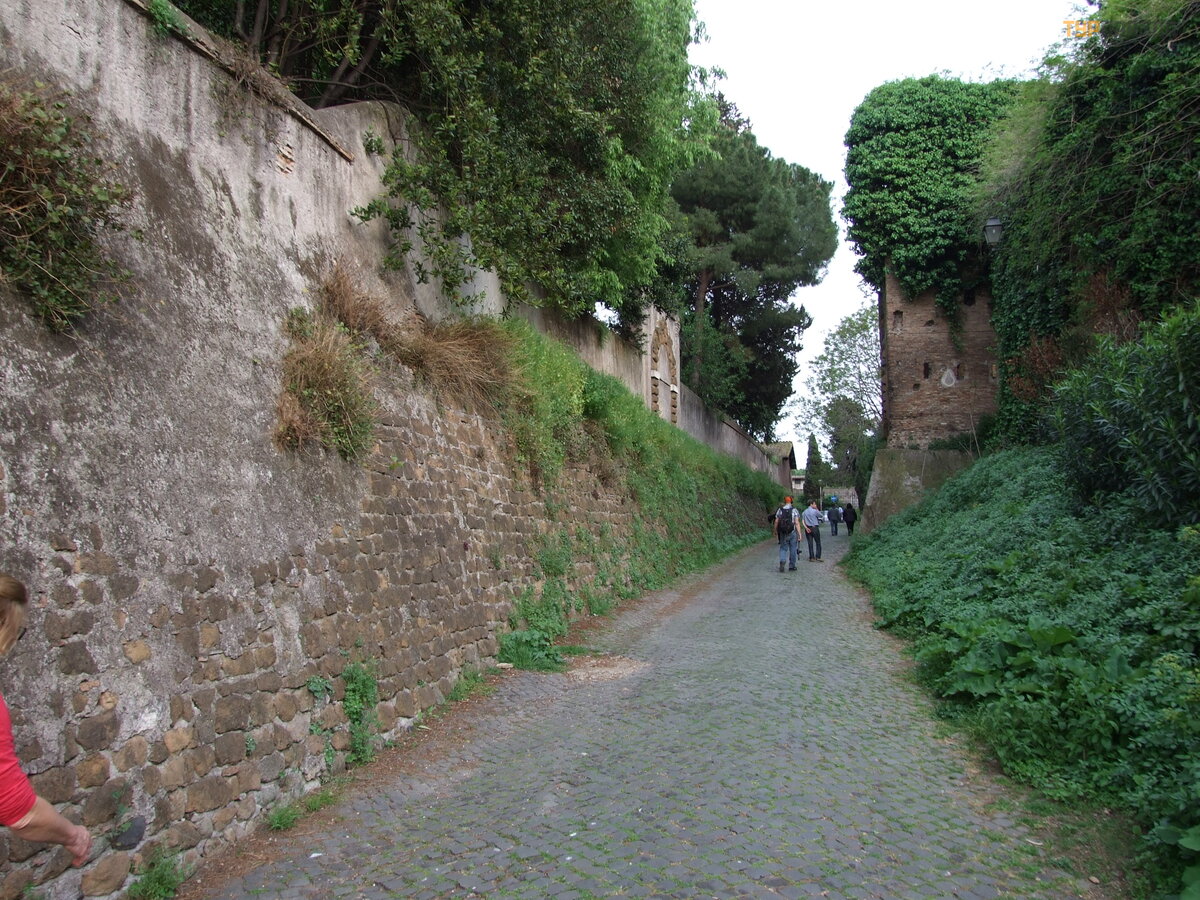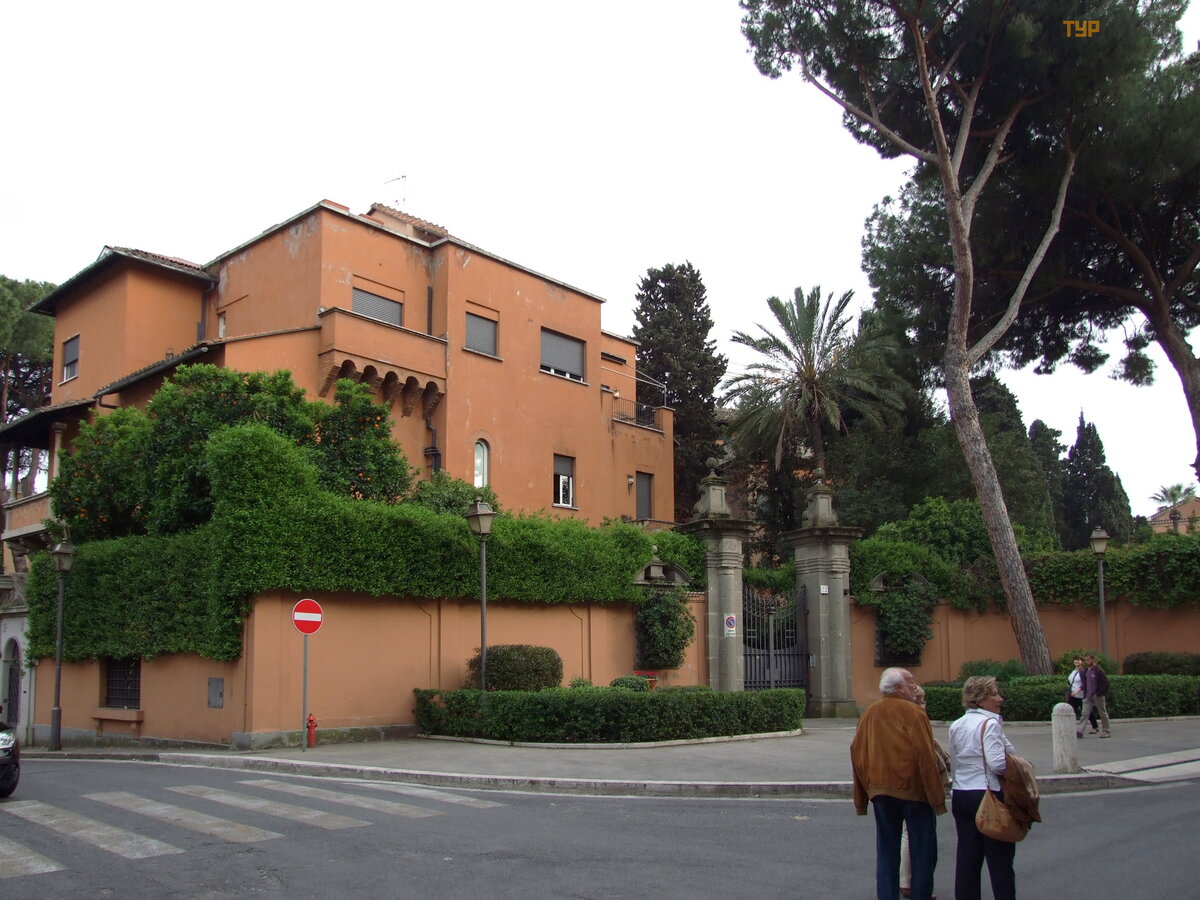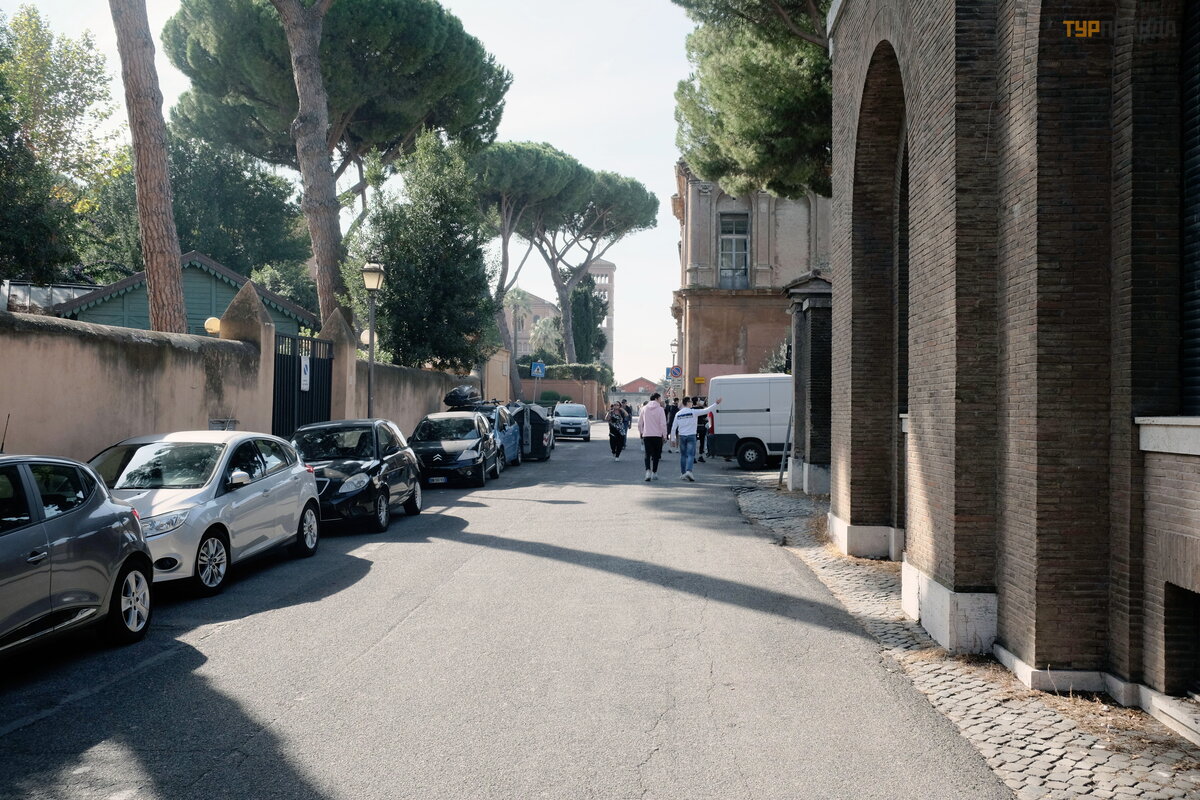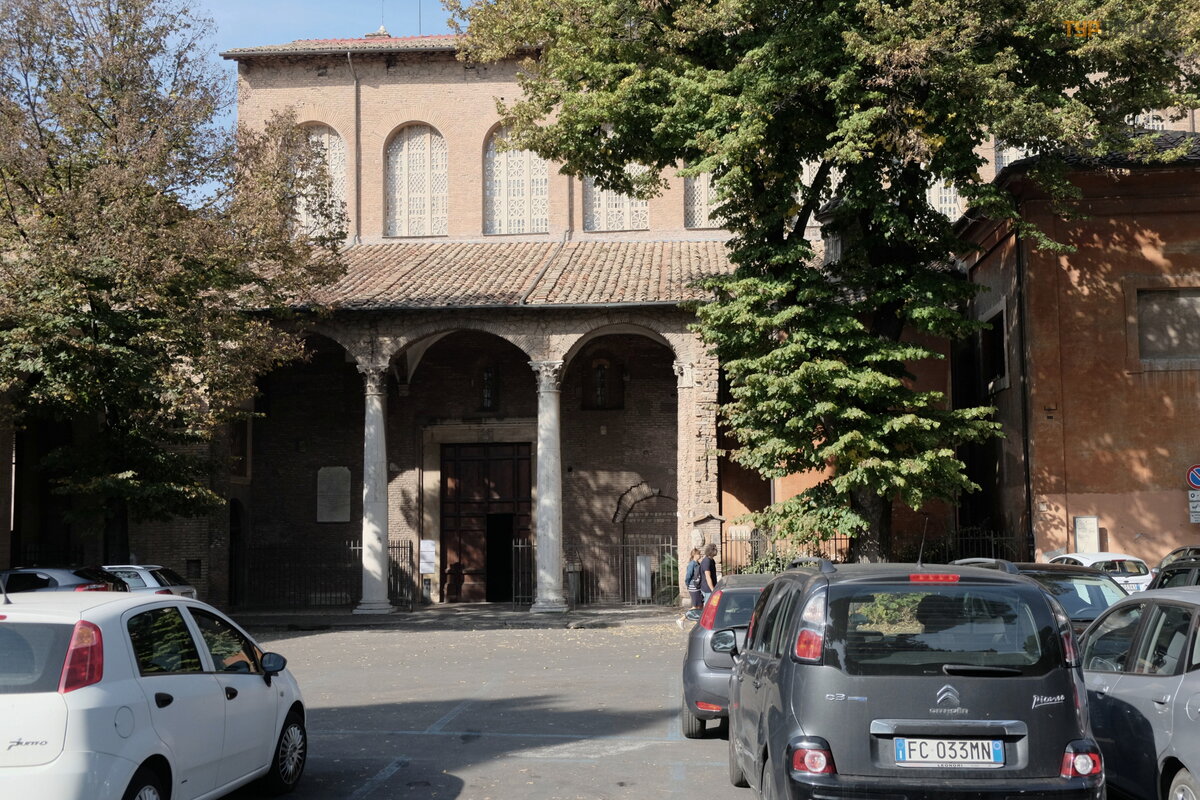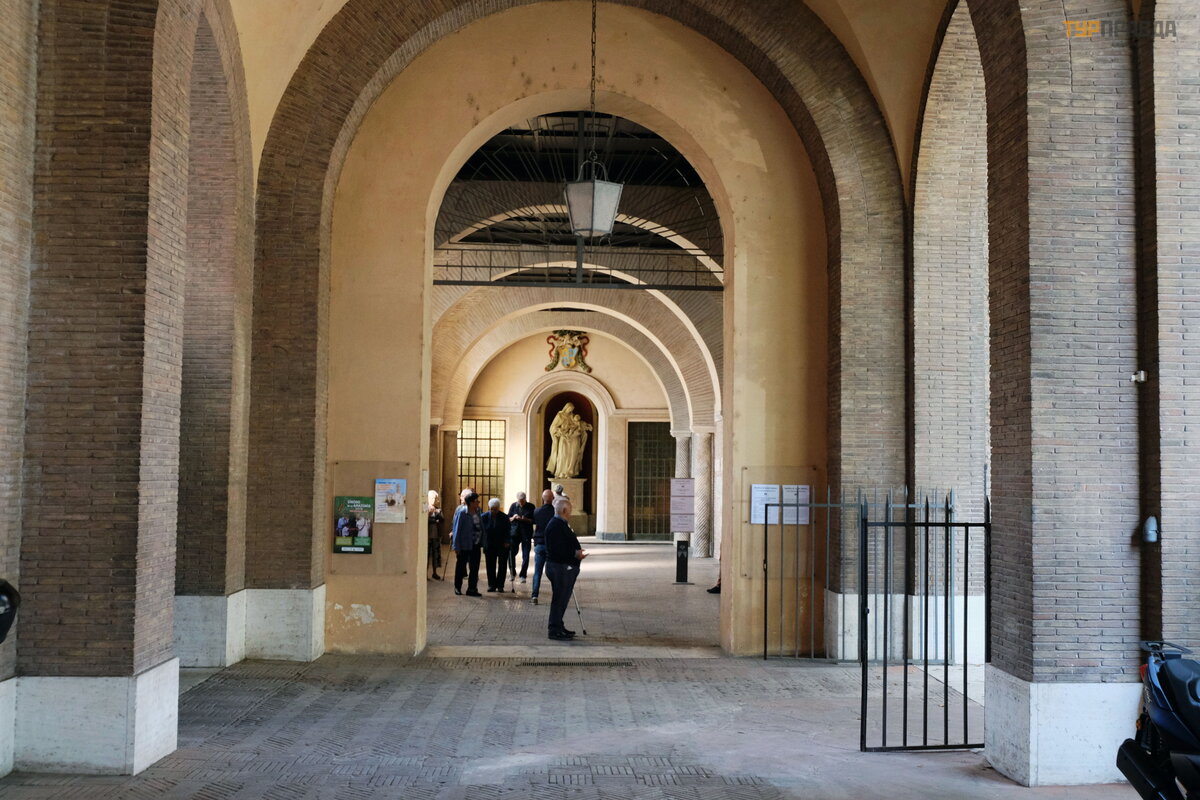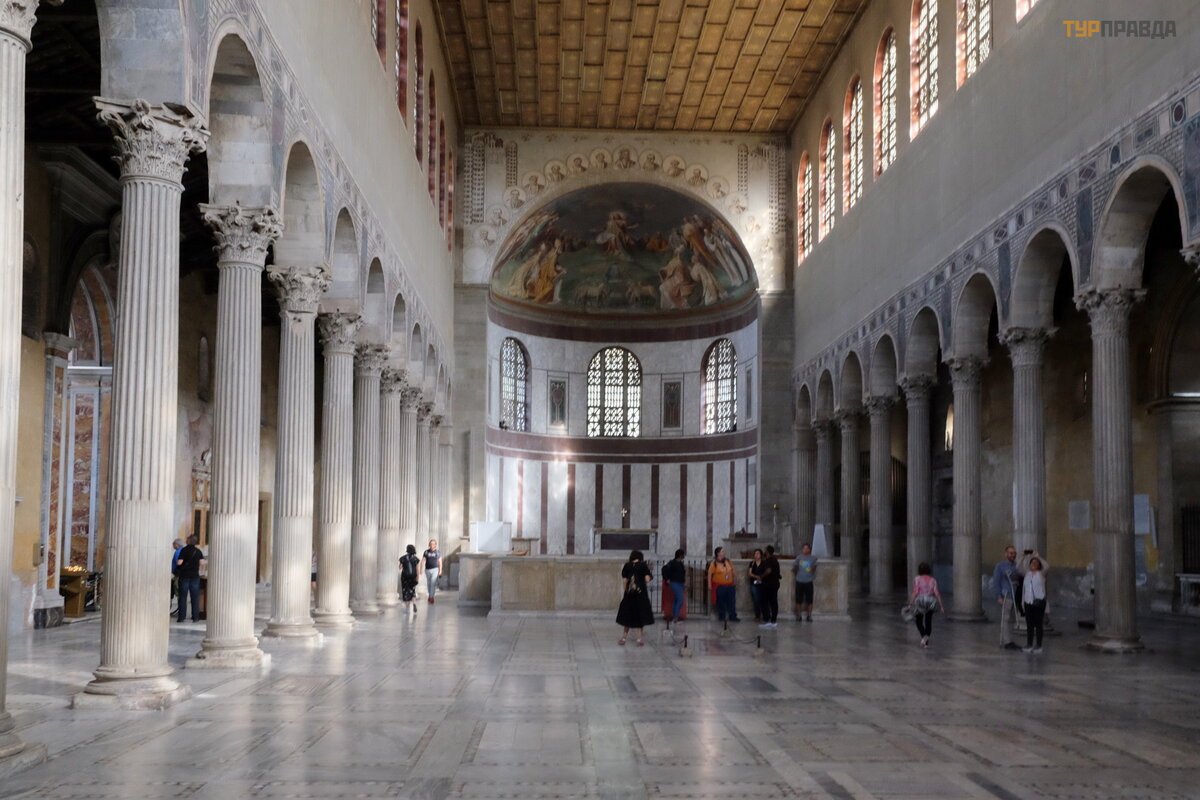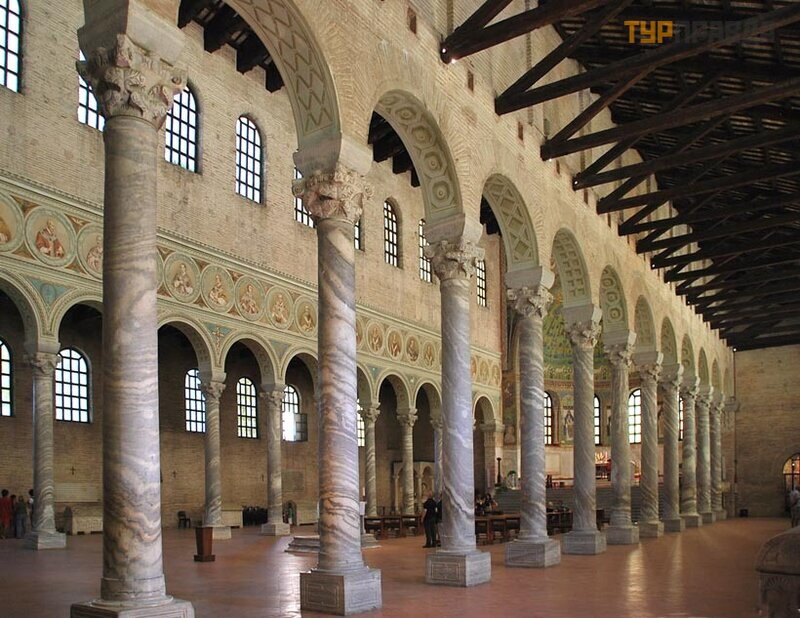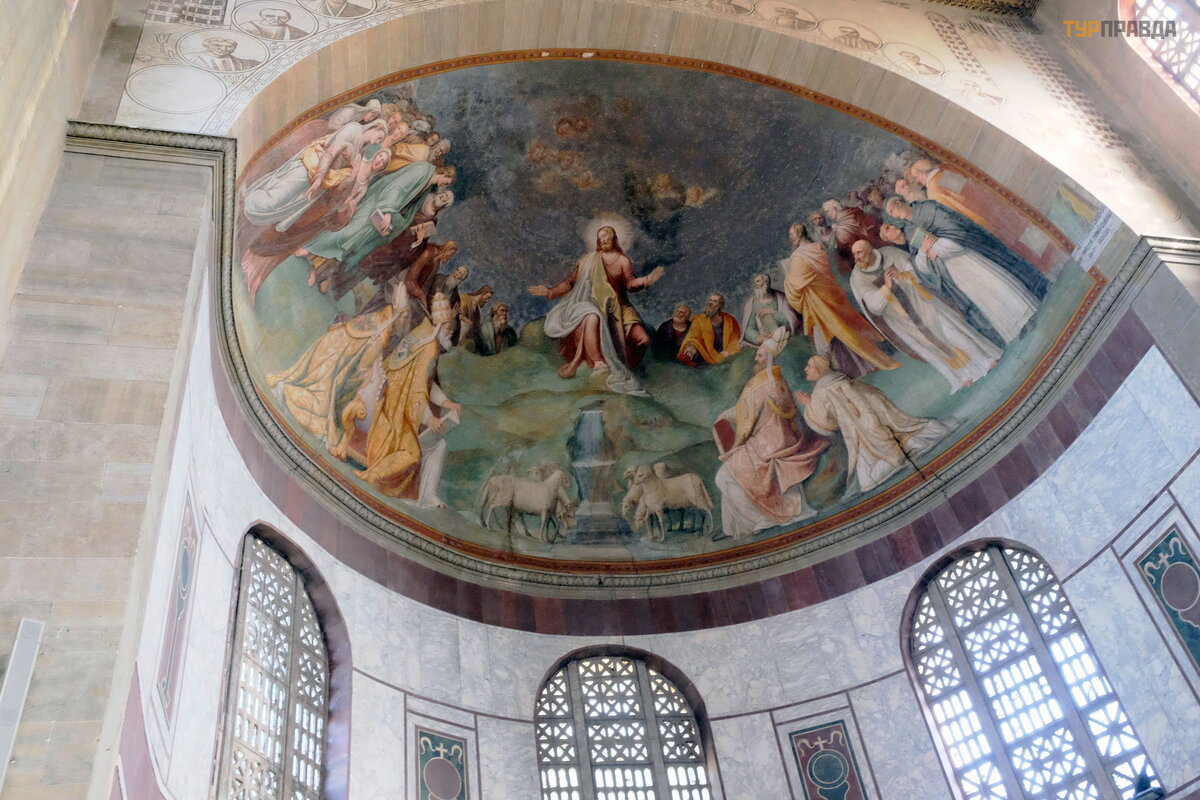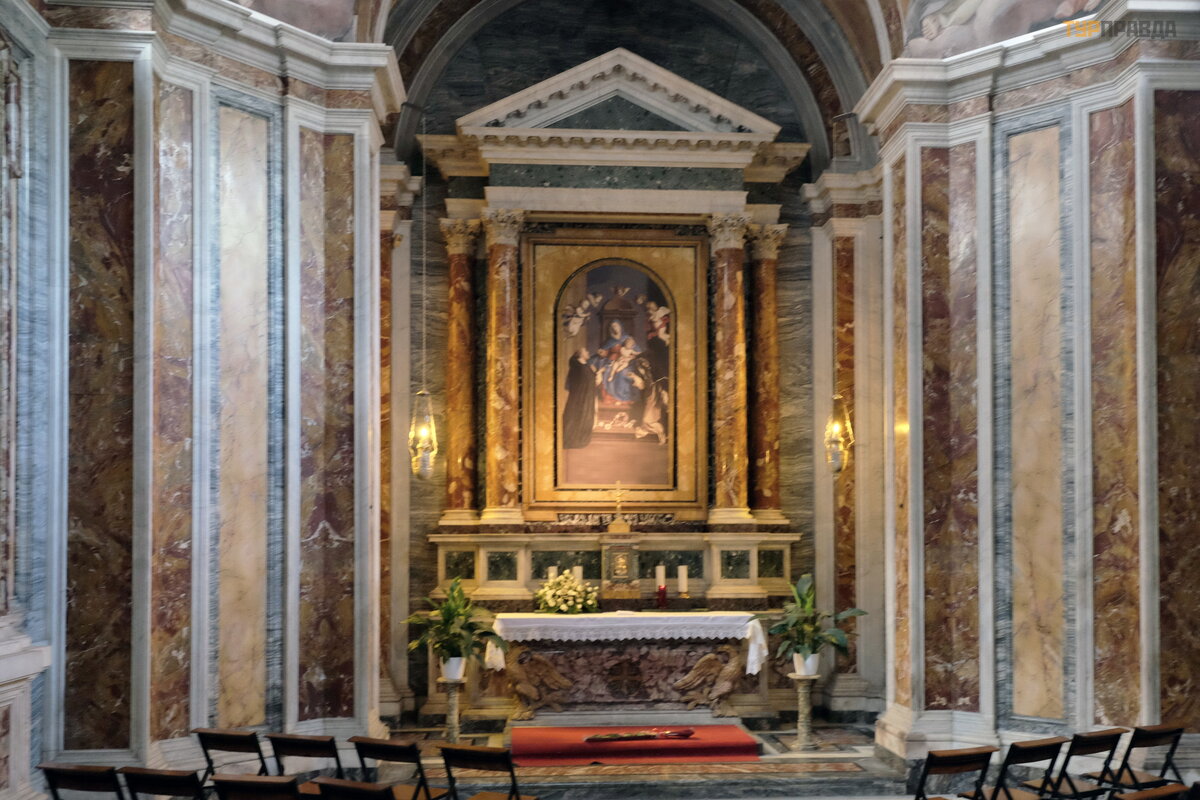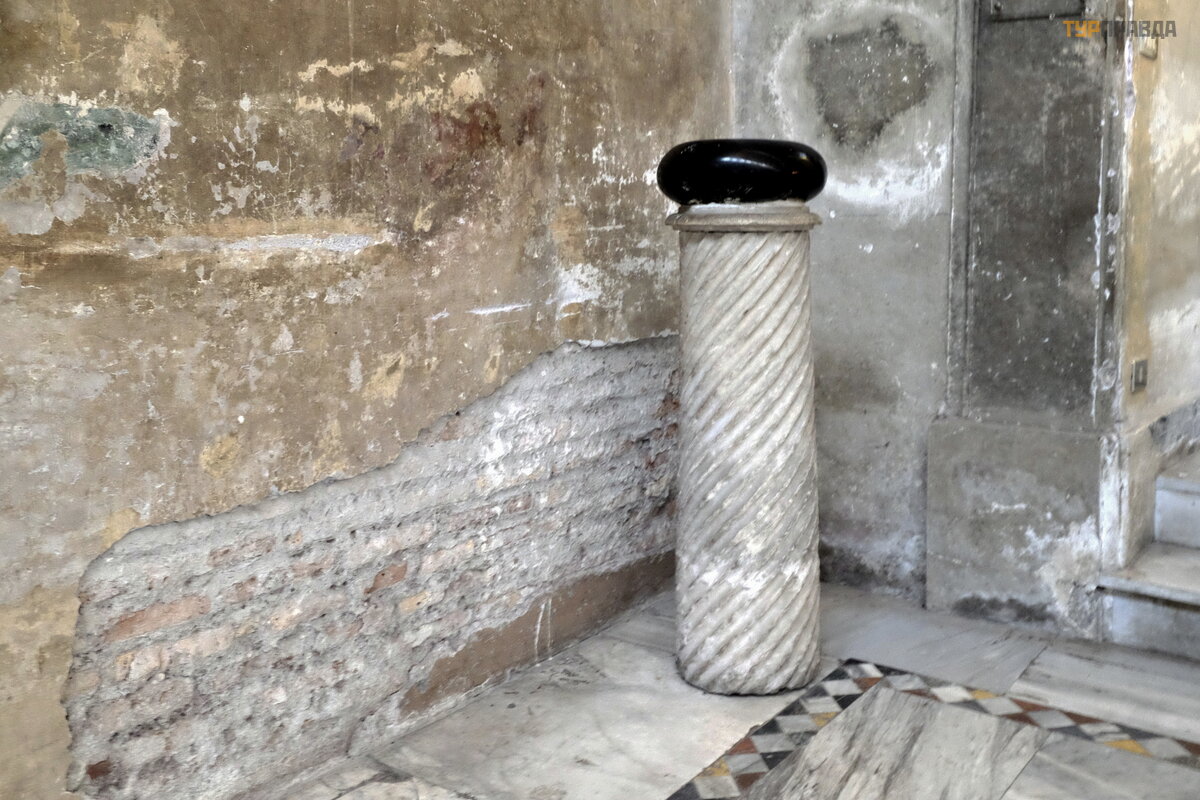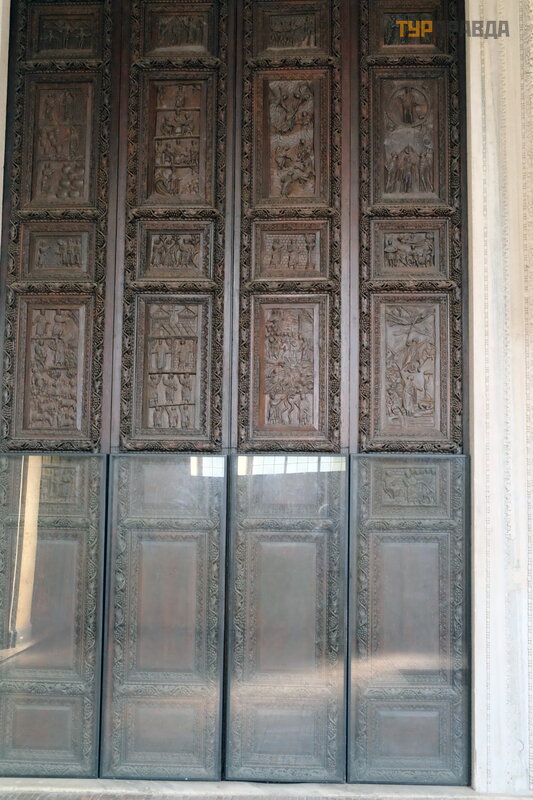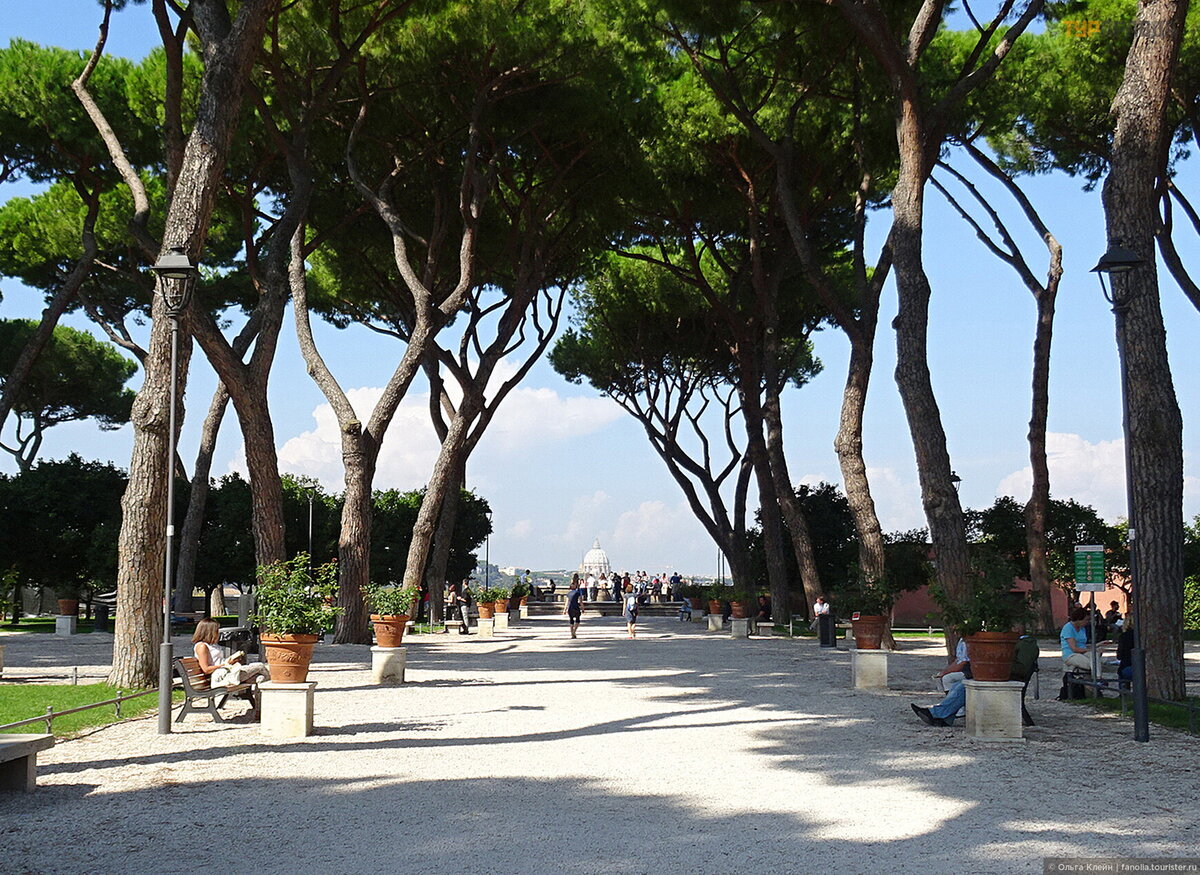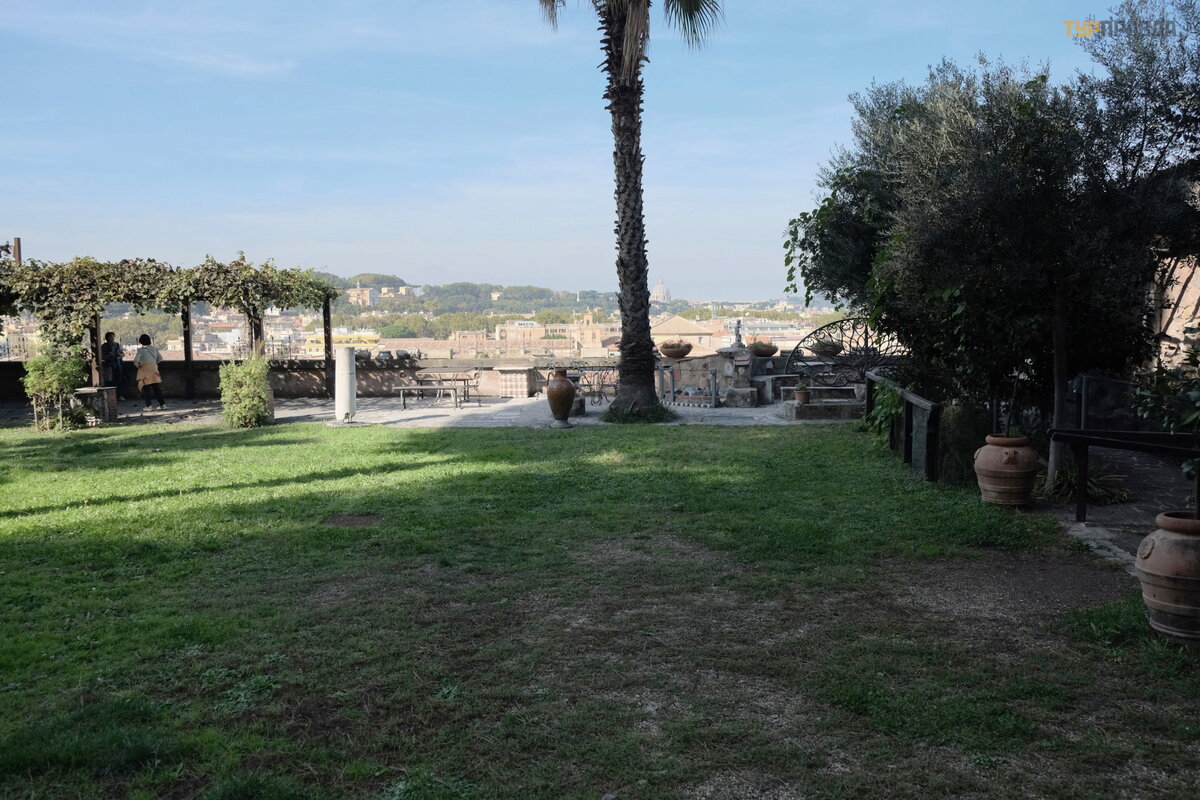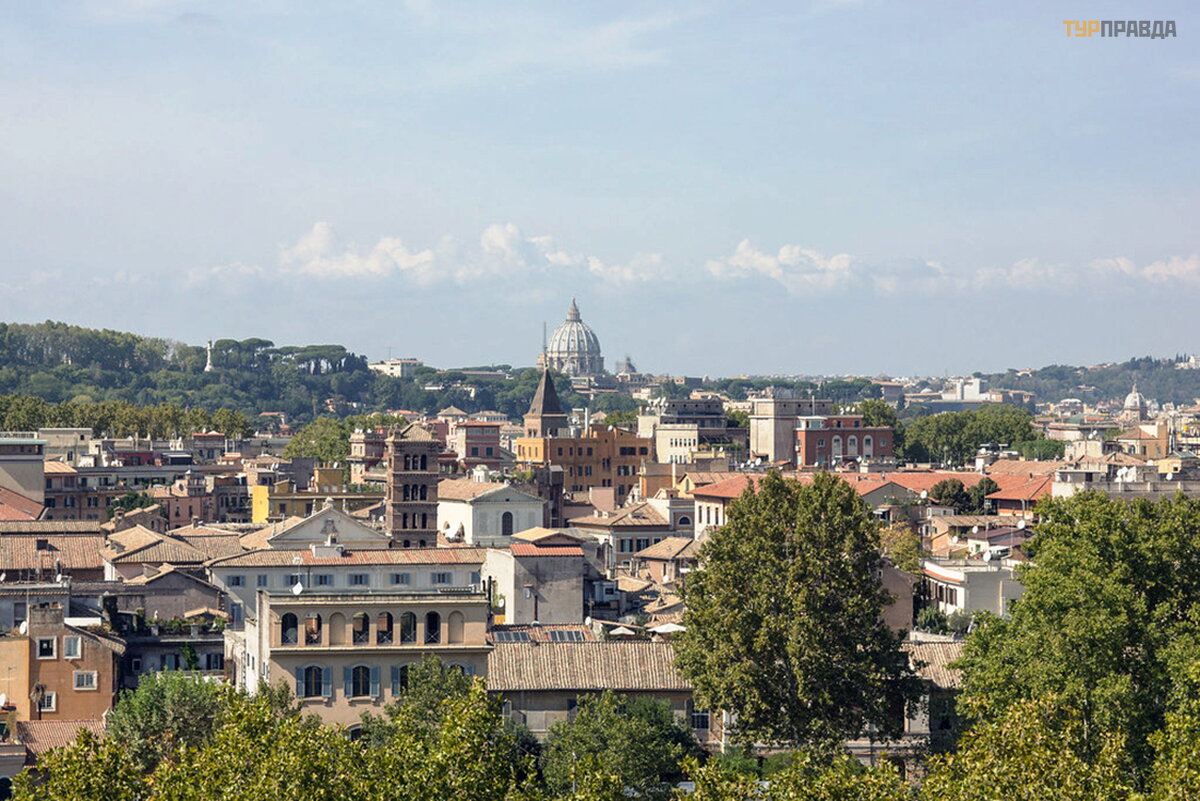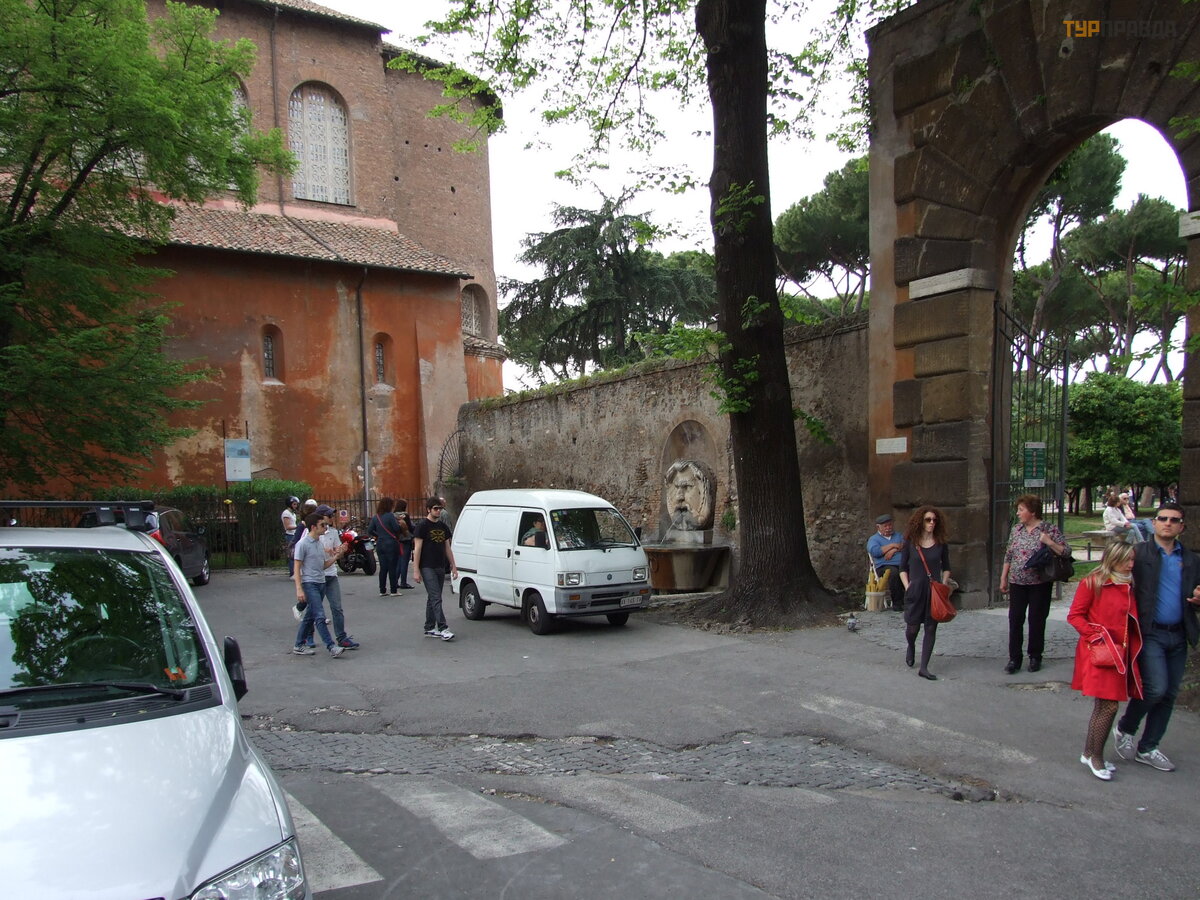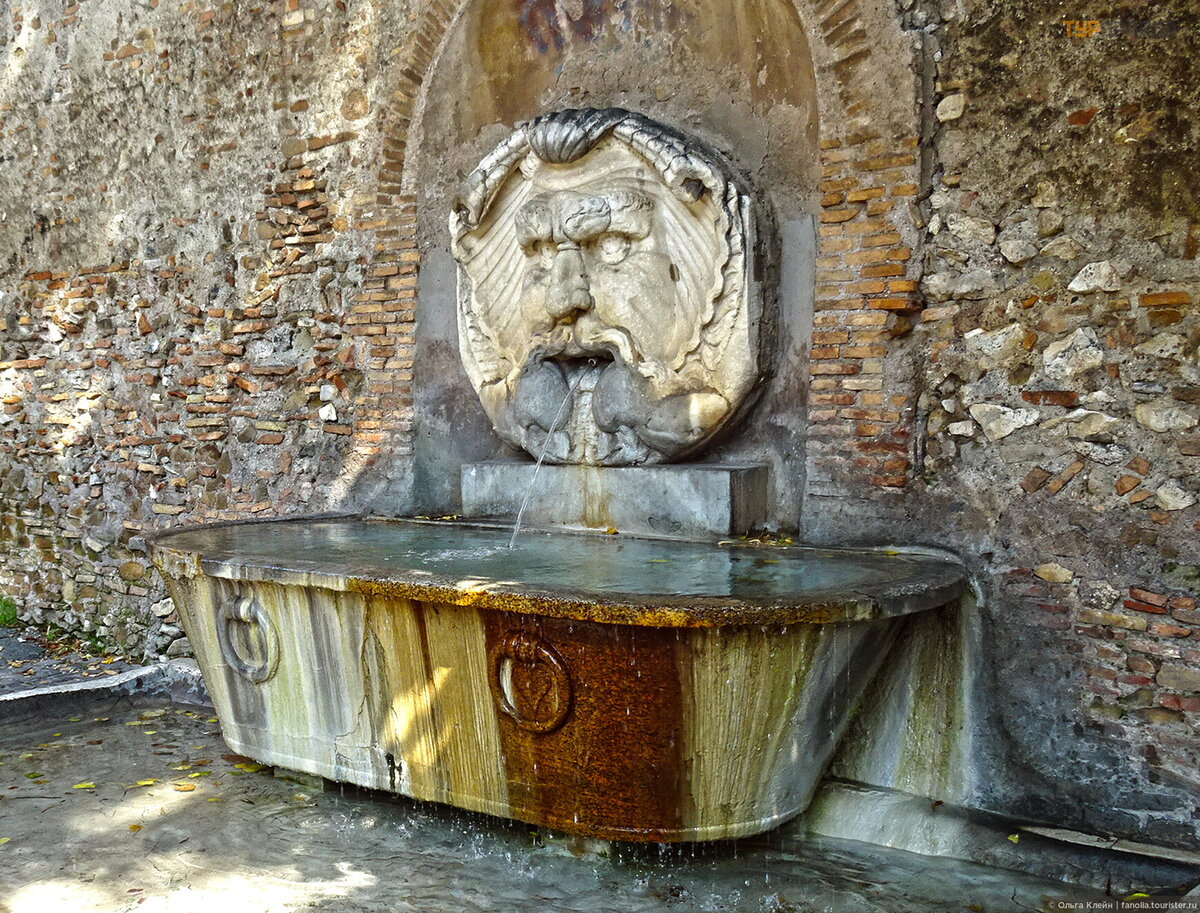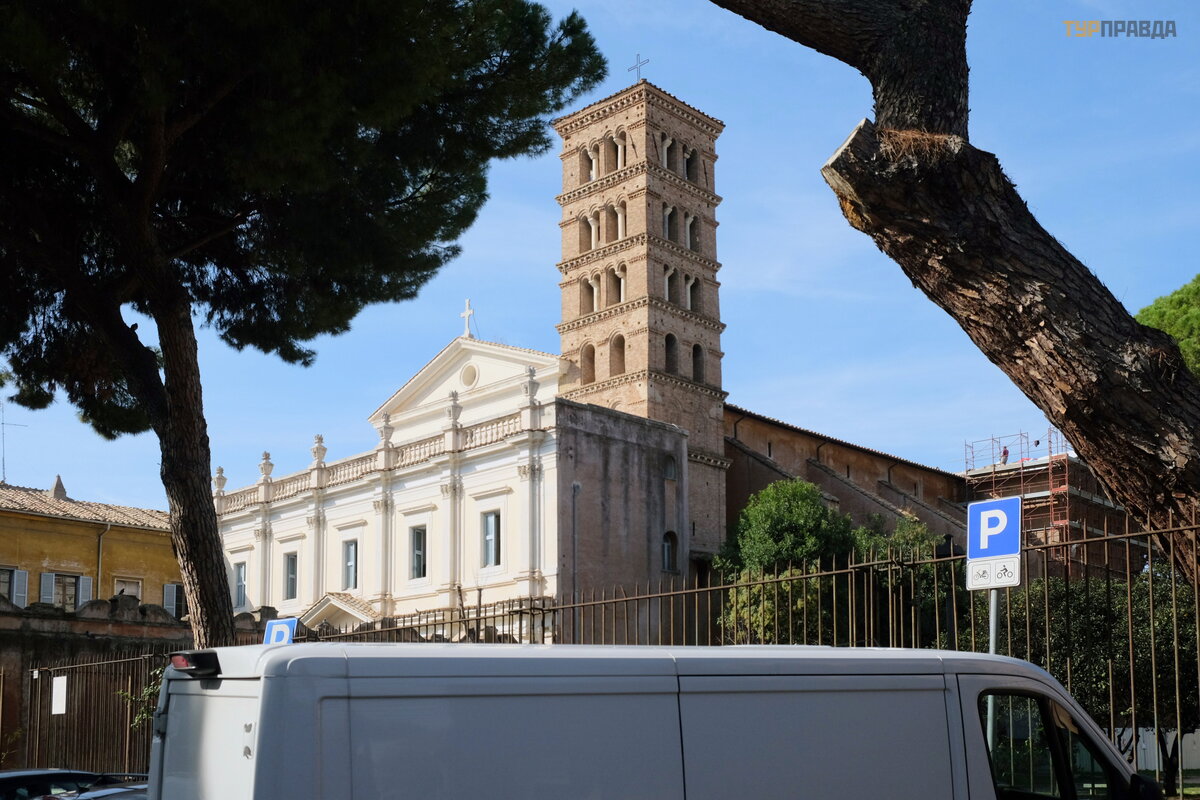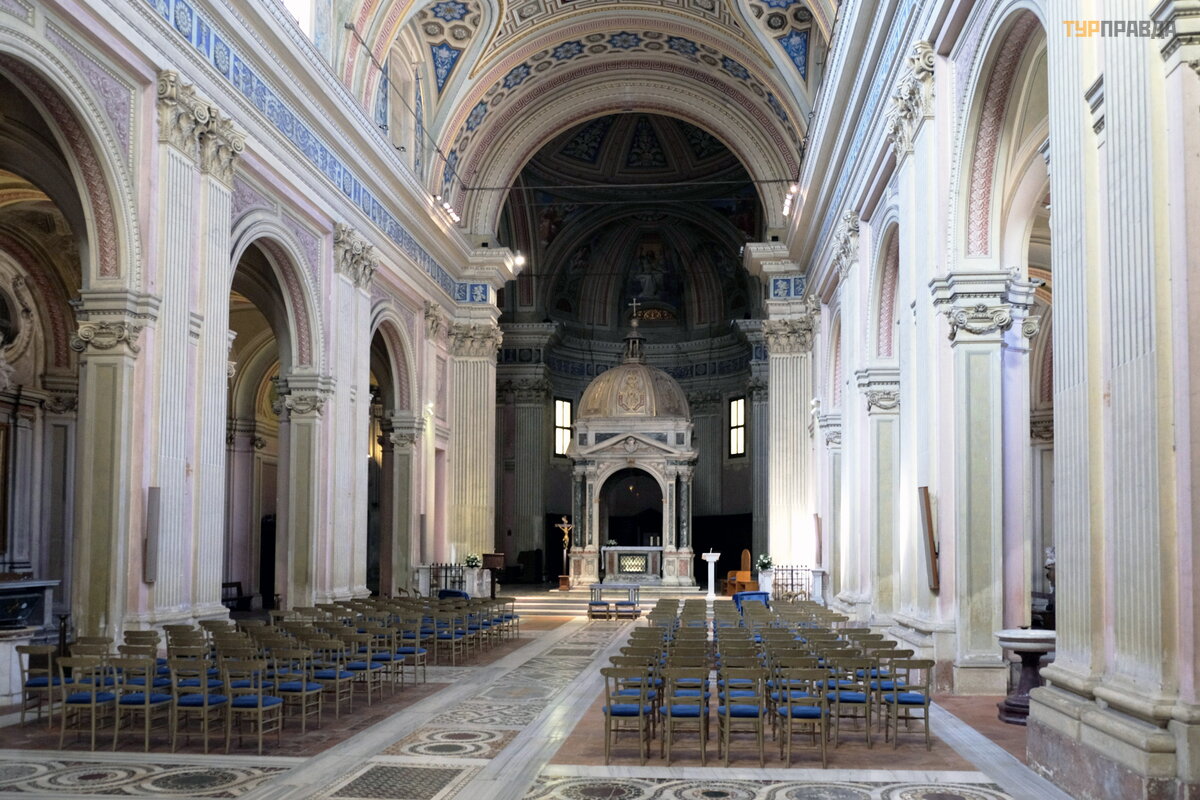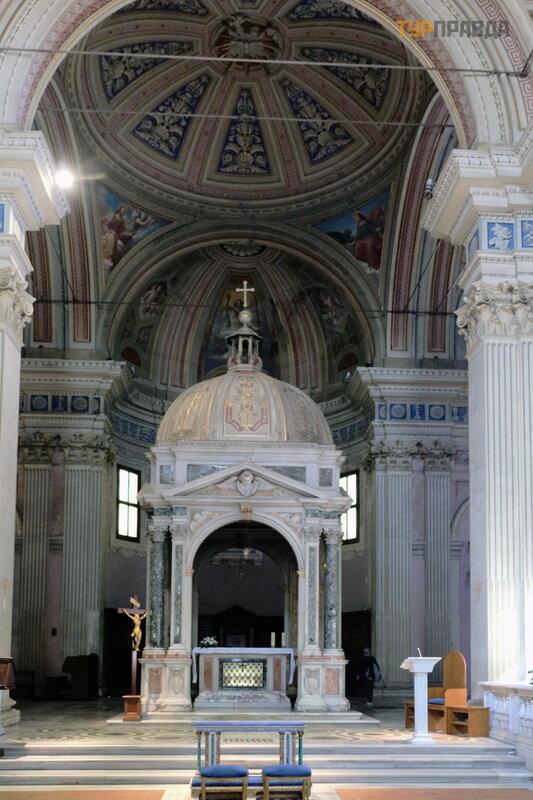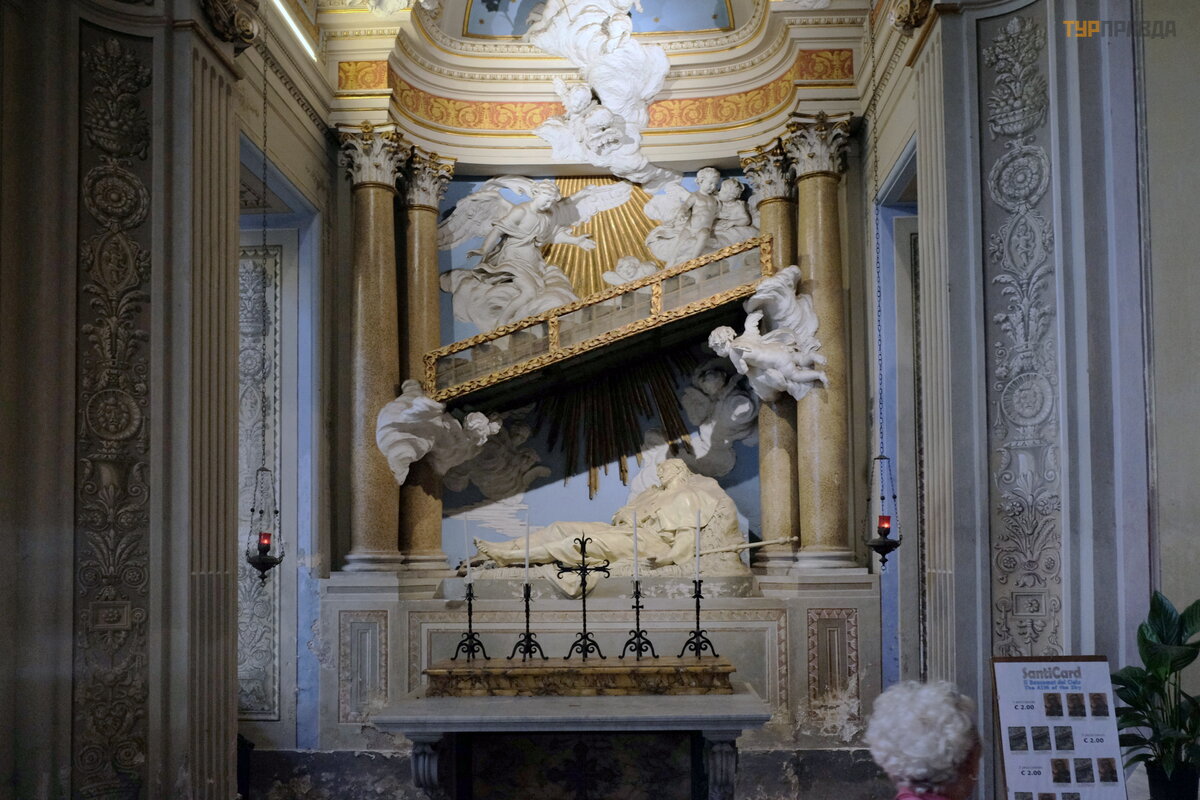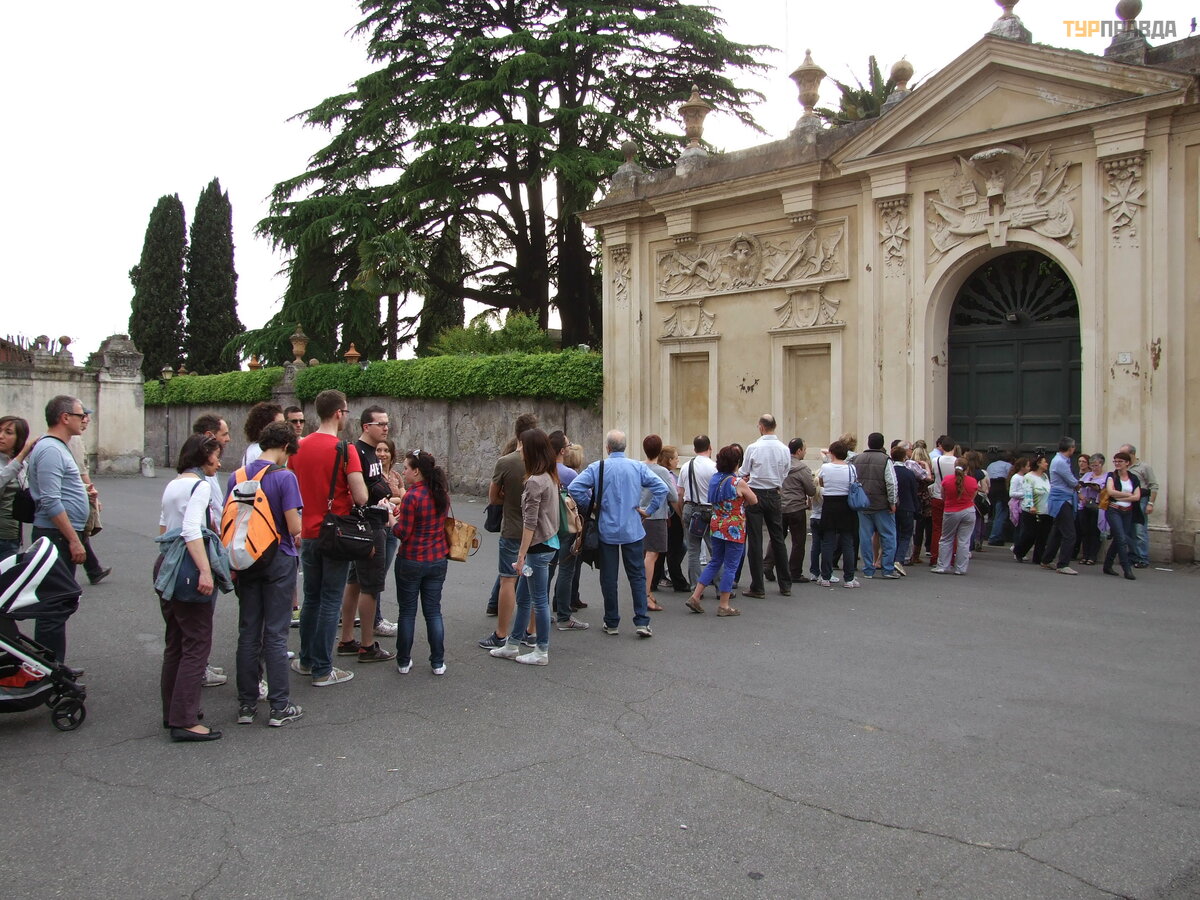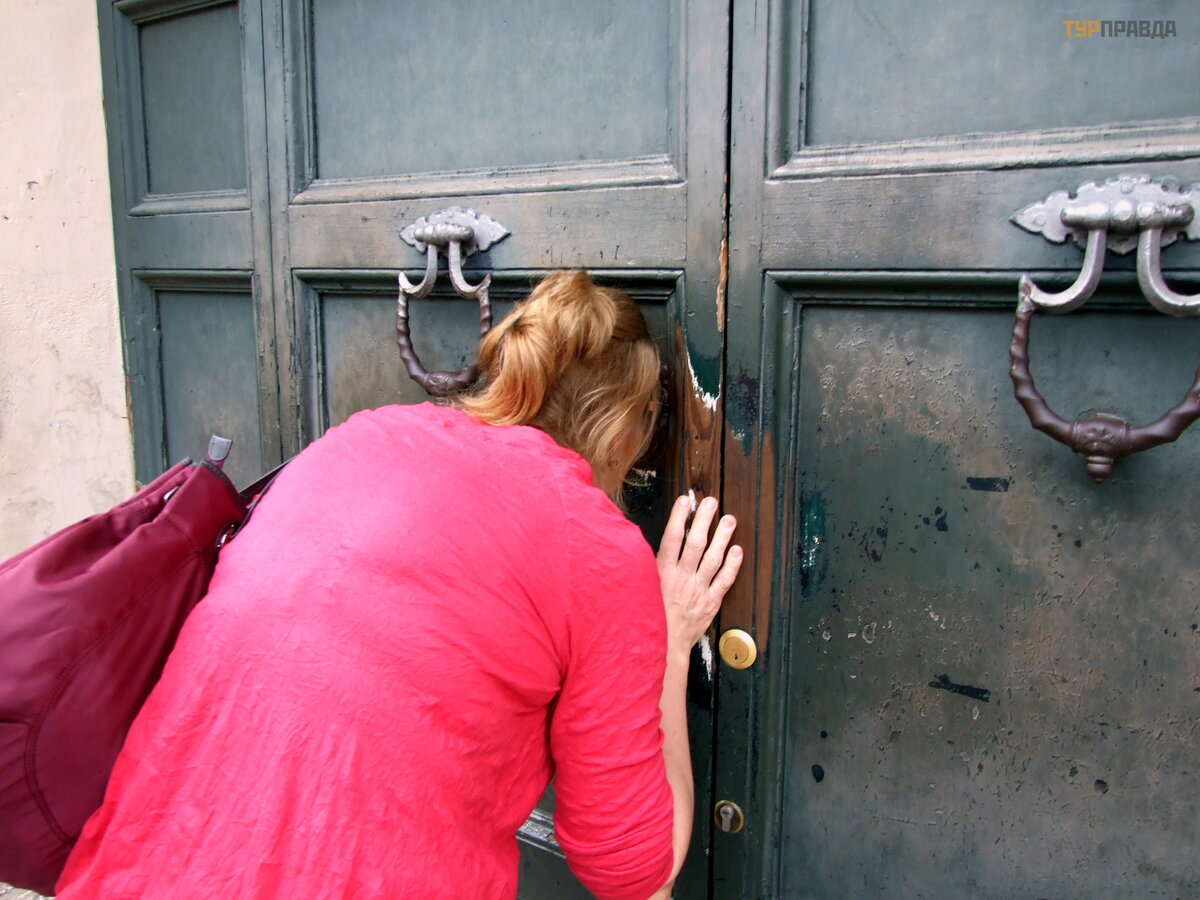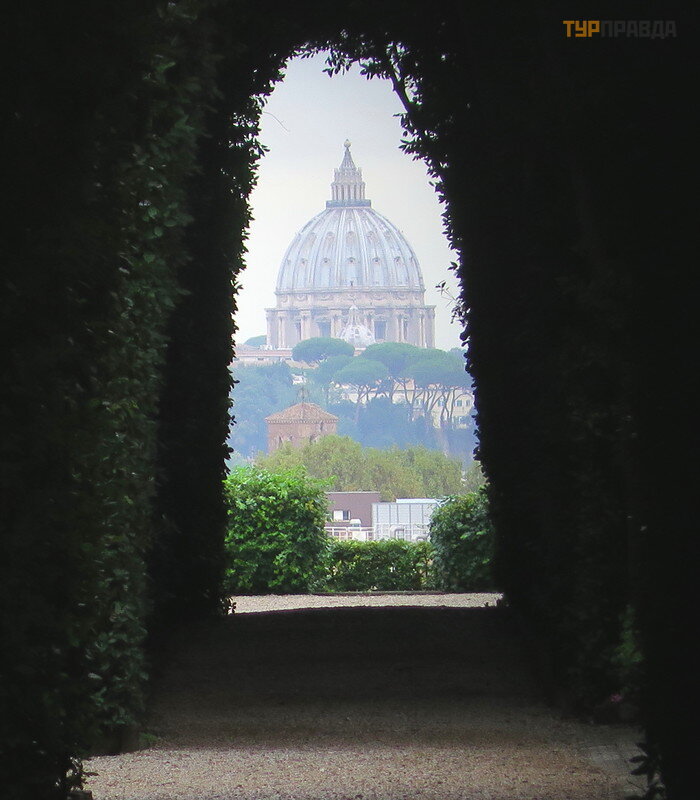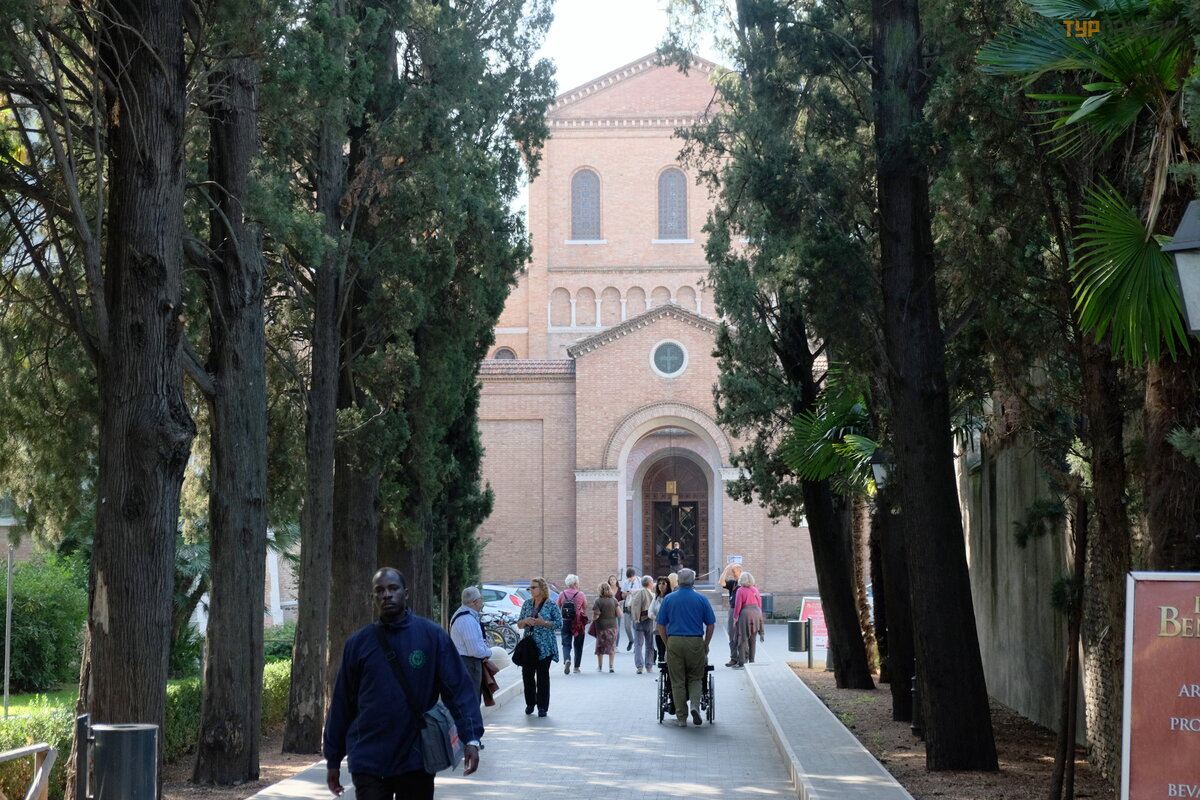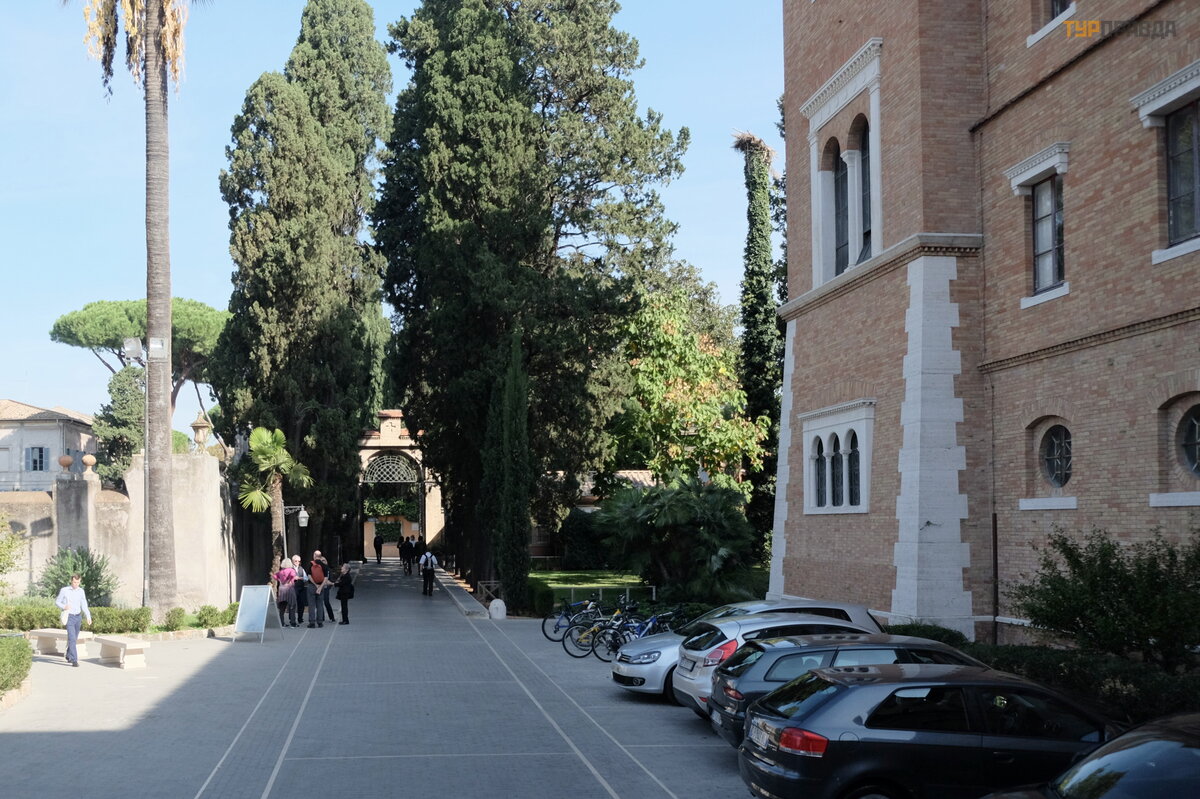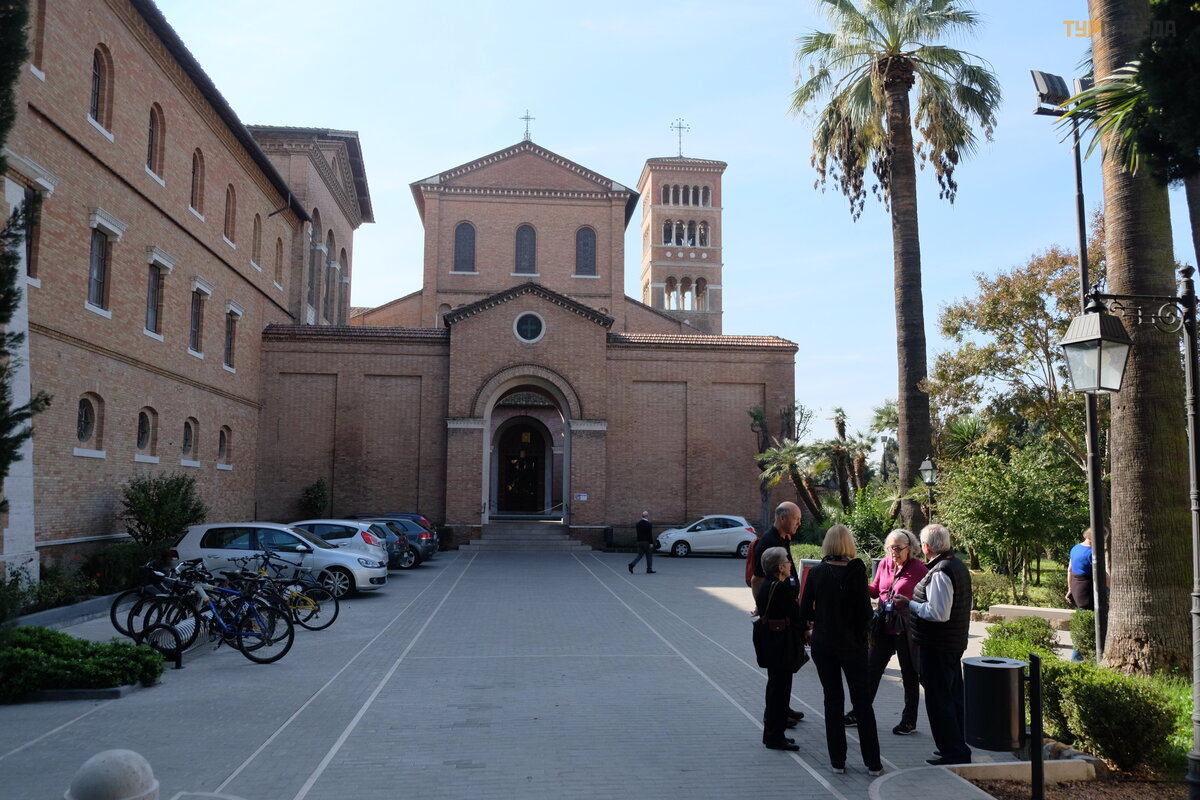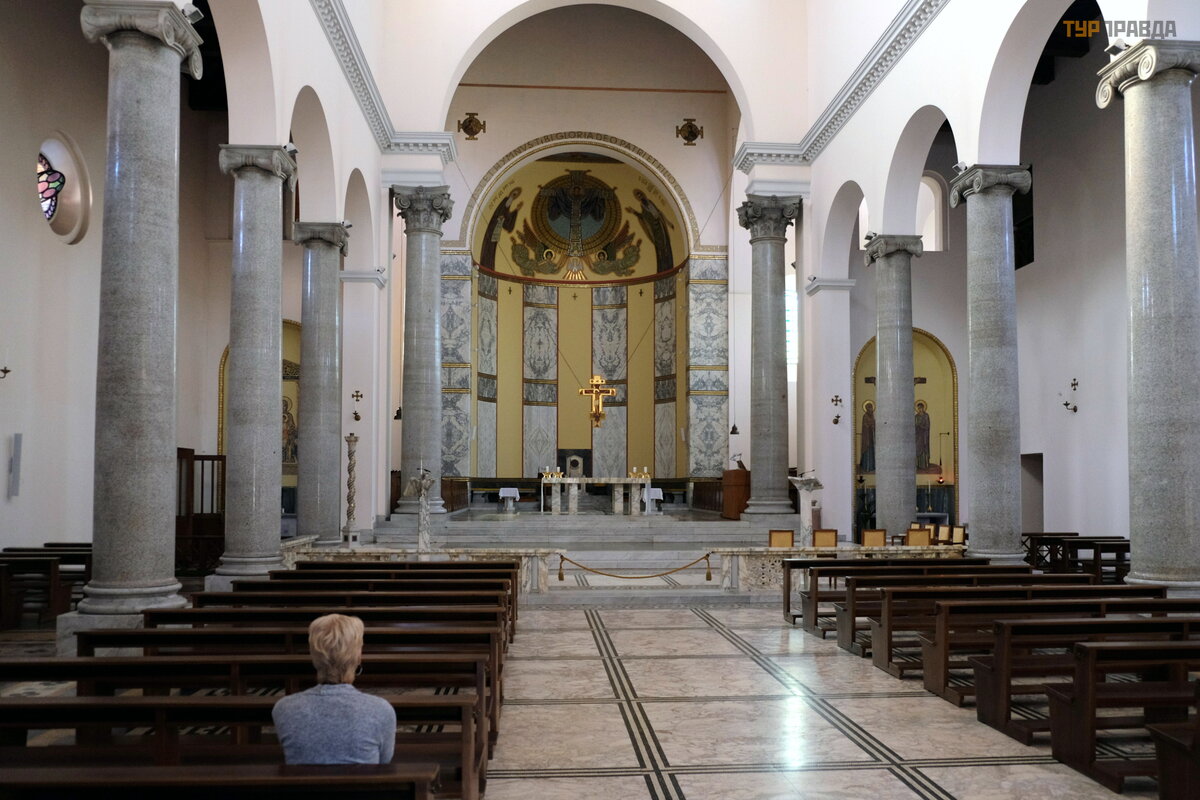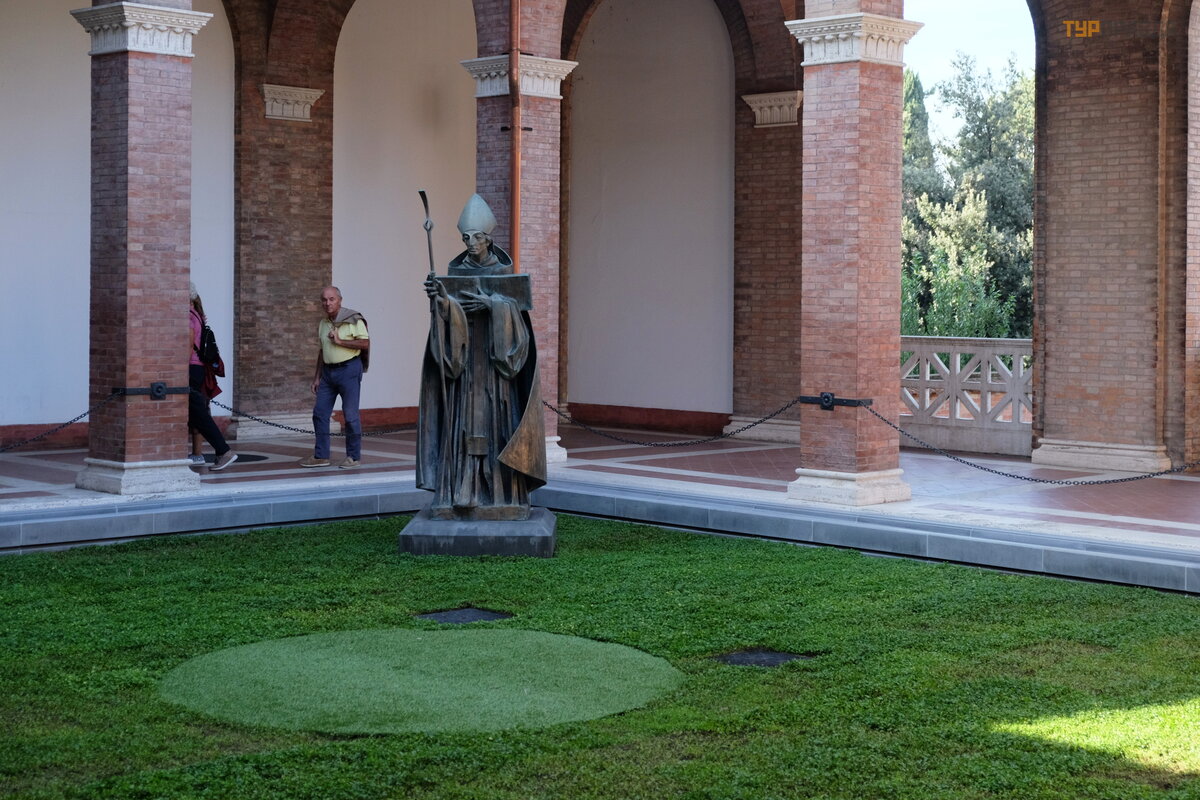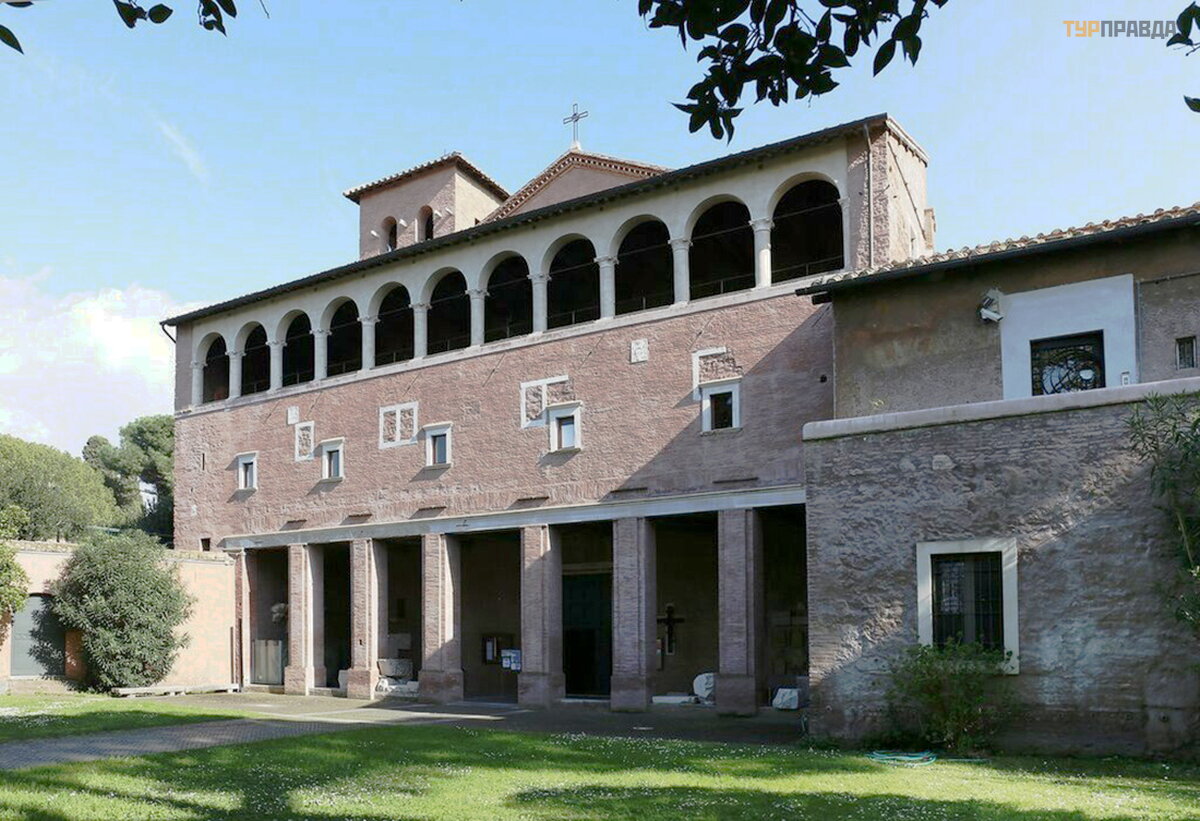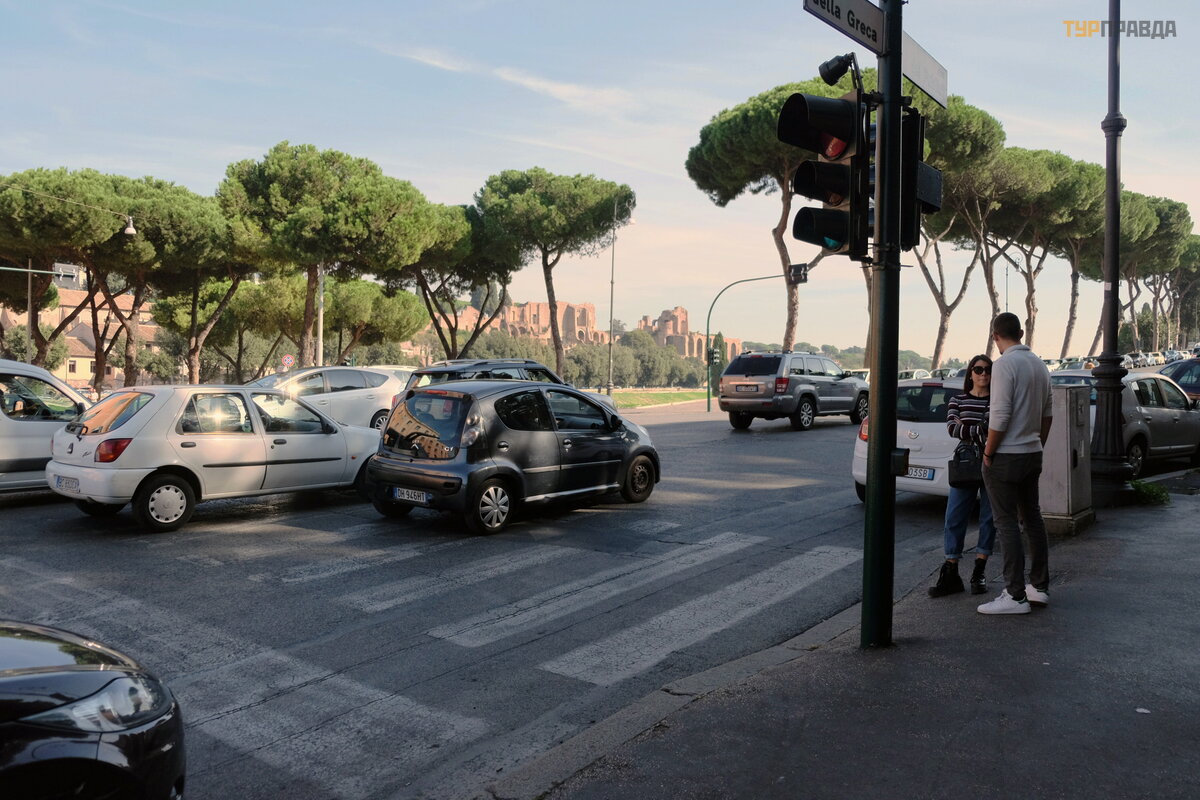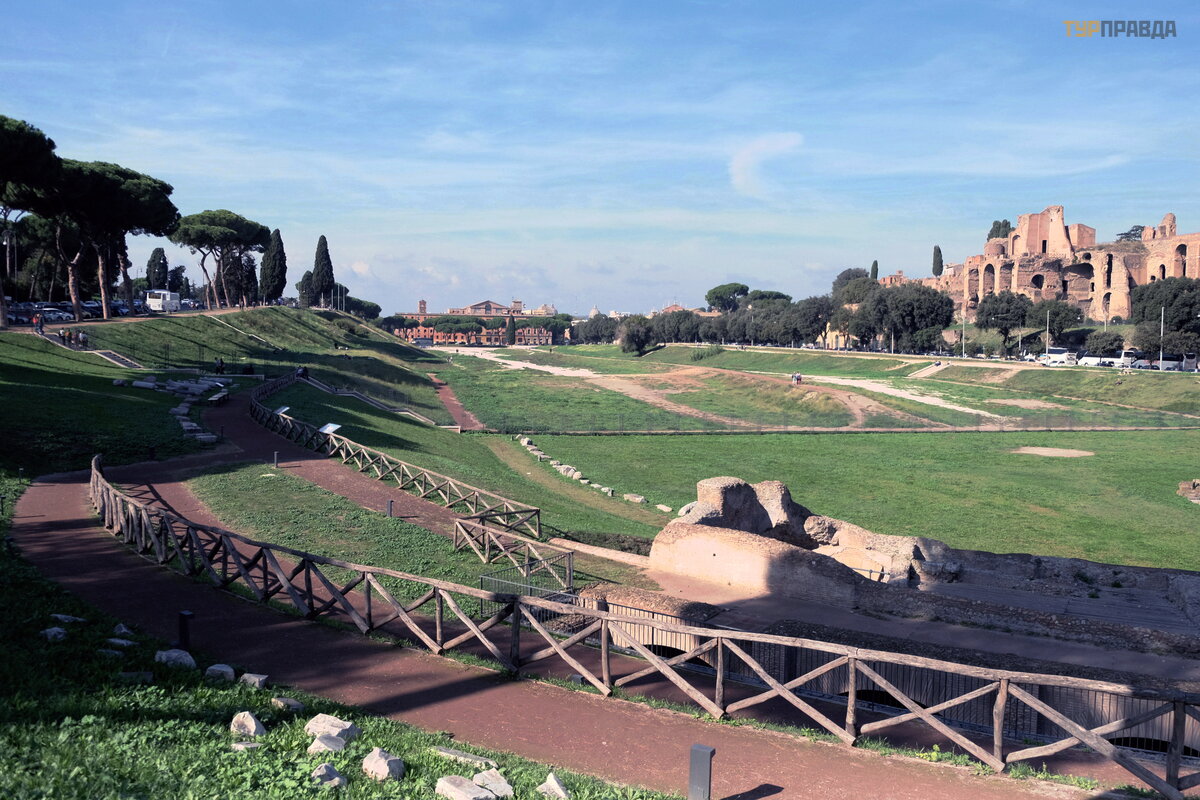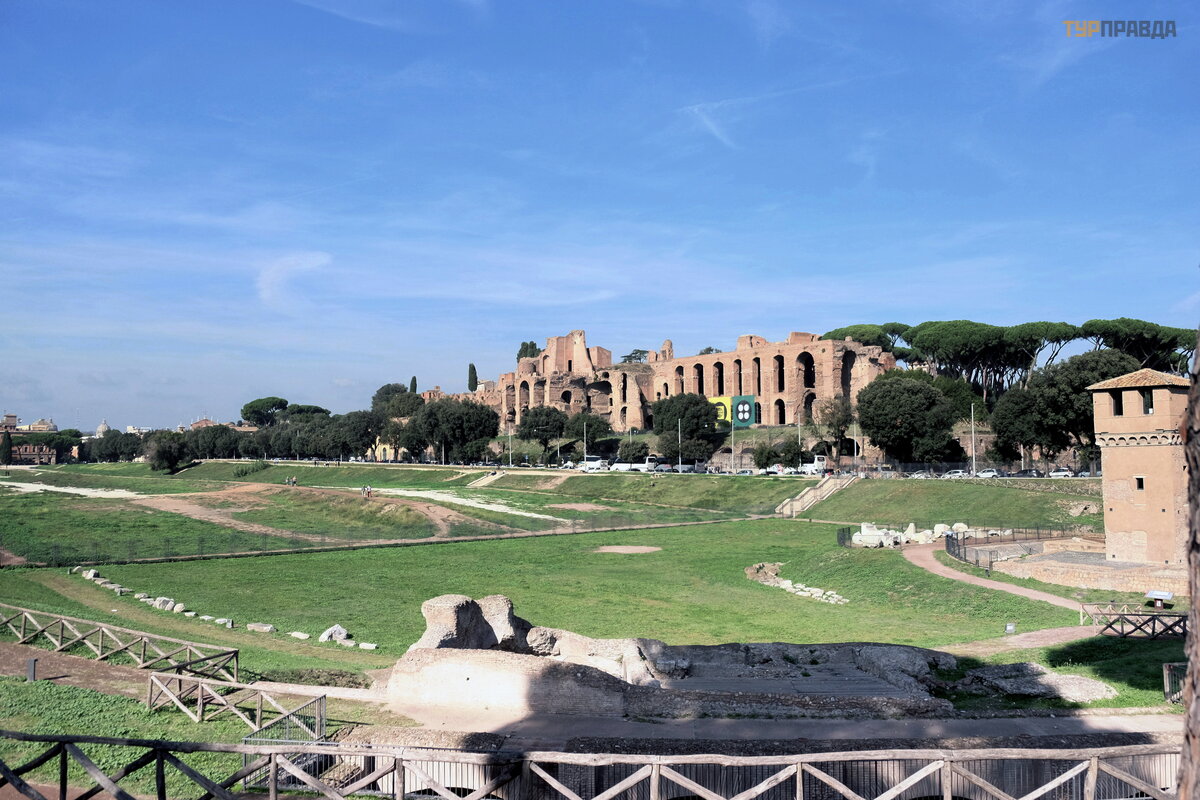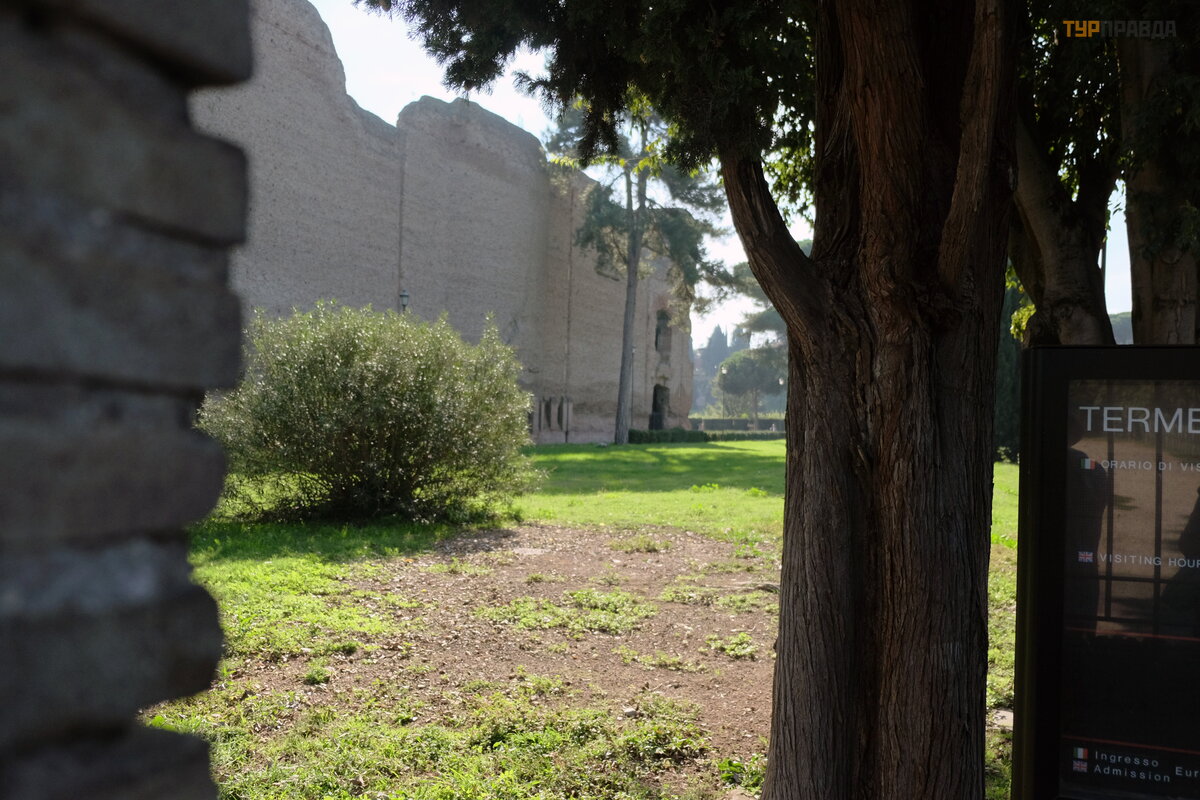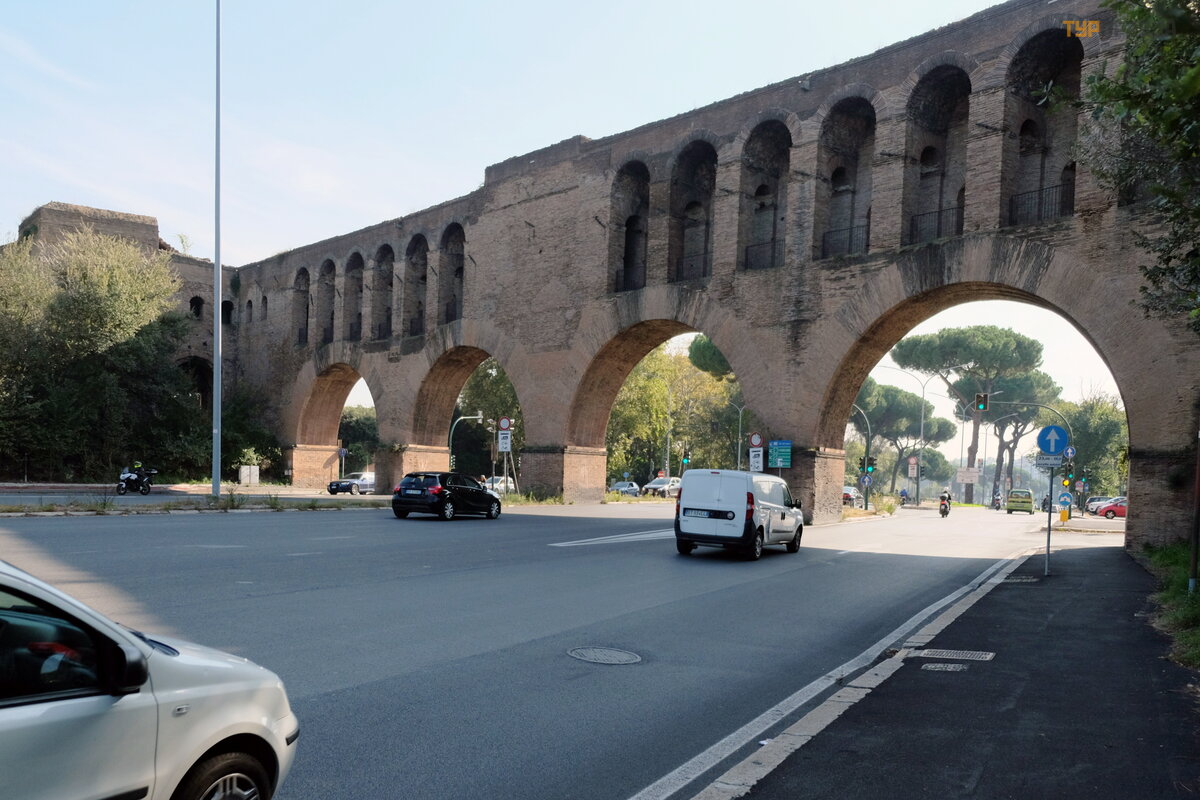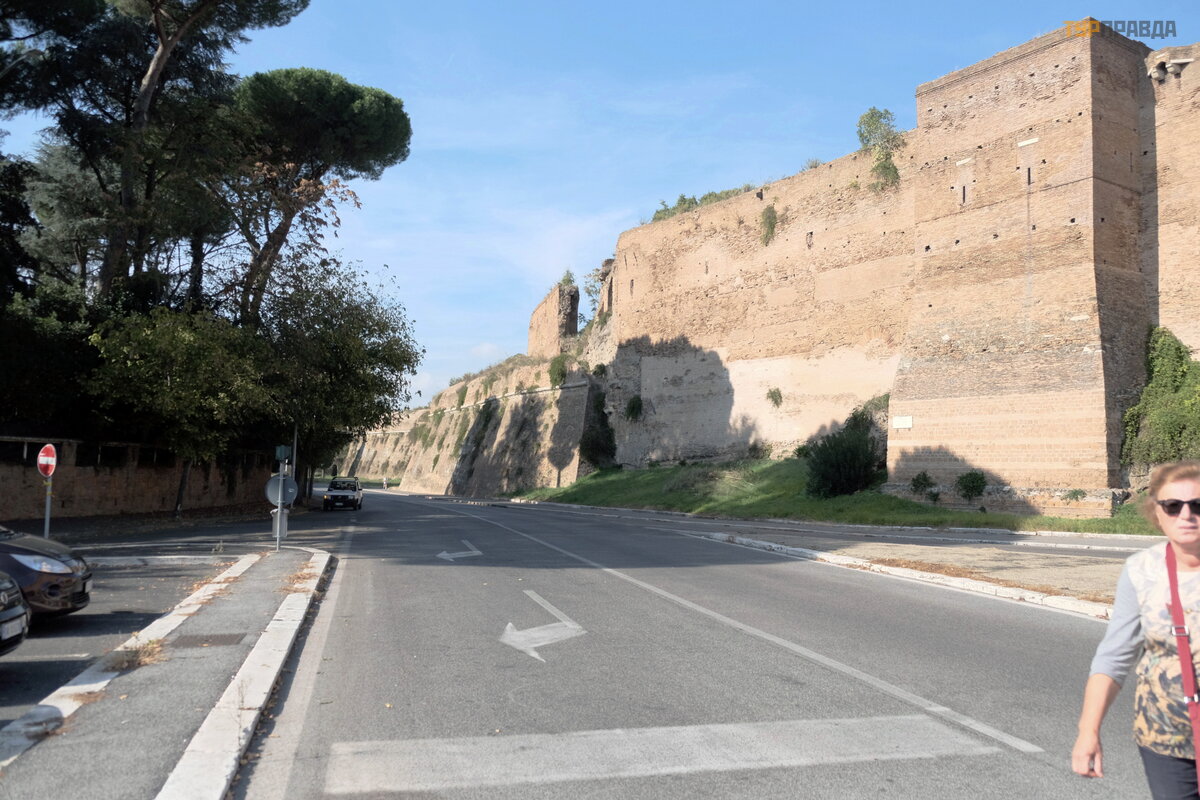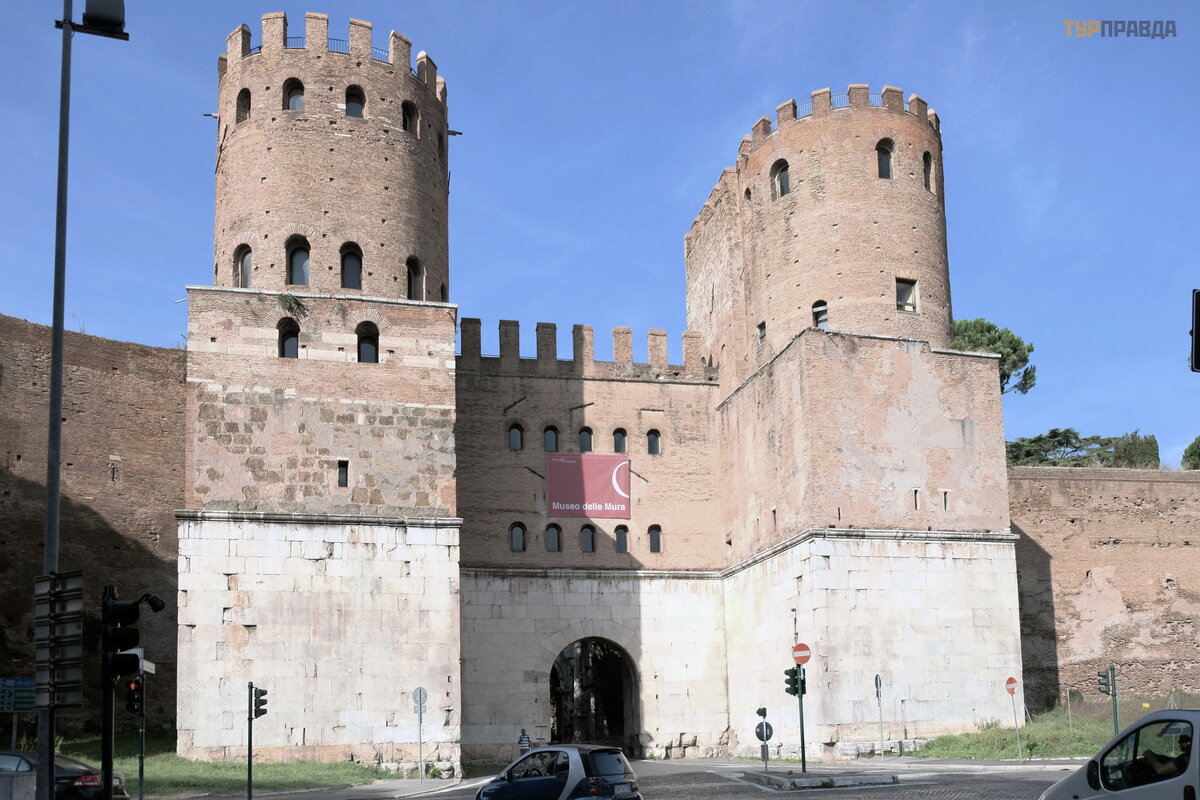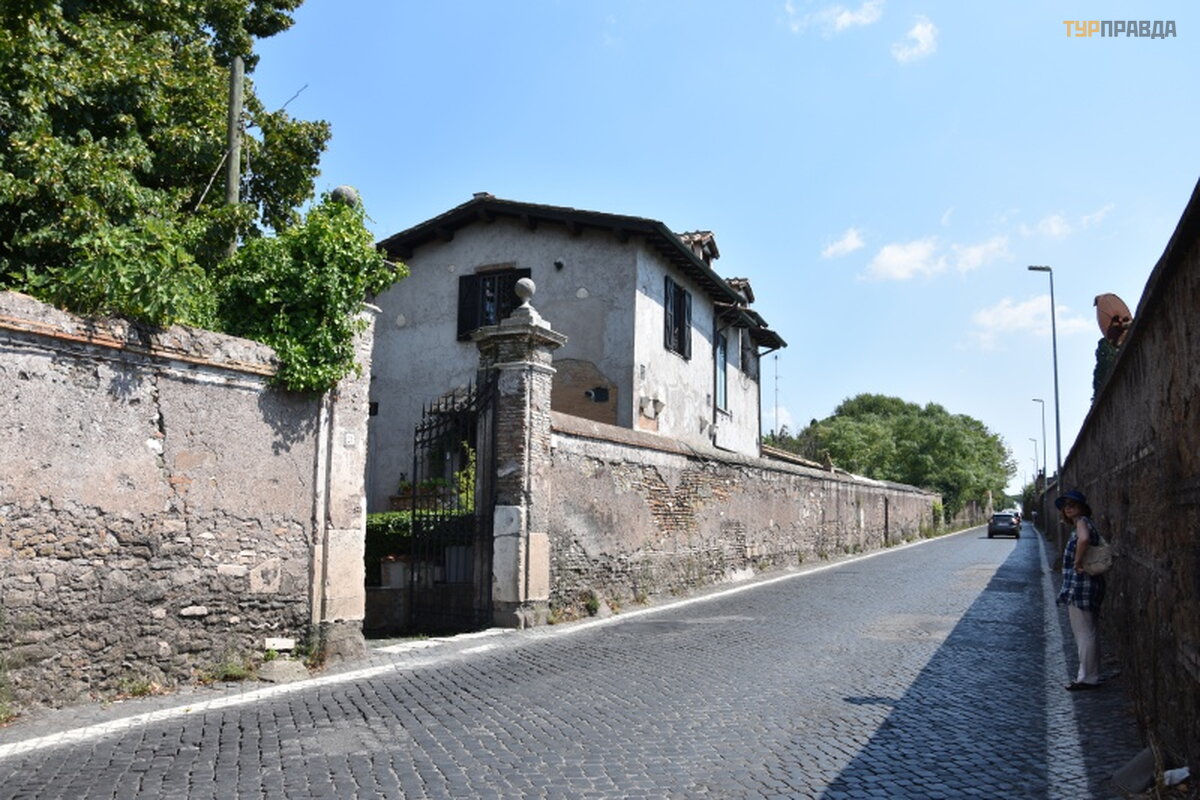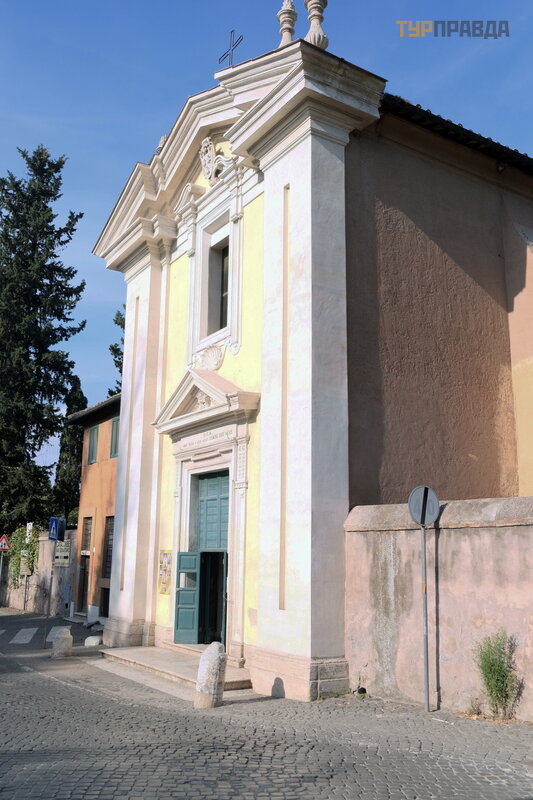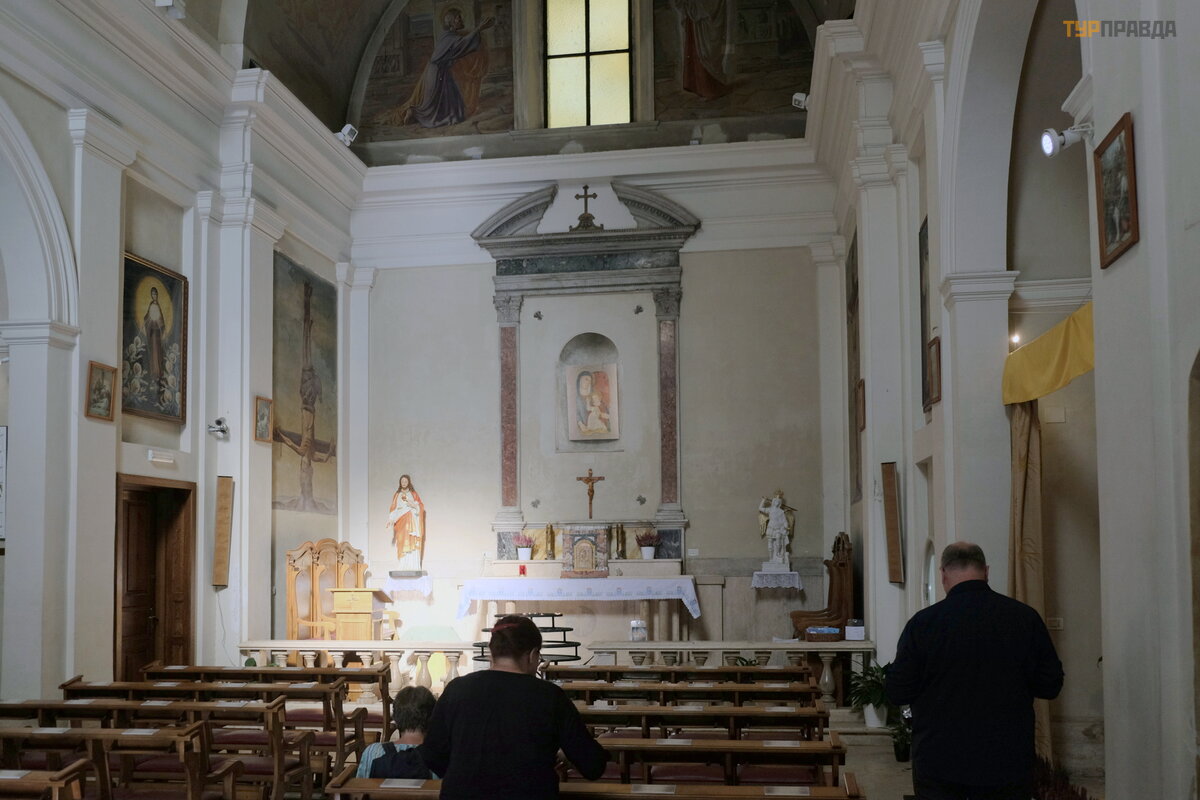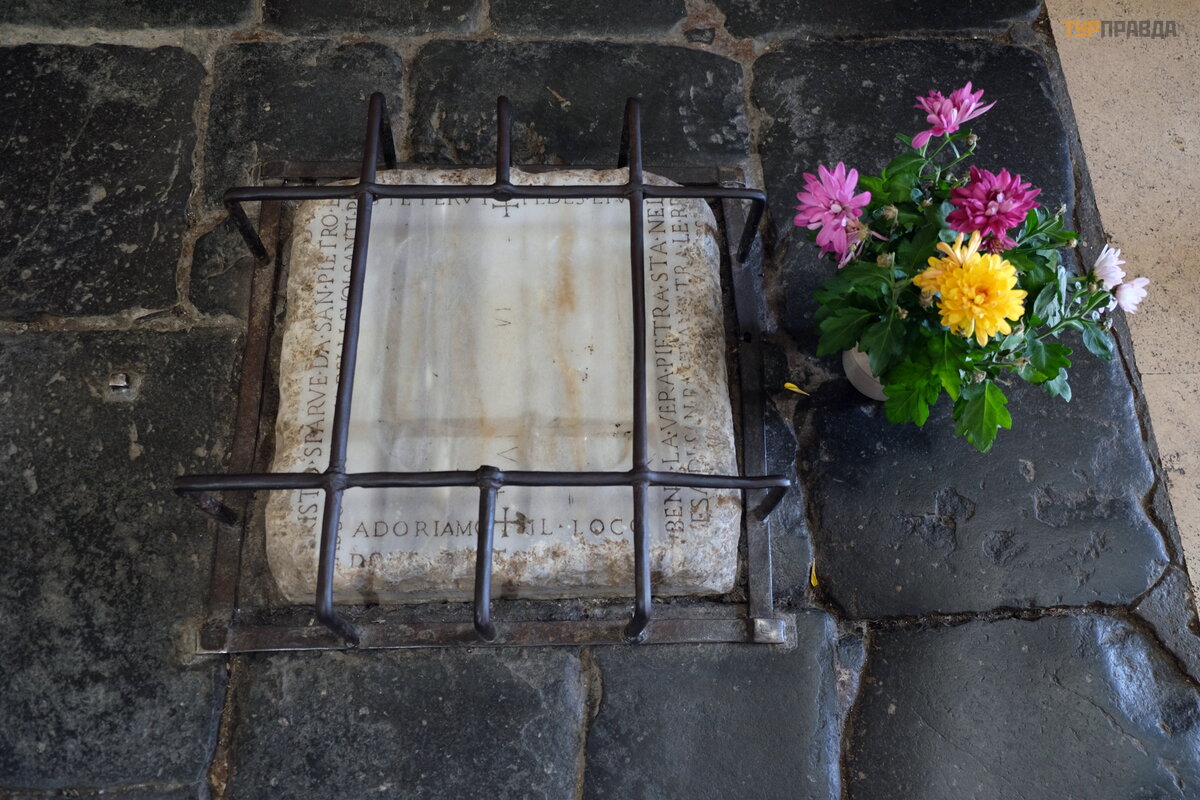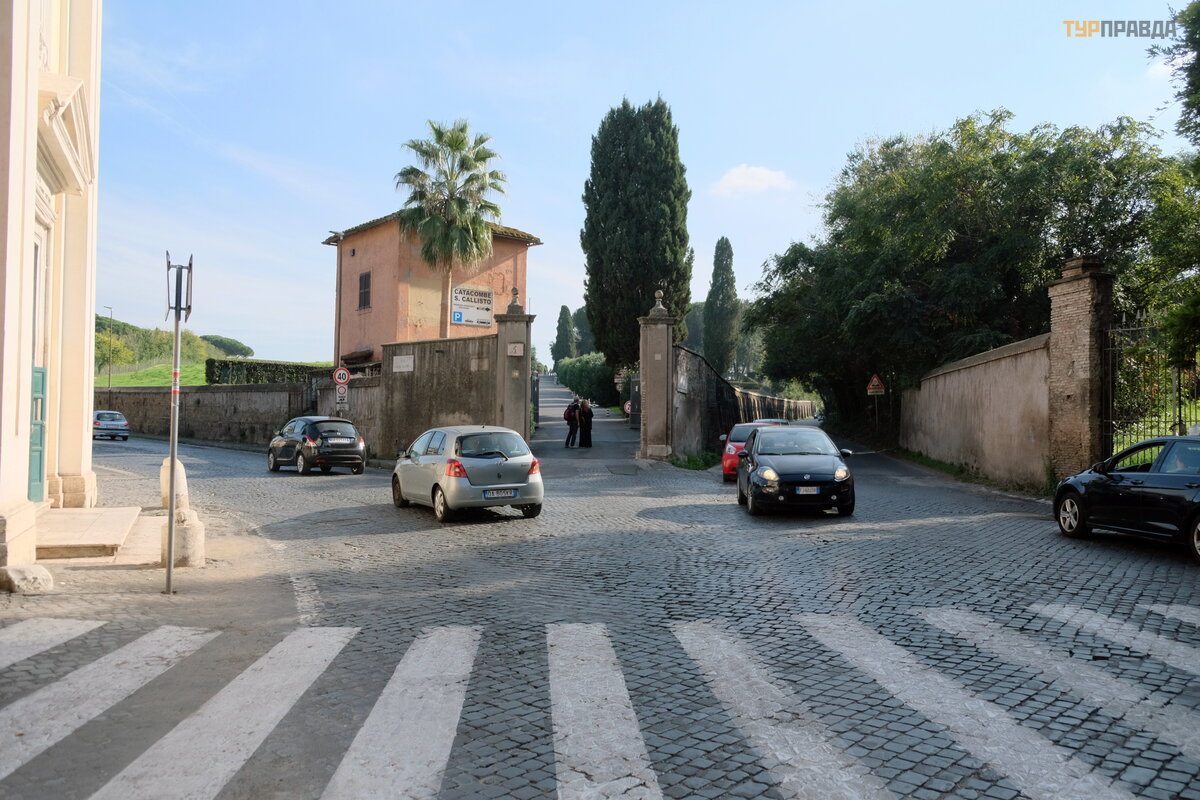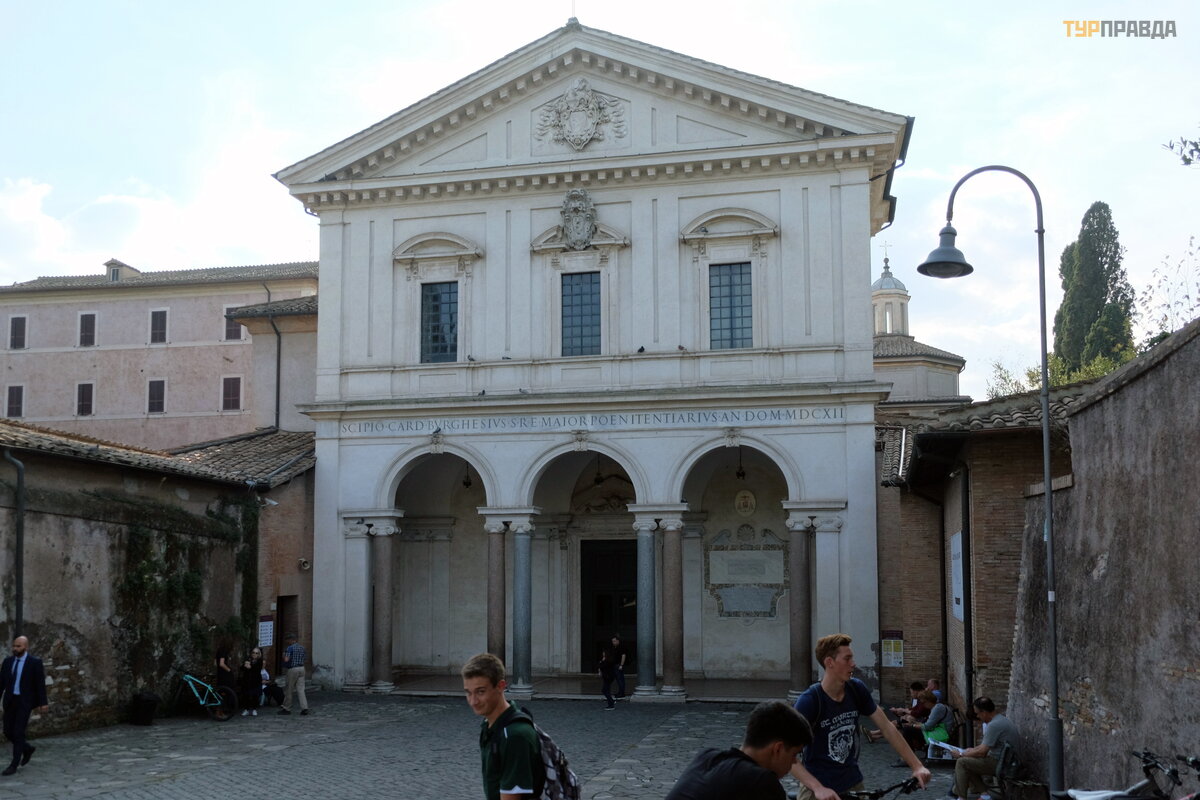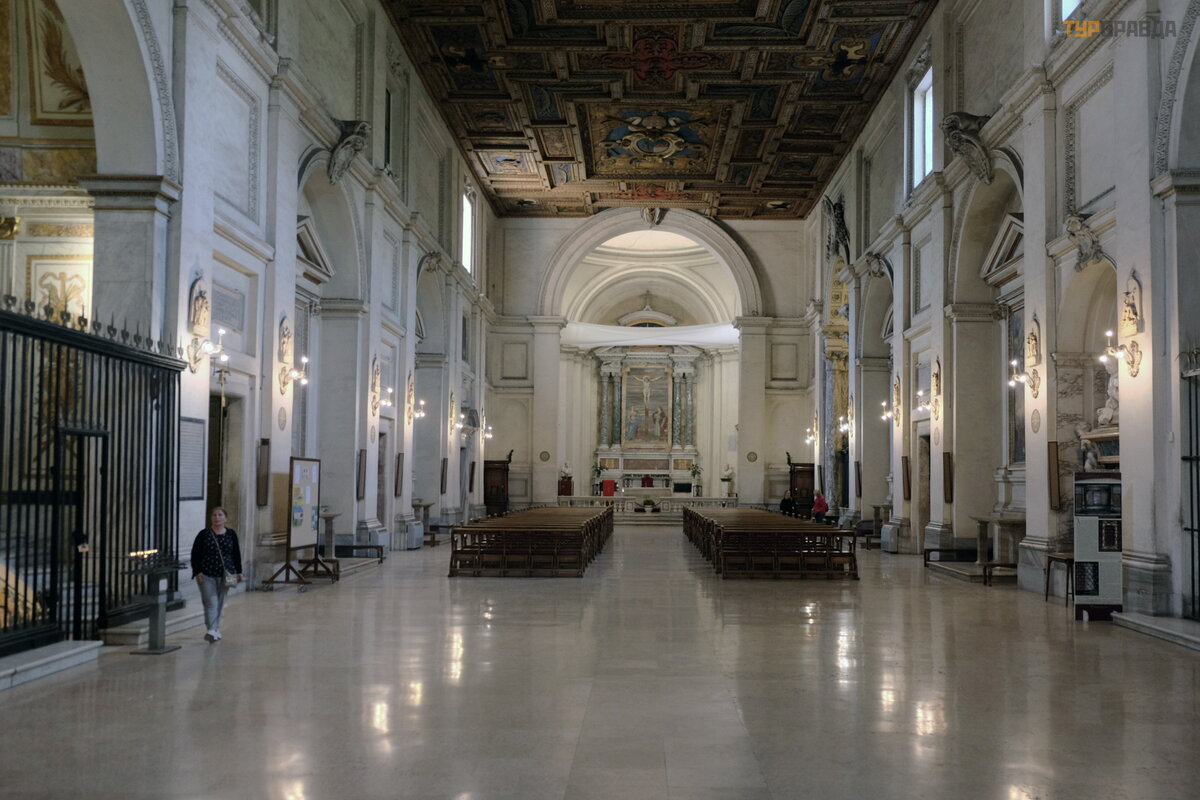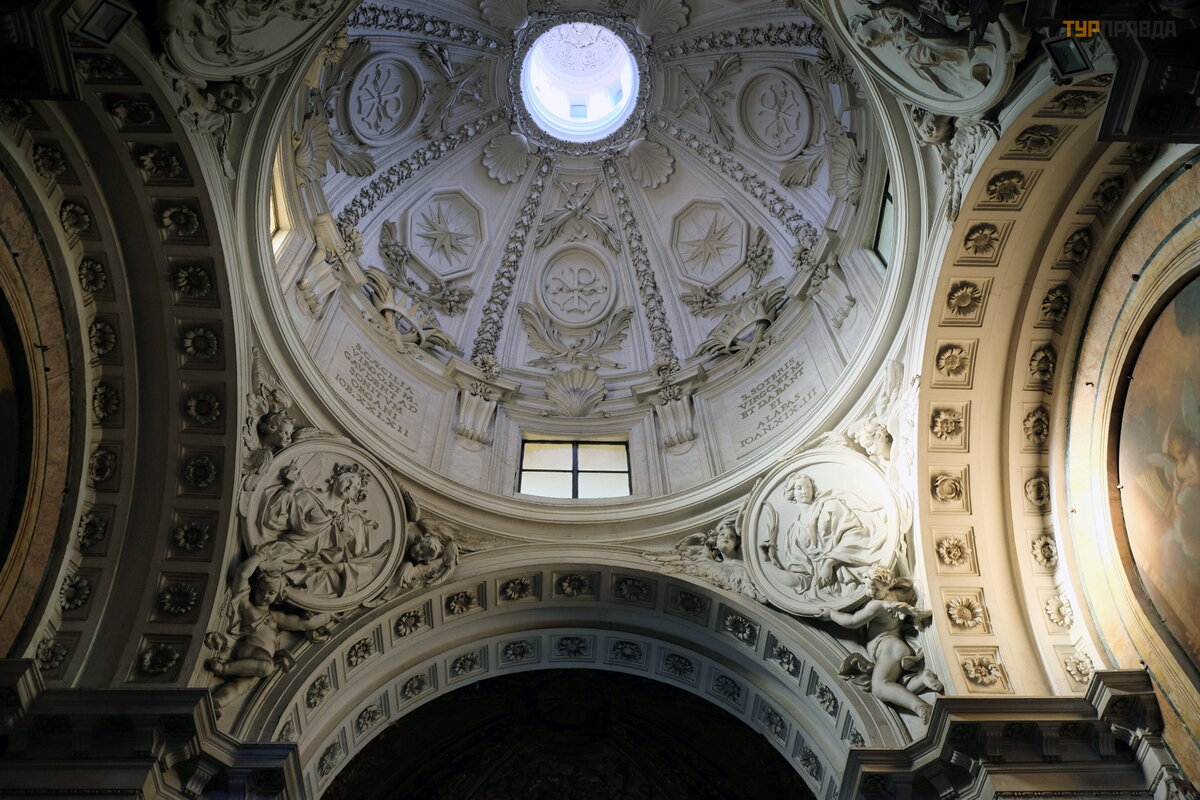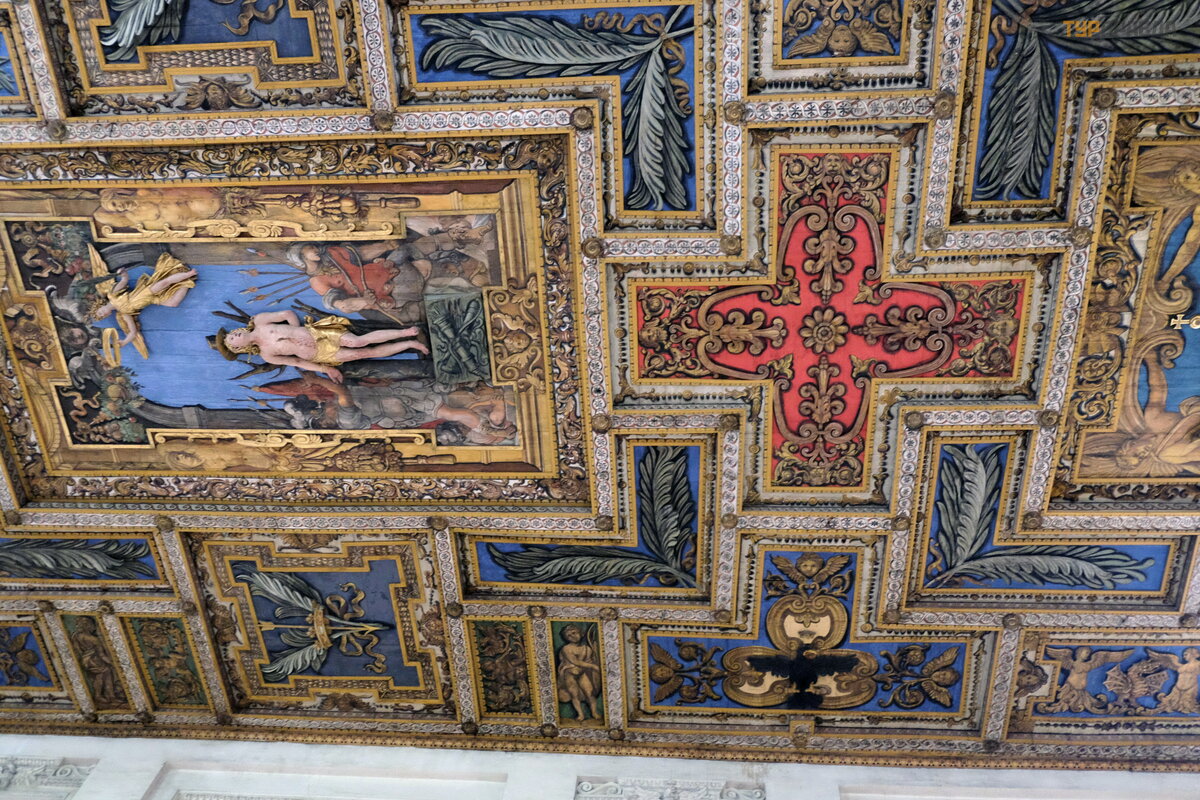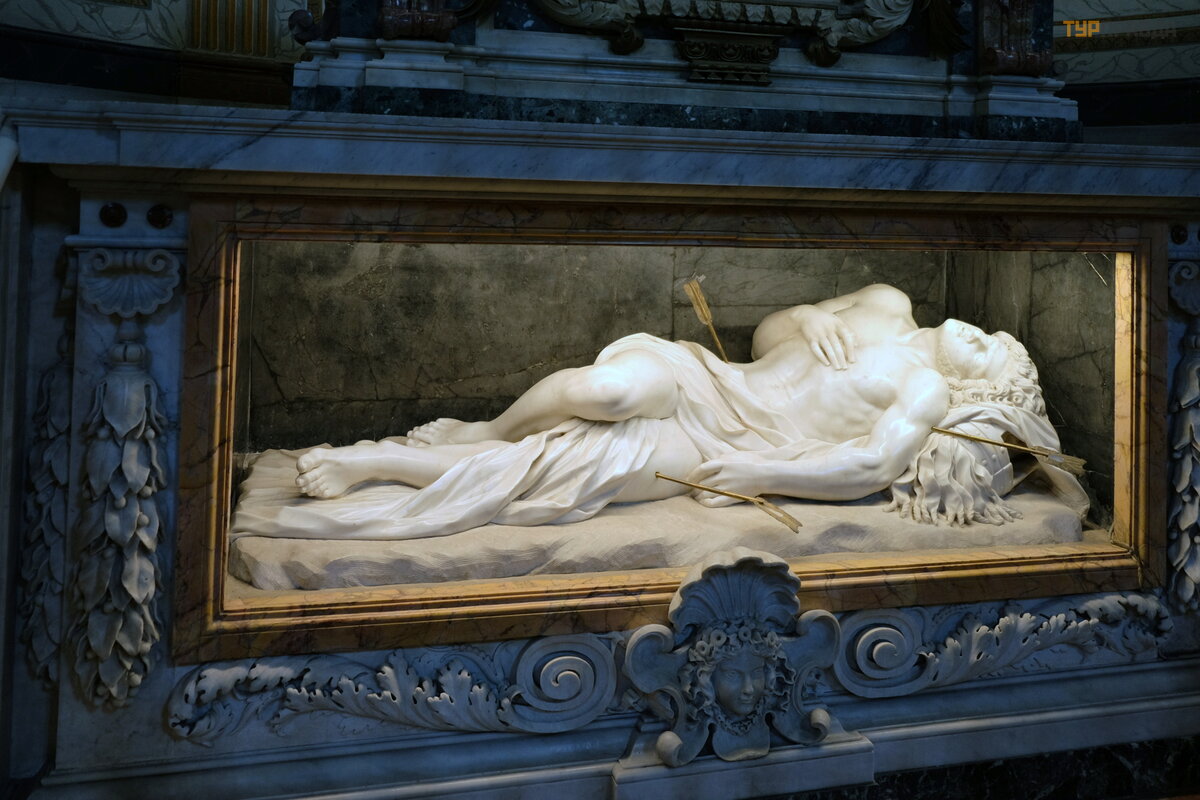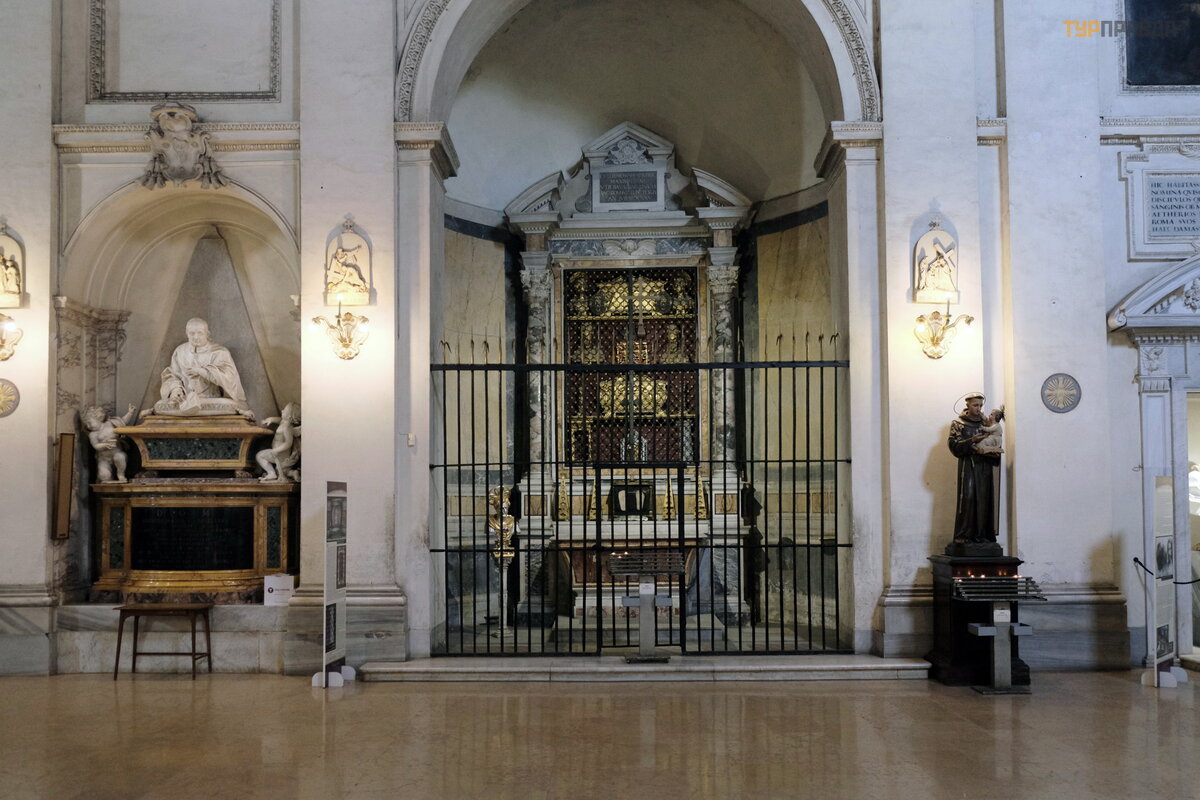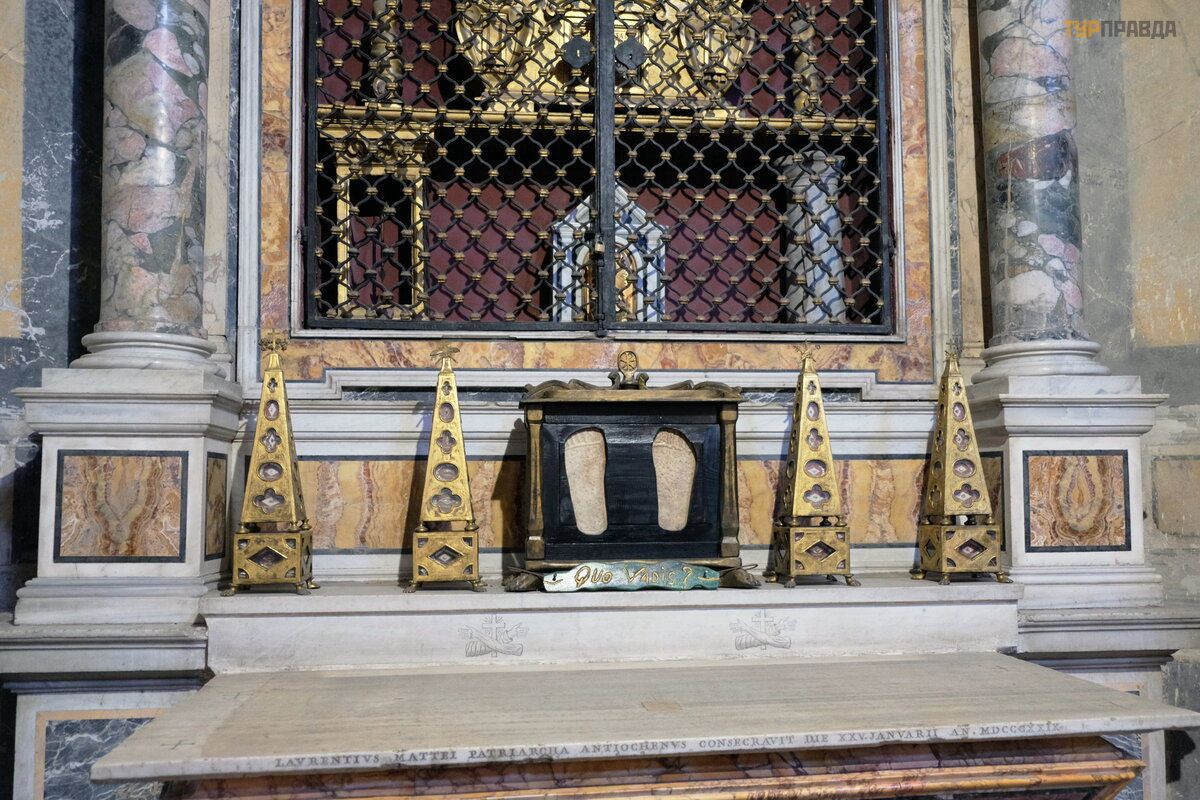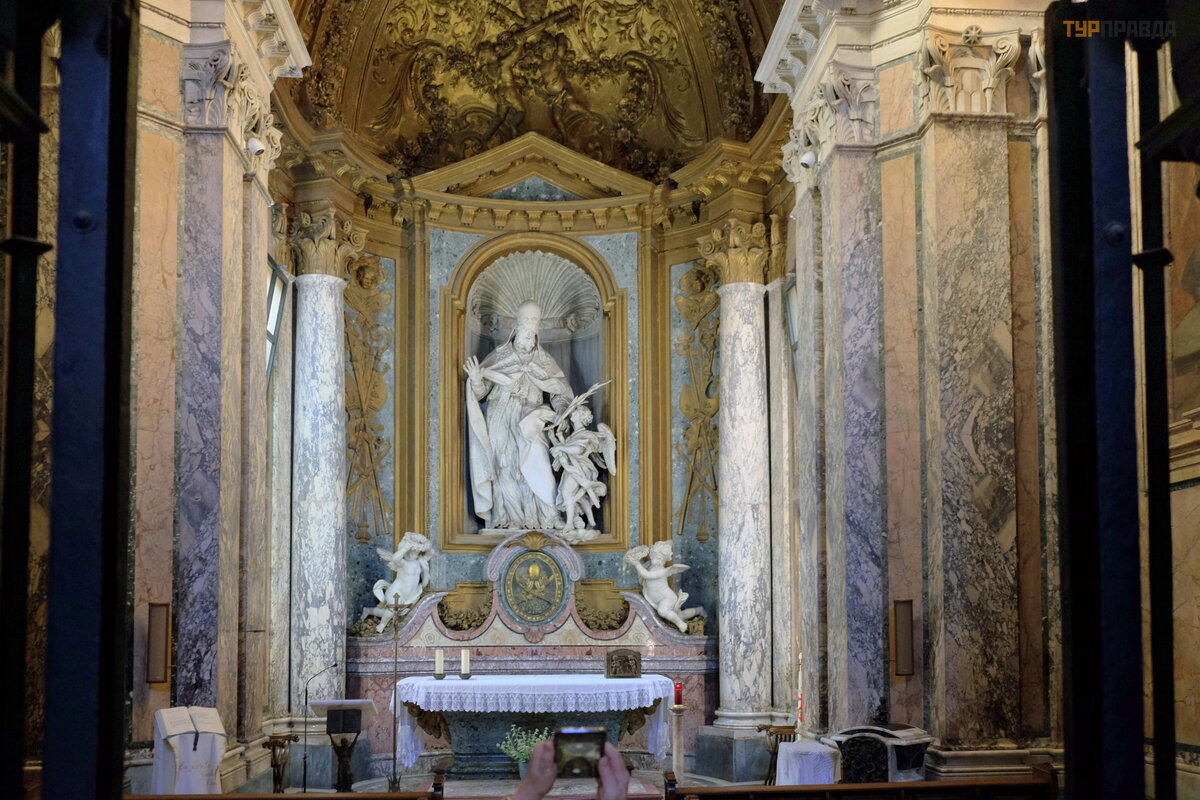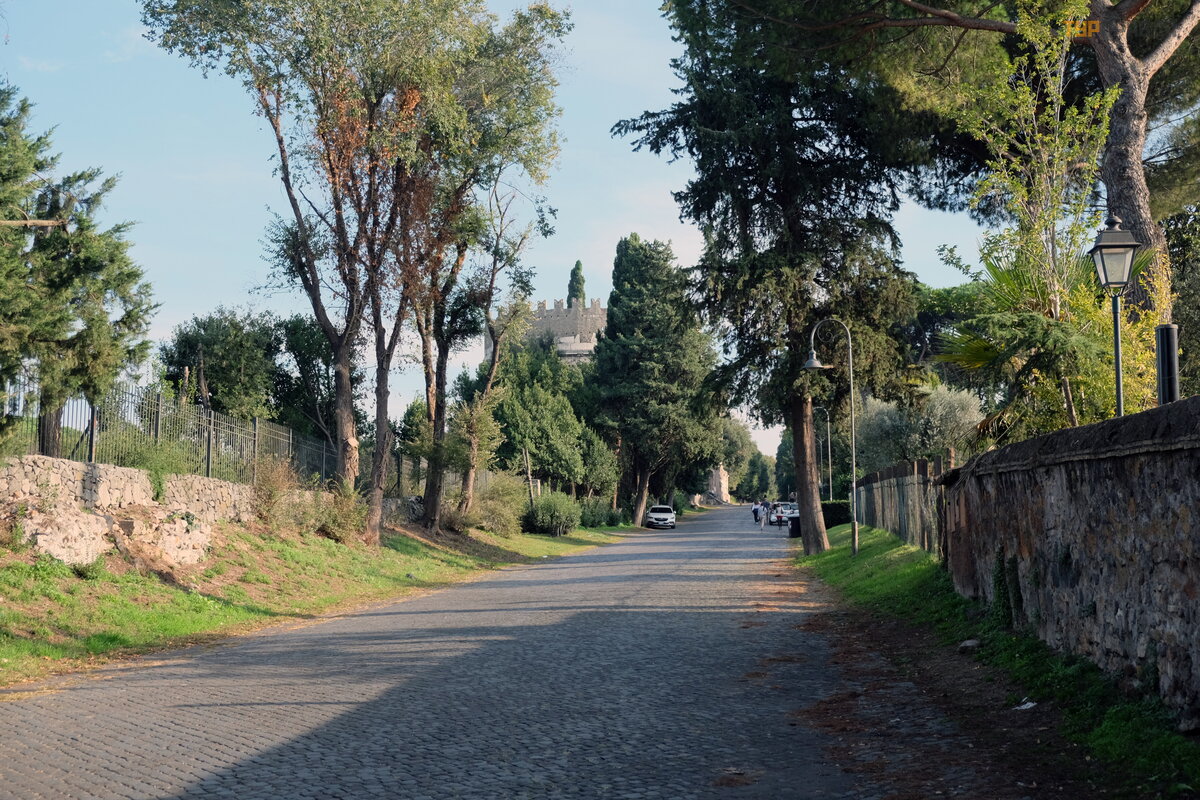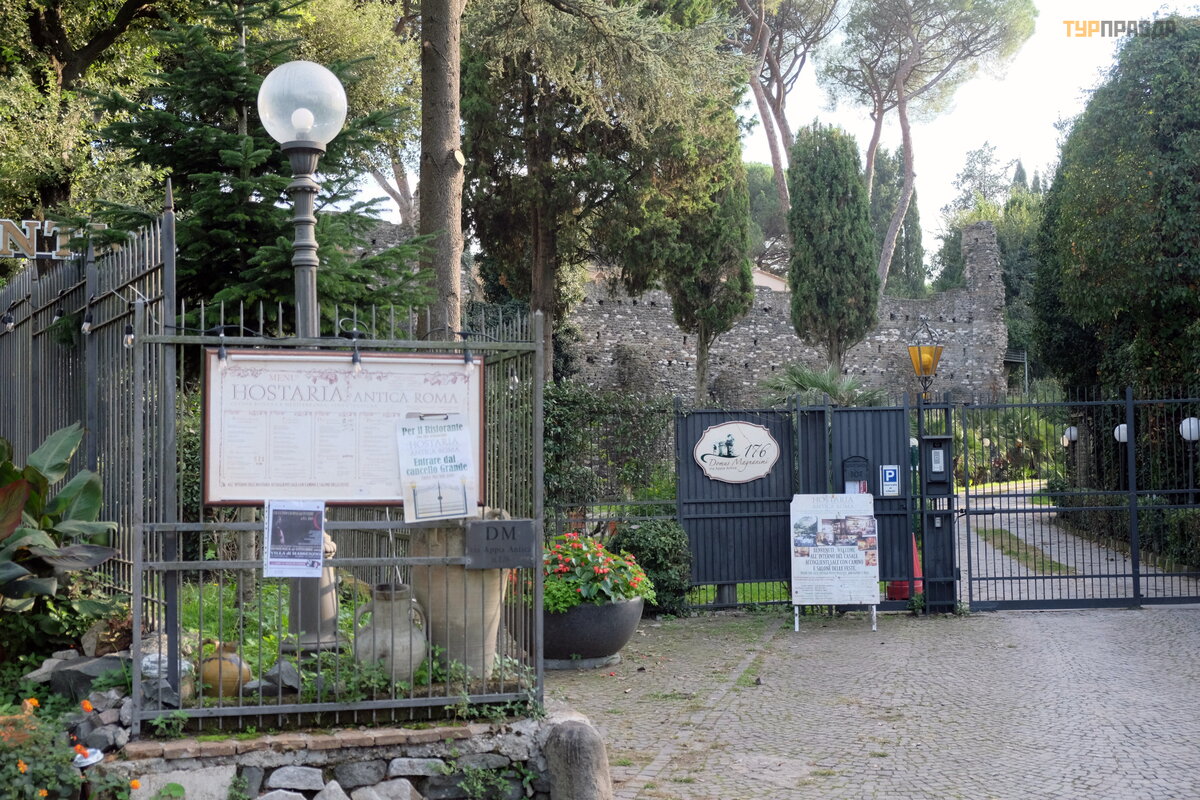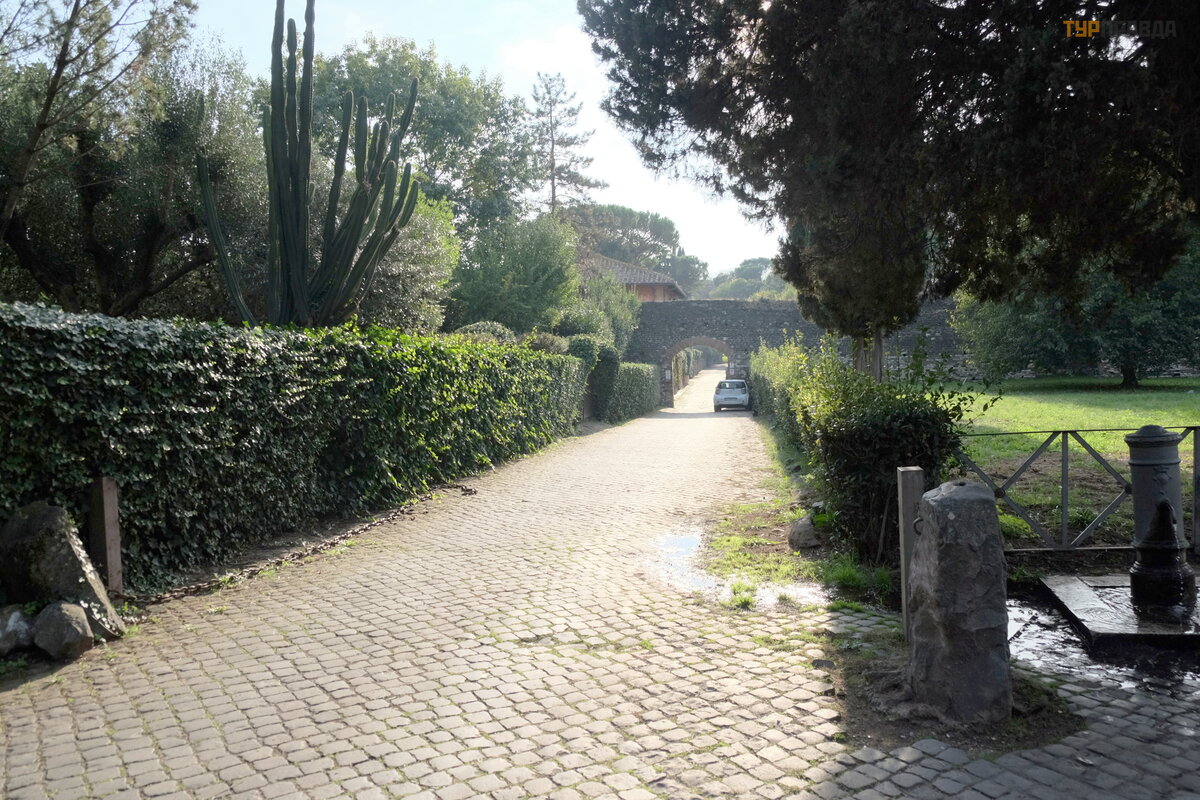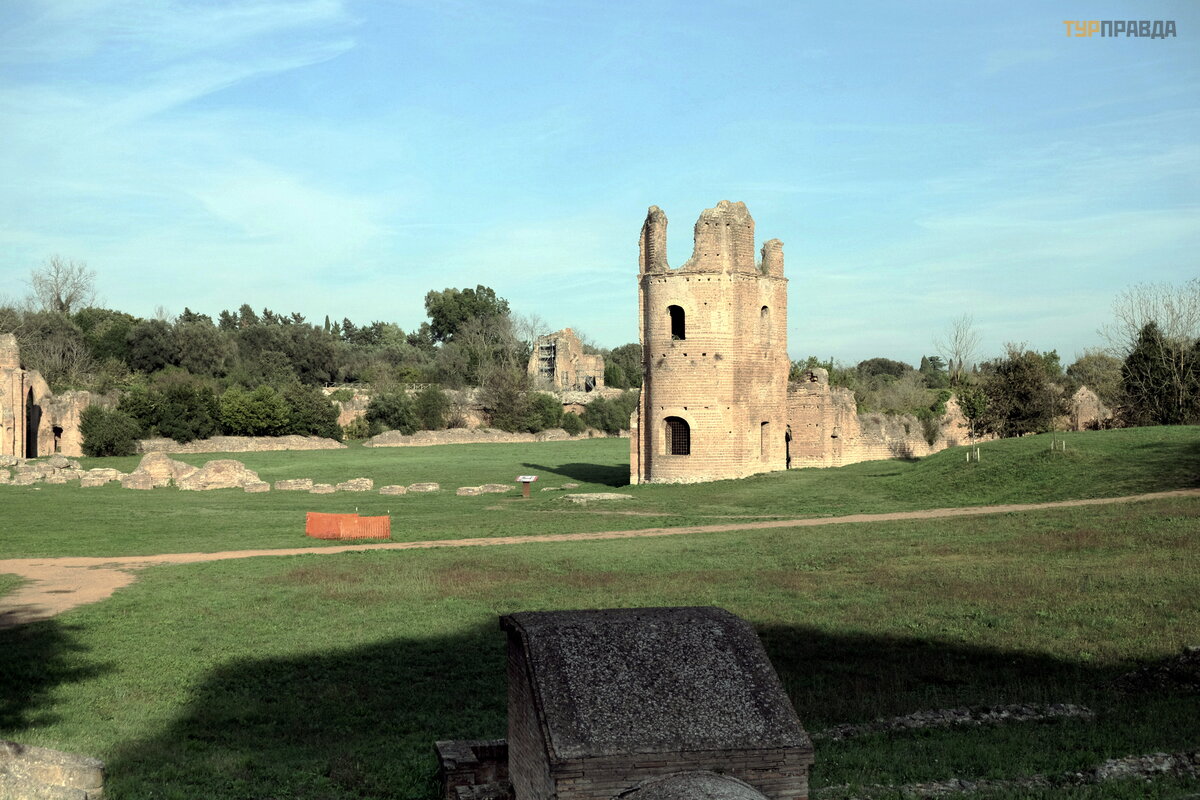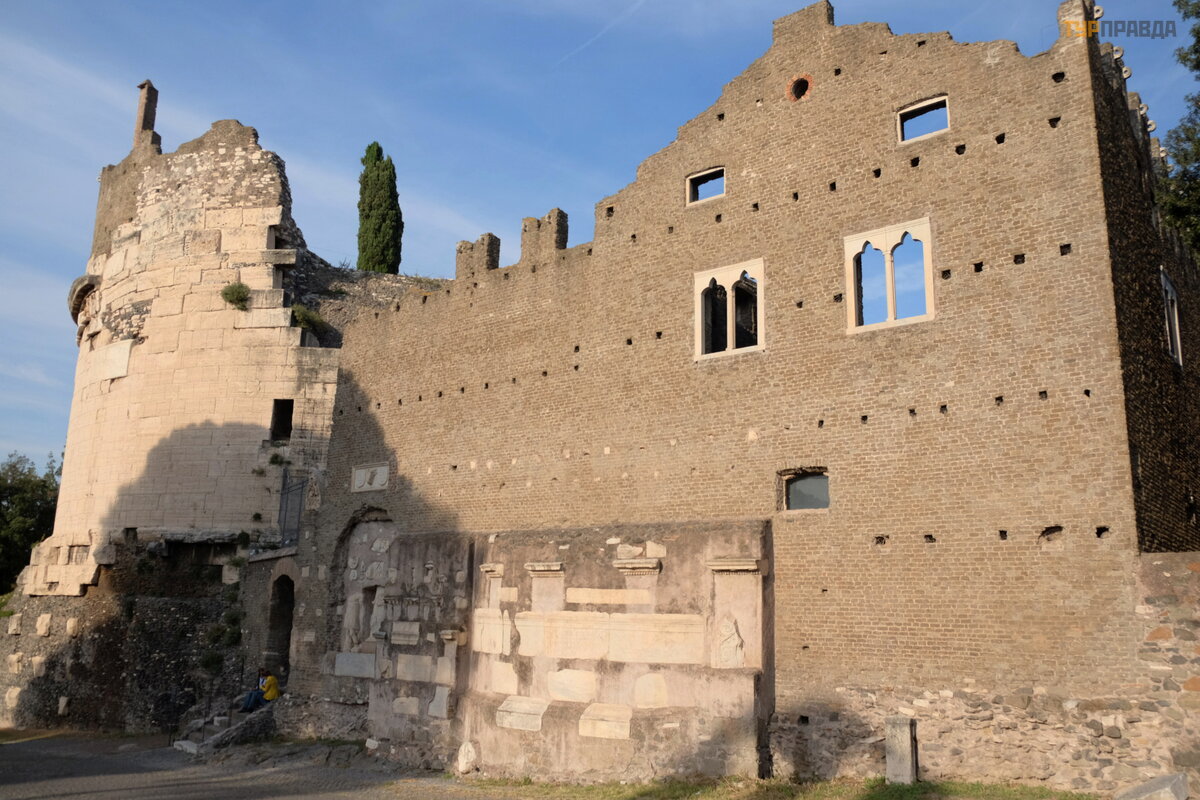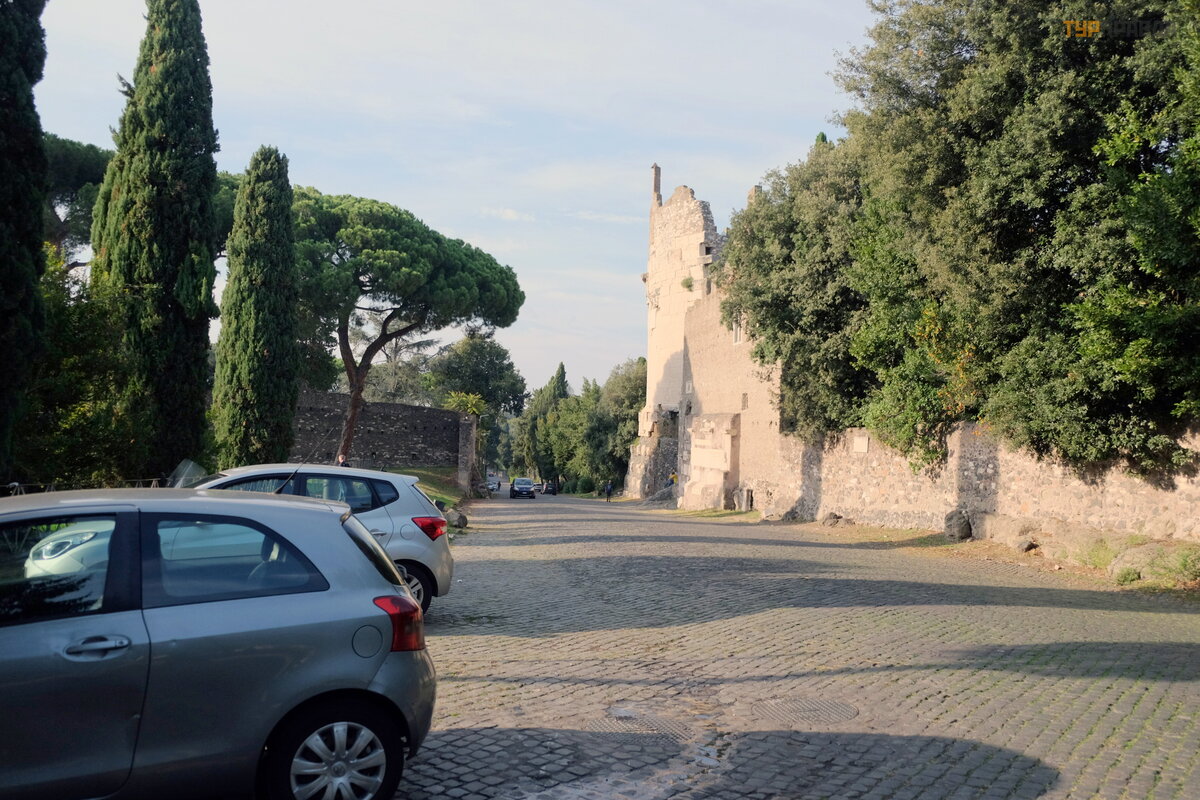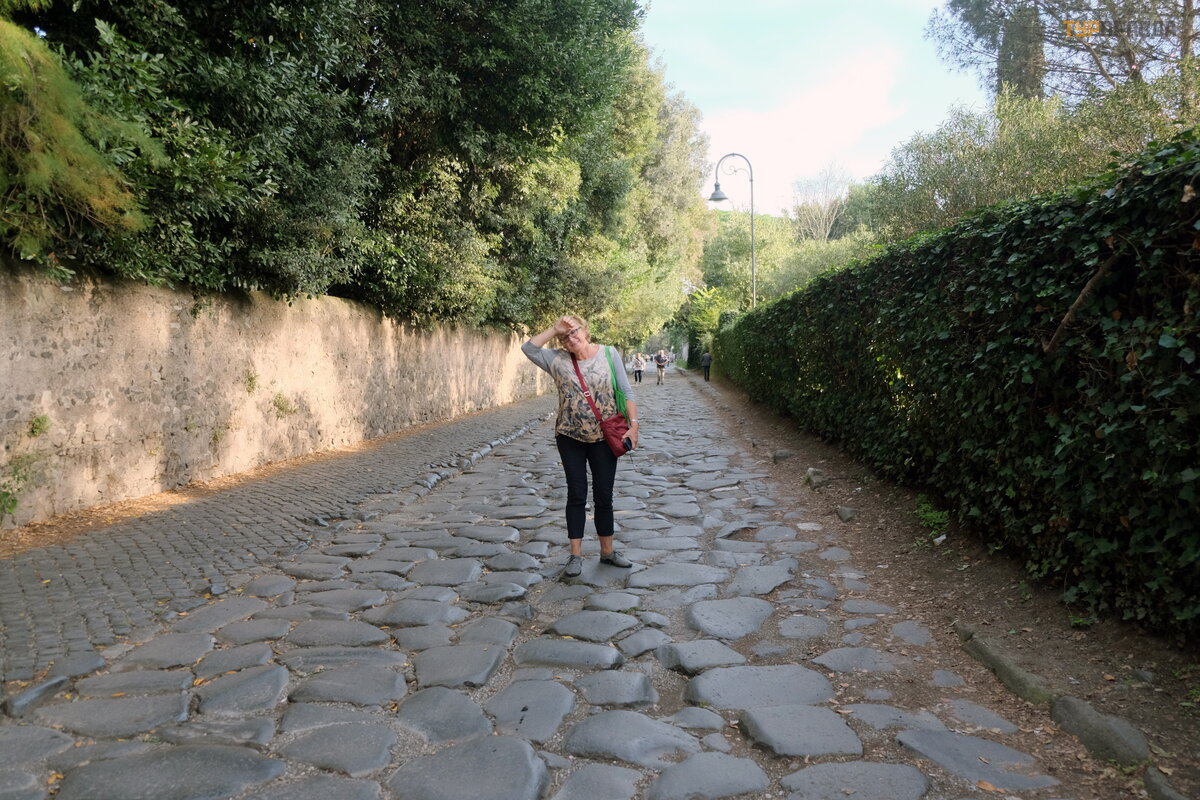Puglia and a bit of Rome. Part 12. Rome. Aventine and Appian Way

To be continued. Start here >>>
On this day, there was no clear plan for traveling around the city, we decided to walk around familiar places, and then - how it goes. The day turned out to be sunny, we walk along the covered galleries of the palaces encircling Vittorio Emanuel Square.
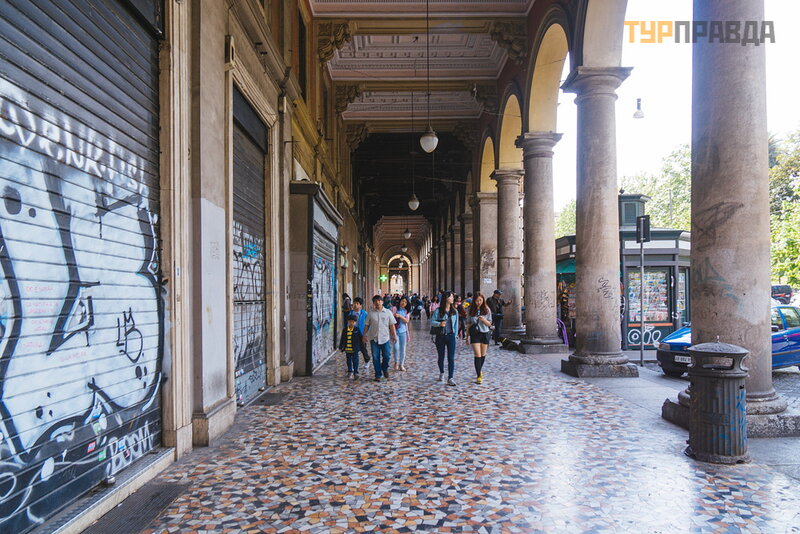
We pass by the Church of Santa Pudenziana:
Via Lanza leads to Via Cavour, a busy thoroughfare that connects Termini Station with the Roman Forums:
There are streets and monuments to Cavour, the first Prime Minister of Italy, in almost all cities. An ally of Garibaldi, he put a lot of effort into the unification of Italy.
This is the Borgia Staircase, which got its name from the house with an arch, where the passion of Rodrigo Borgia (aka Pope Alexander VI) lived, who bore him four children.
Previously, there was a street with the speaking name "Street of Villains", where, according to legend, the sixth king of Rome, Servius Tullius, was killed.
We go up the stairs to the square where the church of San Pietro in Vincoli is located (San Pietro in Vincoli) , i. e. "Peter in chains. "
The church was built in the 5th century, when the Byzantine Empress Eudoxia handed over to Pope Leo I the chains with which the Apostle Peter was chained in prison.
The church was rebuilt several times, the last time in 1475.
Peter's chains are kept under the altar:
Travelers from all over the world come here to see one of the most ingenious creations in the world - Michelangelo's Moses.
The “horns” on the head of the prophet are the result of an inaccurate translation of the Bible, since “horns” and “rays” are translated from Hebrew in the same way.
This is part of the tomb of Pope Julius II, because of which Michelangelo agreed to paint the Sistine Chapel. Initially, the project included about 40 figures and was supposed to be installed in St. Peter's Cathedral, on the tomb of the pontiff, but there was neither time nor money. As for the authorship of the rest of the figures, art critics are arguing, but it seems to have determined that the face of the reclining Julius II is also the work of Michelangelo.
We descend back to the ancient Roman forums and the Colosseum. I will not list historical sights, otherwise the whole book will turn out, just some photos.
I do not like the pompous Vittoriano complex, I consider it just an inappropriate building against the backdrop of historical buildings and relics, although many people think otherwise. Once our friend, with whom we were on a trip to Italy, said that he considered the Vittoriano the best building in Rome. To each his own.
On the other hand, we once again examined the magnificent complex of buildings (Giacomo della Porta, Rainaldi, Cavaliero, Longi) on Capitol Square, created according to the layout of Michelangelo.
We decided to go towards the Aventine Hill, rounded the Capitol from the rear along the narrow street of San Teodoro.
The street leads to the church of San Giorgio in Velabro (San Giorgio Velabro) - a church in Rome dedicated to St. George the Victorious, a Roman commander from Cappadocia, who was beheaded in 303 under the emperor Diocletian.
The head and sword of the saint are under the main altar:
The church appeared here in the 5th century, the modern basilica was built on the site of the original (682-683), currently San Giorgio is the interior of a classic Romanesque basilica of the 7th-9th centuries, with bare stone walls and floors. In the apse there is a single fresco dating back to about 1300 and attributed by various researchers to either Cavallini,
or Giotto.
In front of the Church "Arch of Janus" of the 4th century AD. e. :
Let's go to the Tiber, this is the Ponte Rotto Bridge. Broken bridge, the oldest stone bridge in Rome (142 BC). 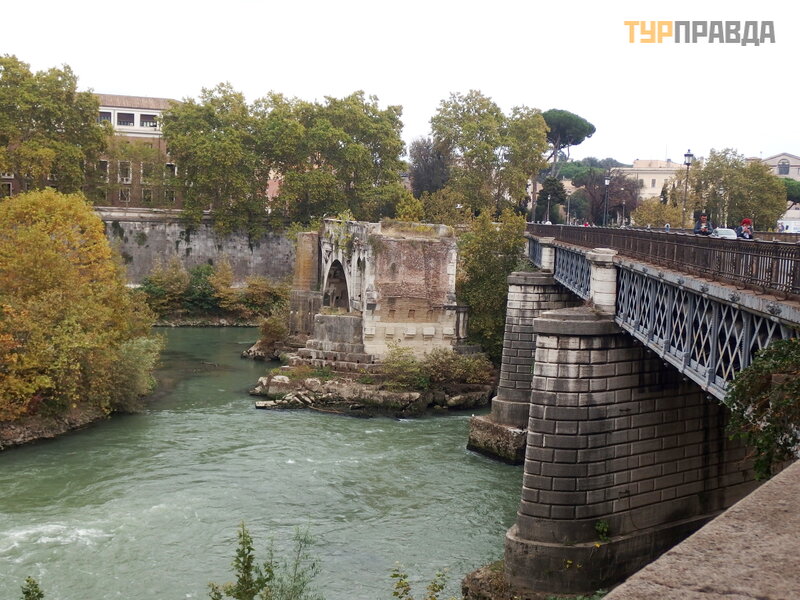
Damaged and repaired several times, the bridge existed until 1598, when its eastern end collapsed in a flood.
At this point, the so-called. "Big Cloaca", the great engineering structure of Ancient Rome.
You just admire - back in the 18th century, all the cities of Europe were suffocating from sewage flows, on the streets of cities, and in Ancient Rome from the 6th century BC. e. there was a sewer system that removed waste from public toilets, of which there were at least 144 in the 2nd century AD (most of them from 20 to 50 places), term,
city fountains, as well as household drains from private households. A large cesspool has been preserved and functions as a storm sewer to this day.
The sewer openings were closed with manholes, one of them, according to historians, is the very famous "Mouth of Truth" (I century AD), well known to everyone from the film "Roman Holiday". Since the 18th century, it has been installed in the portico of the church "San Maria in Cosmedin".
If you see a long queue (mostly Chinese) - then this is where everyone introduces himself as Gregory Peck, then Audrey Hepburn. Access to the portico is limited to the opening hours of the church, i. e. it is closed during the siesta.
The church itself was built in the 6th century on the site of one of the pagan temples, the current appearance of the facade was restored in the Romanesque style, the Belfry is the 13th century.
The Triton Fountain was built in 1717 by the sculptors Francesco Moratti and Filippo Bai by order of Pope Clement XI.
The church is famous for its magnificent 12th-century cosmatesco mosaic floor. Columns from ancient temples.
In the sacristy is a fragment of the magnificent mosaic "Baptism", moved from the old St. Peter's Cathedral.
The main relic of the church is the skull of St. Valentine decorated with flowers. The same saint, in whose honor every February 14, the feast of all lovers is held. 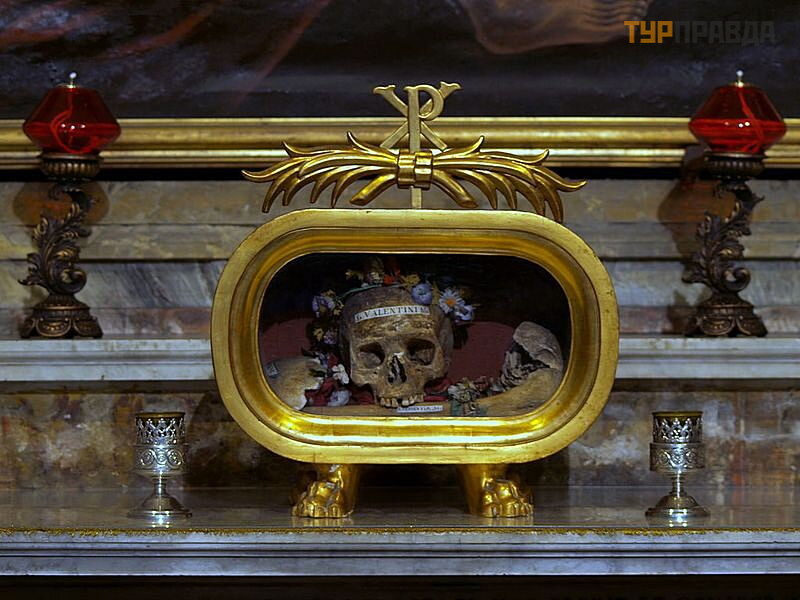
On the square, in front of the church near the river, there was the “Bull Forum”, the oldest (trading) forum of ancient Rome. Now there are ancient monuments in good condition.
Both buildings have come down to us in their entirety due to the fact that they were used as churches and later additions were removed only in the 20th century.
Marble "Temple of Hercules", 120 BC. e. :
And the "Temple of the Portun", 100 BC. e. :
After a short break for lunch, we climb the Aventine Hill, where several roads lead, but we went along the old picturesque street Clivo di Rocca Savella.
Once upon a time, the plebeians of Ancient Rome settled on the hill, and now it is a prestigious green area, far from the crowds of tourists who usually do not go beyond the Cavalieri di Malta square.
On the way to the square, there are two churches very revered by Christians.
Church of St. Sabina Santa Sabina (Santa Sabina all’Aventino) is the main church of the Dominican order. The original building in 422-432. In the VIII-IX centuries. it was partially rebuilt, while maintaining its original appearance.
Windows made not of glass, but of selenite, thanks to which, even on the brightest sunny days, subdued light reigns in the basilica. The church has 24 columns from the ancient temple of Juno Regina, which appeared as early as 400 BC.
A fresco depicting Christ's Sermon on the Mount. It was created by Taddeo Zuccaro in the 16th century.
Madonna di Sant'Alessio or Our Lady of "Edessa". One of the most revered among Christians, considered miraculous,
in connection with which it attracts a lot of pilgrims from all over the world. According to church tradition, the icon was painted by the Evangelist Luke.
And this black stone on the column, according to legend, was thrown at St. Dominic by the devil himself, but missed.
The cypress wooden door is the oldest in Rome, the first half of the 5th century. The reliefs depict scenes from the Old and New Testaments.
Behind the church is the entrance to Savello Park or the Orange Garden. It is believed that the very first orange tree in Rome was grown by St. Domenic in 1220.
The panorama of Rome from here is magnificent:
There is another interesting sight at the entrance to the orange garden - an ancient mask fountain.
His bath has been preserved since ancient times, and the mask attached to the wall was made by Giacomo della Porta.
Nearby is another notable church of San Alessio ("Saints Boniface and Alexei the Man of God"). Founded in the 5th century, the current facade is from the 17th century, the bell tower is from the 12th-13th century.
The main shrines of the temple are the relics of Saints Boniface and Alexy, resting under the main altar in a marble sarcophagus.
St. Alexis Chapel, which is a single composition made by Andrea Bergondi in the second half of the 18th century. Its central element is a sculpture depicting the dying Alexis, dressed in the clothes of a pilgrim. Above it you can see a gilded wooden staircase.
In a small building in front of the church, there was a canteen for the needy.
Where did this queue line up?
And this is the main tourist "trick" of the area - "Holy Hole" ((Santo Buco), view through the keyhole of the gate of the residence of the Order of Malta in Rome.
According to the project of Piranesi, who built the residence, a special hole was made, from where three states can be seen: the Order of Malta (which owns the residence of the Order), the Vatican (St. Peter's Basilica) and Italy (which includes everything in between).
I read that you can somehow get into the residence itself, but now it’s closed for the second time.
To the left of the square is a large new building complex - the Pontifical University of Saint Anselm.
This is an International Benedictine University that offers courses in Philosophy, Theology, Theology, History of Religion, Liturgical Music and Poetry!
On the territory of the Church of Sant'Anselmo, a building of the late 19th century.
Monument to Alessius of Canterbury, 12th century Catholic theologian.
There is another old church of San Sabba on the Aventina, we visited it on our previous trips.
Then we decided to see the Appian Way, went down the hill to Circus Maximus - "The Great Circus".
The Circus Maximus in Rome is located in a picturesque valley, between two of the seven hills on which the city is built,
Palatine and Aventine.
At this huge hippodrome, twelve chariots could compete for the right to be called the best at once. The valley itself is huge: its length is 600 meters and its width is almost 150 meters. Thanks to such a huge area and convenient location, the ancient Romans, who loved spectacles no less than delicious food, decided to build a gigantic, even by modern standards, circus here.
By order of Gaius Julius Caesar, Circus Maximus was detuned to incredible proportions. Incredibly, in addition to the permanent lodges for the nobility, 250 thousand plebs could watch the races while sitting, exactly the same number (! ) There were standing places. The last mass equestrian race took place in 549. After that, the Circus Maximus of Rome began to decline.
“And piece by piece, piece by piece they plundered the brick factory, ” so the Romans plundered the stadium for materials.
In the Middle Ages, there were agricultural lands here, buildings from which only the Torre della Moletta ("Mill Tower") remained, before there was a stream flowing here and there was a mill - in the picture below on the right. To the right are the ruins of the palace on the Palatine Hill.
We reached the Baths of Caracalla.
Already in the 5th c. n. e. The Baths of Caracalla were considered one of the wonders of Rome. The grandiose complex of buildings occupied an area of .11 hectares. People came here not only to wash off the dirt, they rested here. Baths for the poor were of particular importance. No wonder one of the modern scientists called the terms the best gift that the emperors made to the Roman population. The visitor found here a club, a stadium, a recreation garden, and a house of culture.
Today, this grandiose complex is a popular tourist attraction in Italy. In its center is a large slab,
which often hosts concerts of the most famous opera singers and folk artists. They can be watched by 8000 people, which is exactly the number of seats provided in the auditorium equipped in a modern way. It is worth noting that the stage in the terms is the largest in the world, it is 22 meters long.
The visit to the thermal complex was left for the next time, we go to Porta Adreatina, the gate of the Aurelian wall. Not a single person came across along the way.
To the gates of the Appian road began at another gate - San Sebastian, so we headed there along the wall.
Saint Sebastian's Gate (Porta San Sebastiano, also Porta Appia) is the largest and best preserved city gate of ancient Rome. In the 5th century, for security reasons, it was rebuilt up to 3 floors and one passage, two towers and battlements were completed.
Then we made a mistake that I would not advise anyone to repeat. The Appian Way, although called Appia Antica, has been preserved in excellent condition, and there is quite a busy traffic along it. It was necessary to get part of the way from the gate, from the gate to the church of San Sebastian by bus, but we went on foot.
The road for the first mile is like this, along the walls without sidewalks, so when cars come, you have to snuggle up to the walls of buildings. They say that traffic is closed on Sundays, but it was Monday.
There certainly were no two Russian troubles in Ancient Rome. Since there were no fools there, and the roads were excellent.
The first sight on the road was the church "Domine Quo Vadis? " (Lord, where are you going? ).
The one-nave church was founded in the 9th century,
was completely rebuilt in 1637.
According to legend, in this very place he appeared before the Apostle Paul when he was returning to Rome for execution. Paul asked Christ the very question that became the name of the church. A piece of marble with a copy of Christ's footprint is kept under a metal grate (the original is kept in the Basilica of San Sebastiano).
Along the road are the catacombs where the first Christians of Rome found refuge.
Entrance to the catacombs of San Callisto. These are the largest Christian catacombs in Rome, which were used for burials in the II-IV centuries.
The buses stop and make a circle at the church of San Sebastiano Fuori le Mura ("Saint Sebastian outside the city walls"). Founded in 340, current faç ade from 1612, one of the seven churches of Rome,
relating to the episode “Domine quo vadis? ”, described in the Bible and happened in these places. One of the arrows that struck St. Sebastian and the column to which he was tied during the execution are also kept here.
Masterpiece by Antonio Giorgetti (1672), designed by Gian Lorenzo Bernini. This is a funerary monument, which is located under the altar of the chapel. Also interesting are many elements of the chapel, which were transferred from the ancient catacombs.
Nearby is the entrance to the catacombs of St. Sebastian. There is also a nice cafe where you can take a break.
Further on, the pedestrian section of the Appian Way with the burials of the families of the imperial families has already gone.
Villa di Massenzio - or rather, the ruins of red brick buildings on a grassy field. The first buildings on this site appeared in the 1st century BC. BC e.
The tomb of Caecilia Metella, daughter of the consul, was built around 50 BC. e.
I didn't want to go further, because we were pretty tired, the bus came up. We didn't care where to go, as long as we got to the subway. Twenty minutes later we reached the station "Arco di Travertino".
Further, the trip to the sights of Rome ended that day, because we decided to go to the Panorama hypermarket to buy gifts and products home. On one of the group tourist tours, we had a hotel near the Pietralata metro station, a hypermarket right from the metro exit. Since then, every time we go there, it's very convenient.
On the way back, the metro train suddenly stopped at the Castro Pretoria station and everyone was taken outside. It turned out that there was another strike in the metro. It’s good that it’s not far from Termini, we drove from there to the hotel by tram. Therefore, it is necessary to check the scheme of proposed routes with the time of strikes, they are known in advance and the information is published.
Continued here >>>
